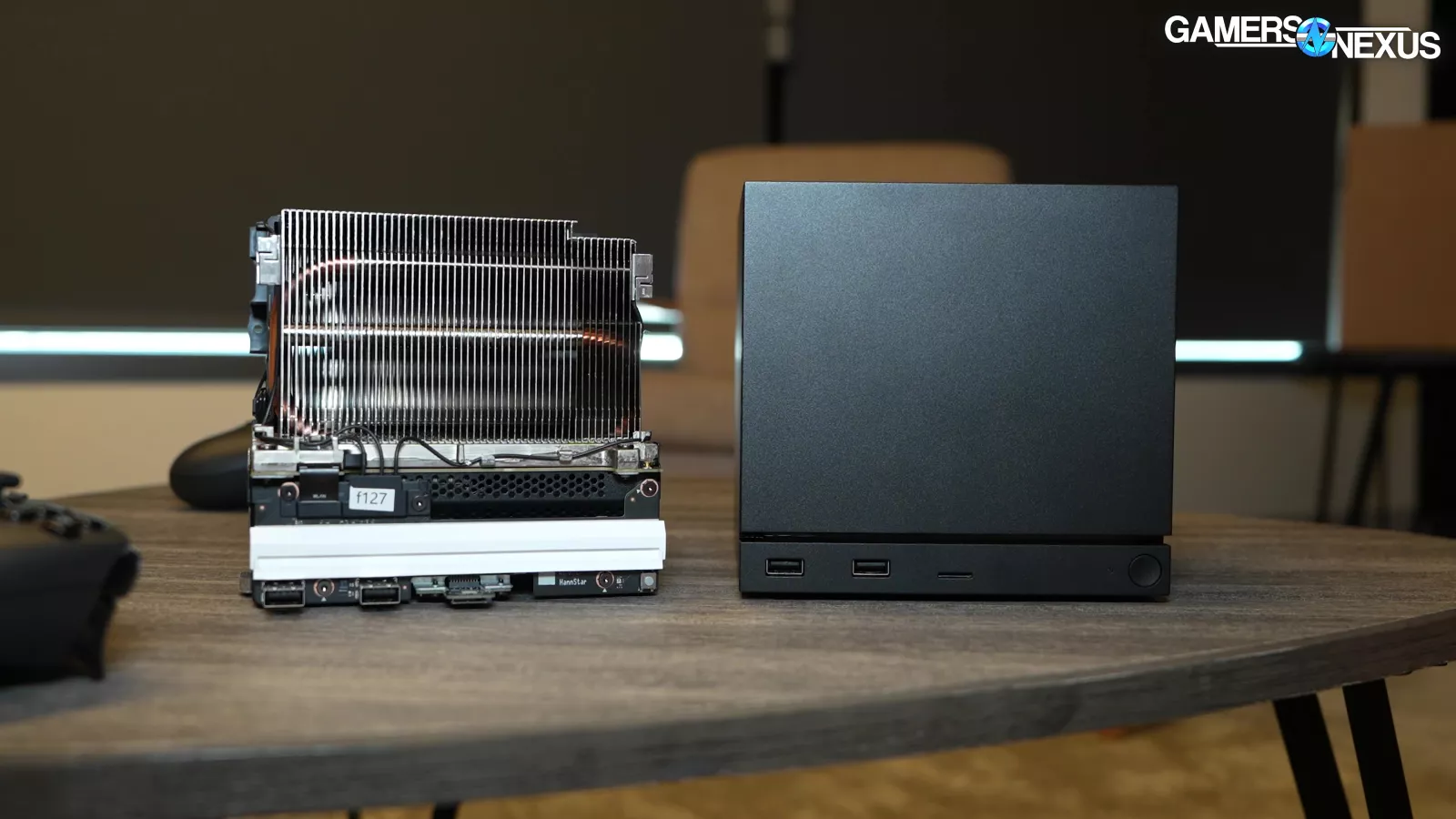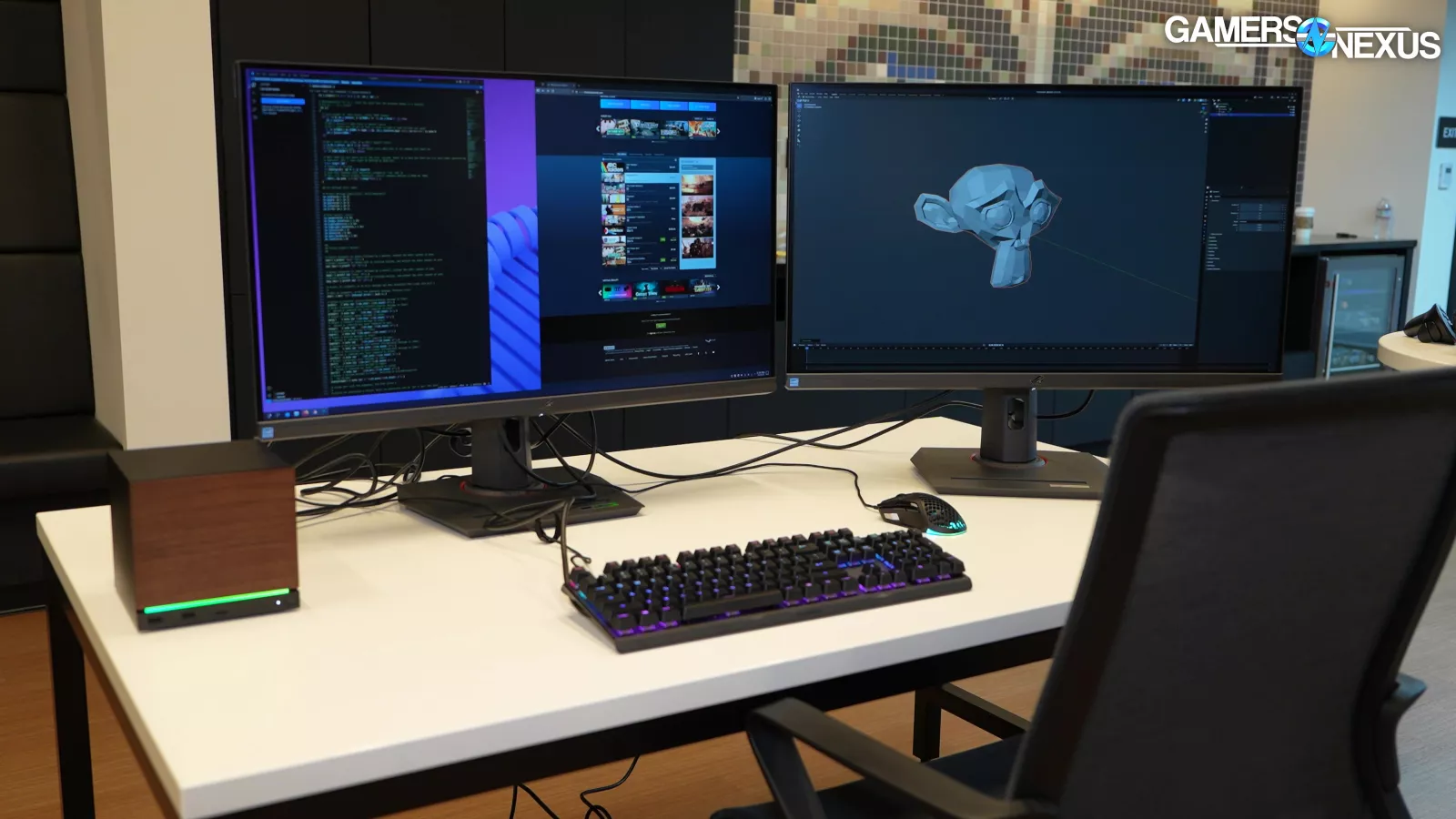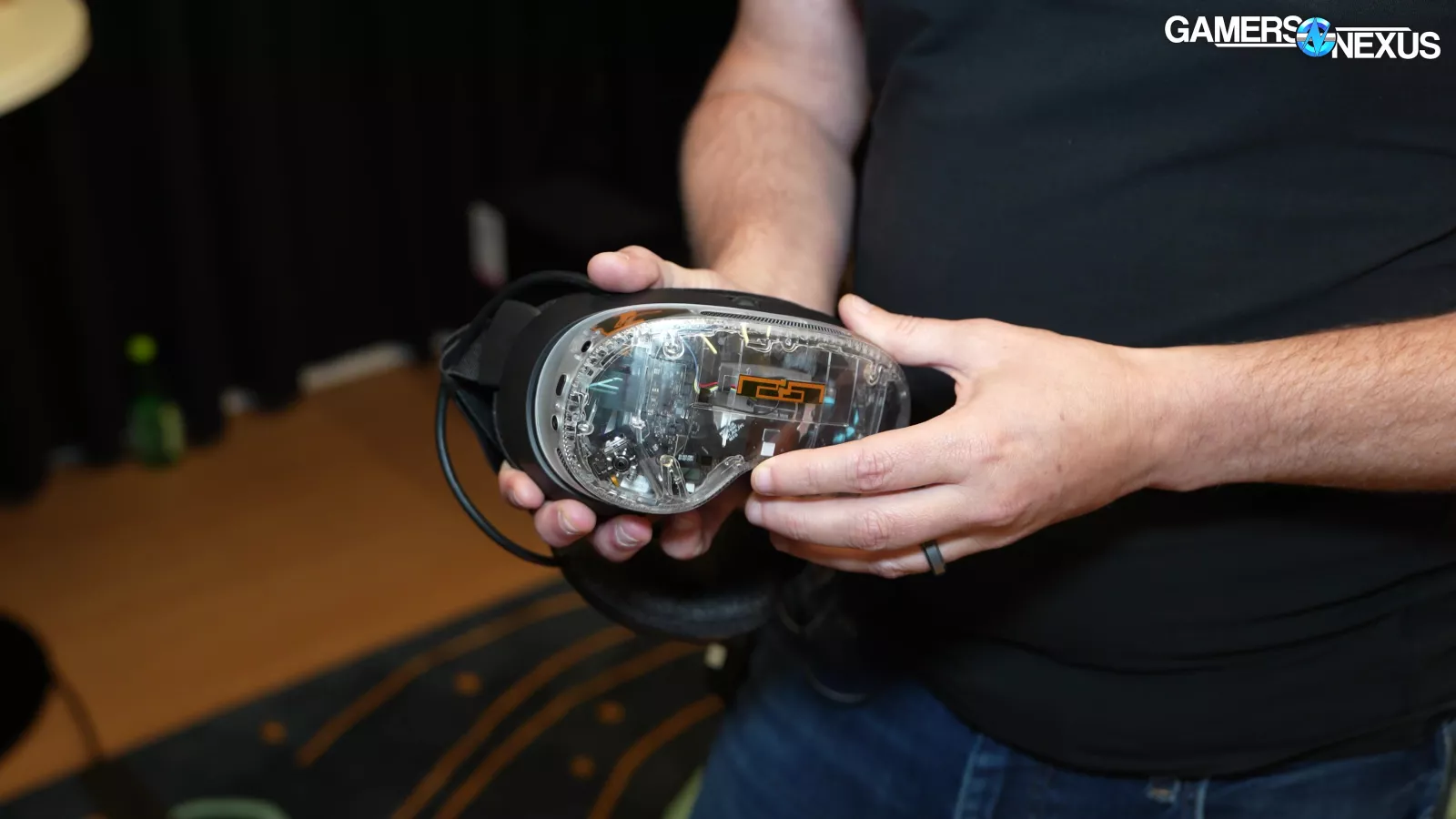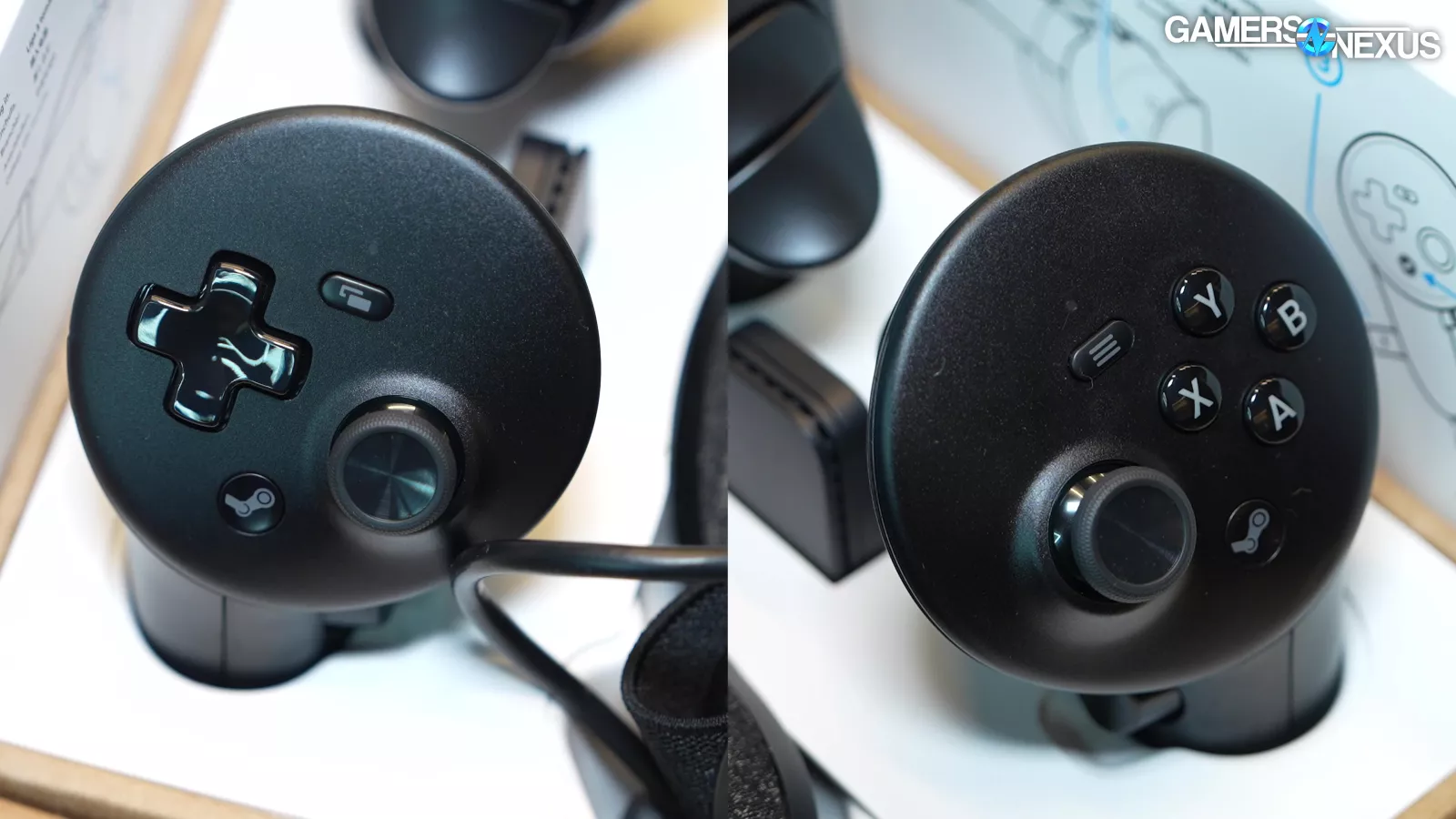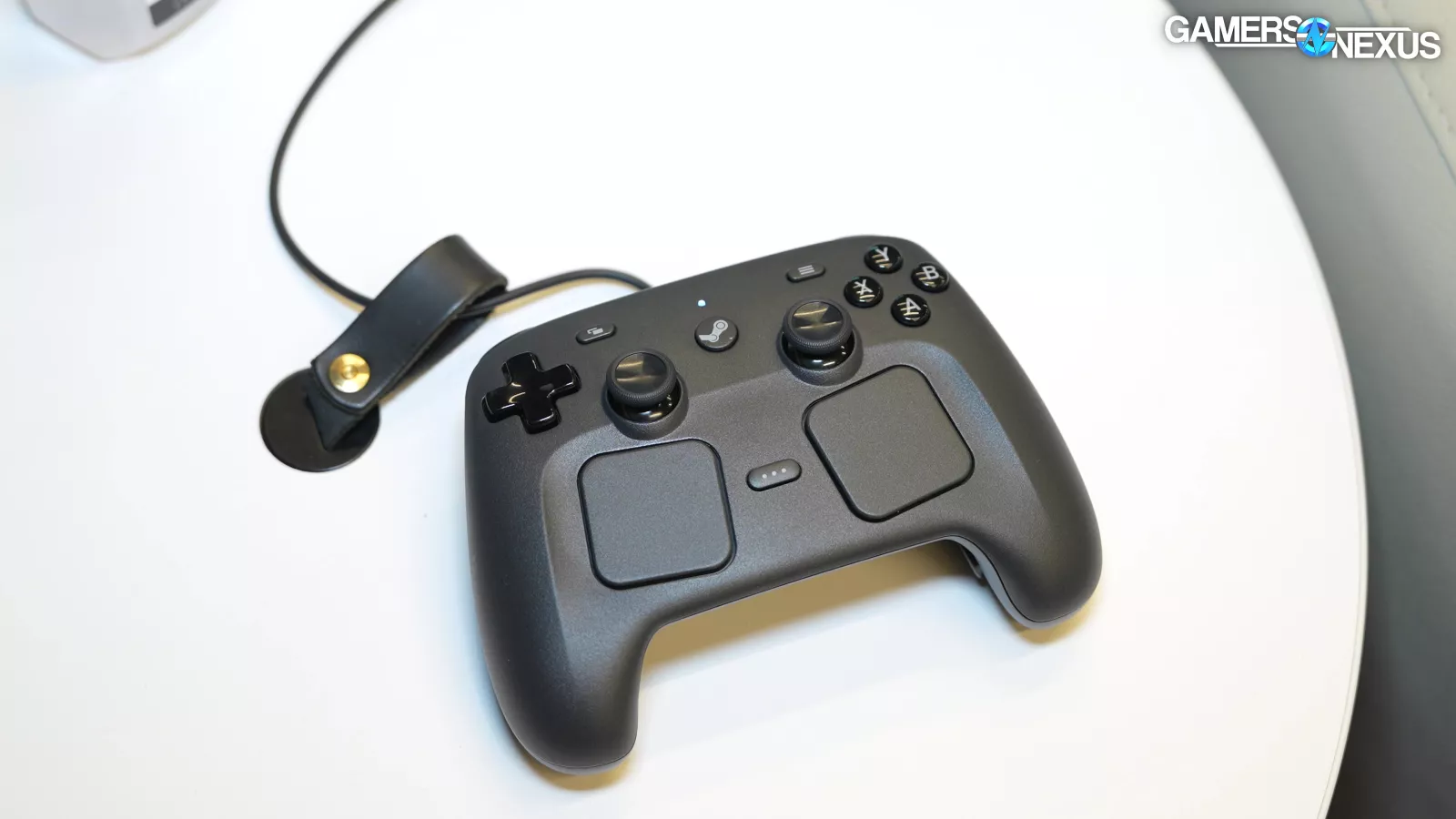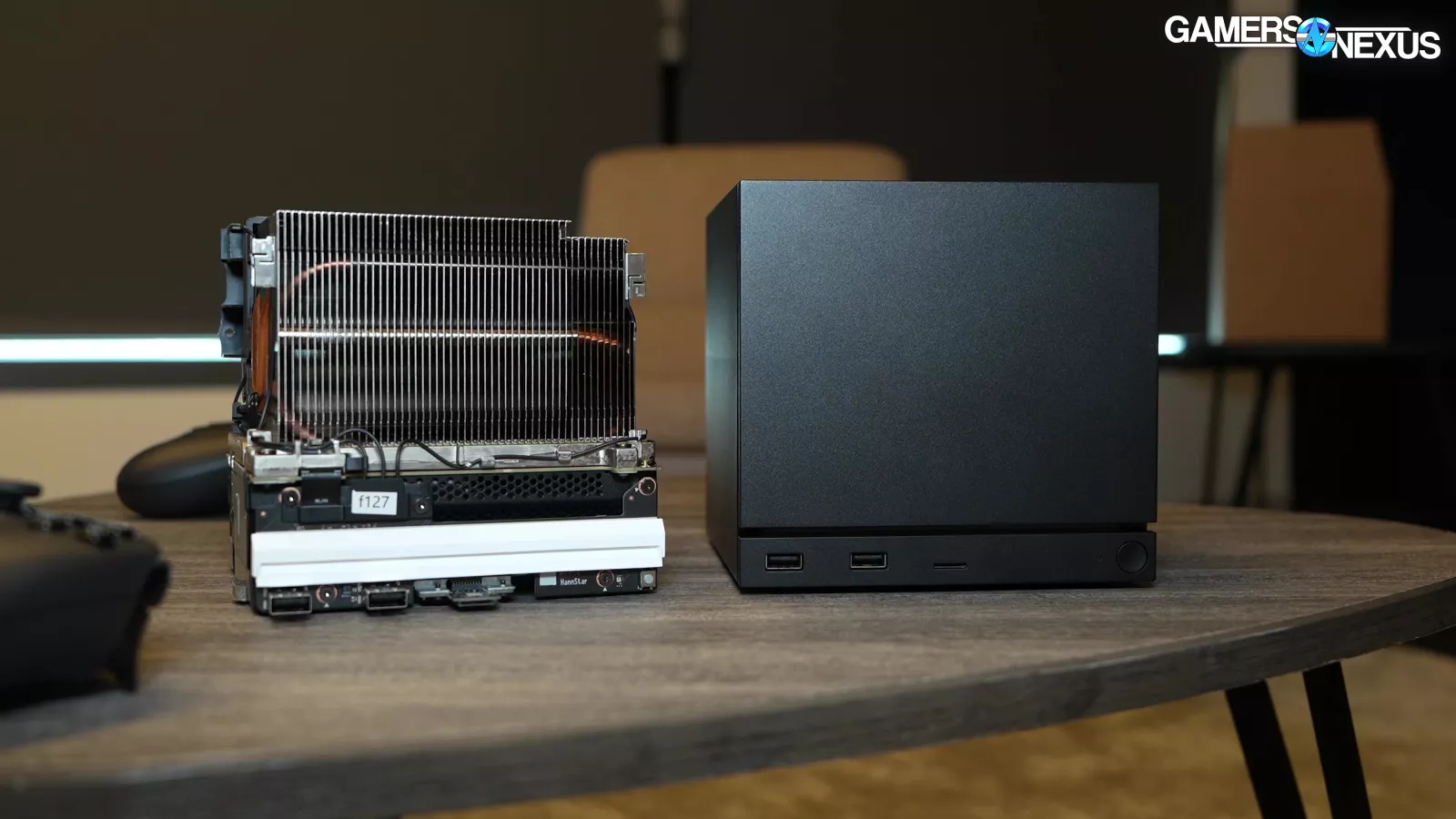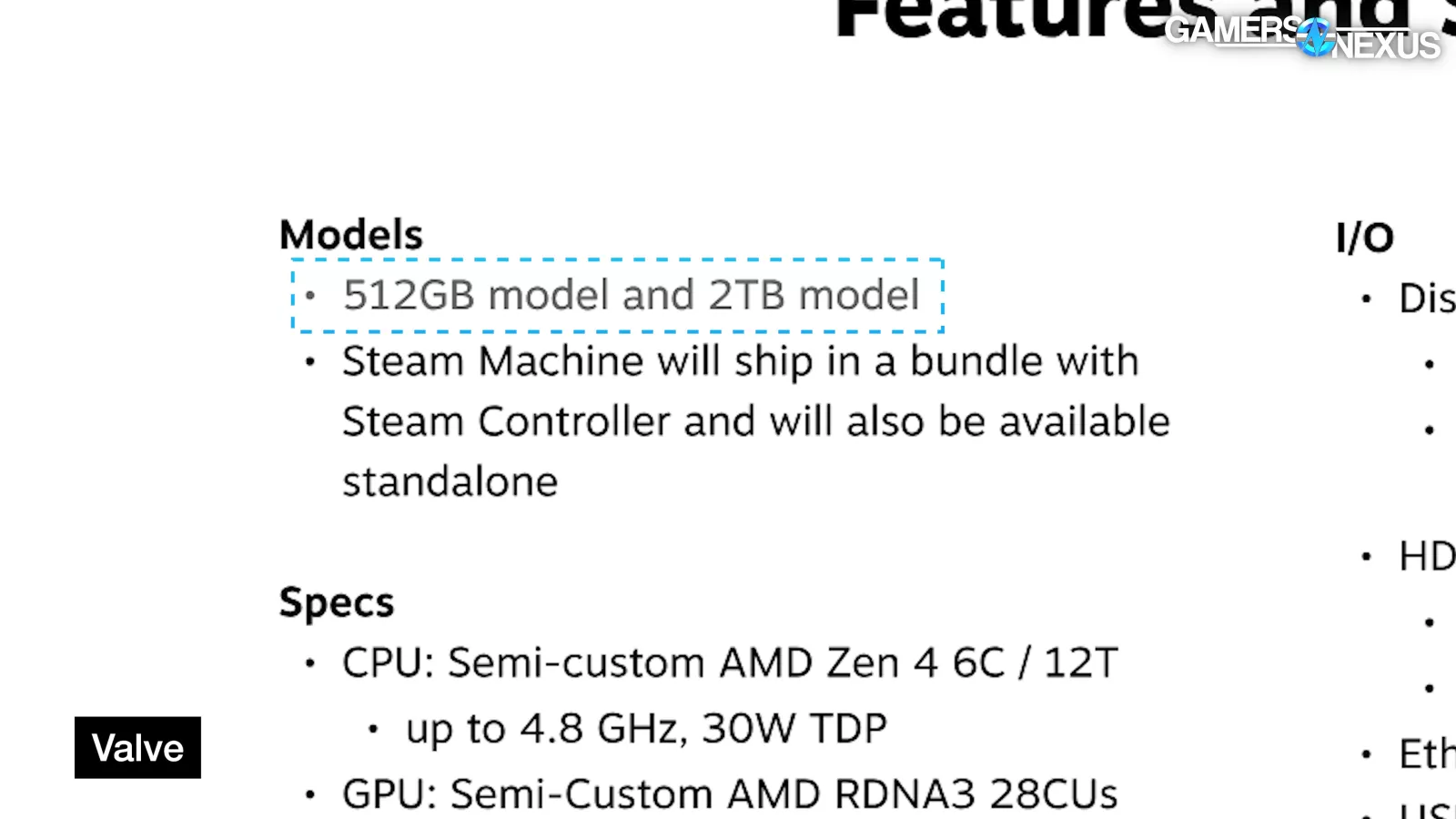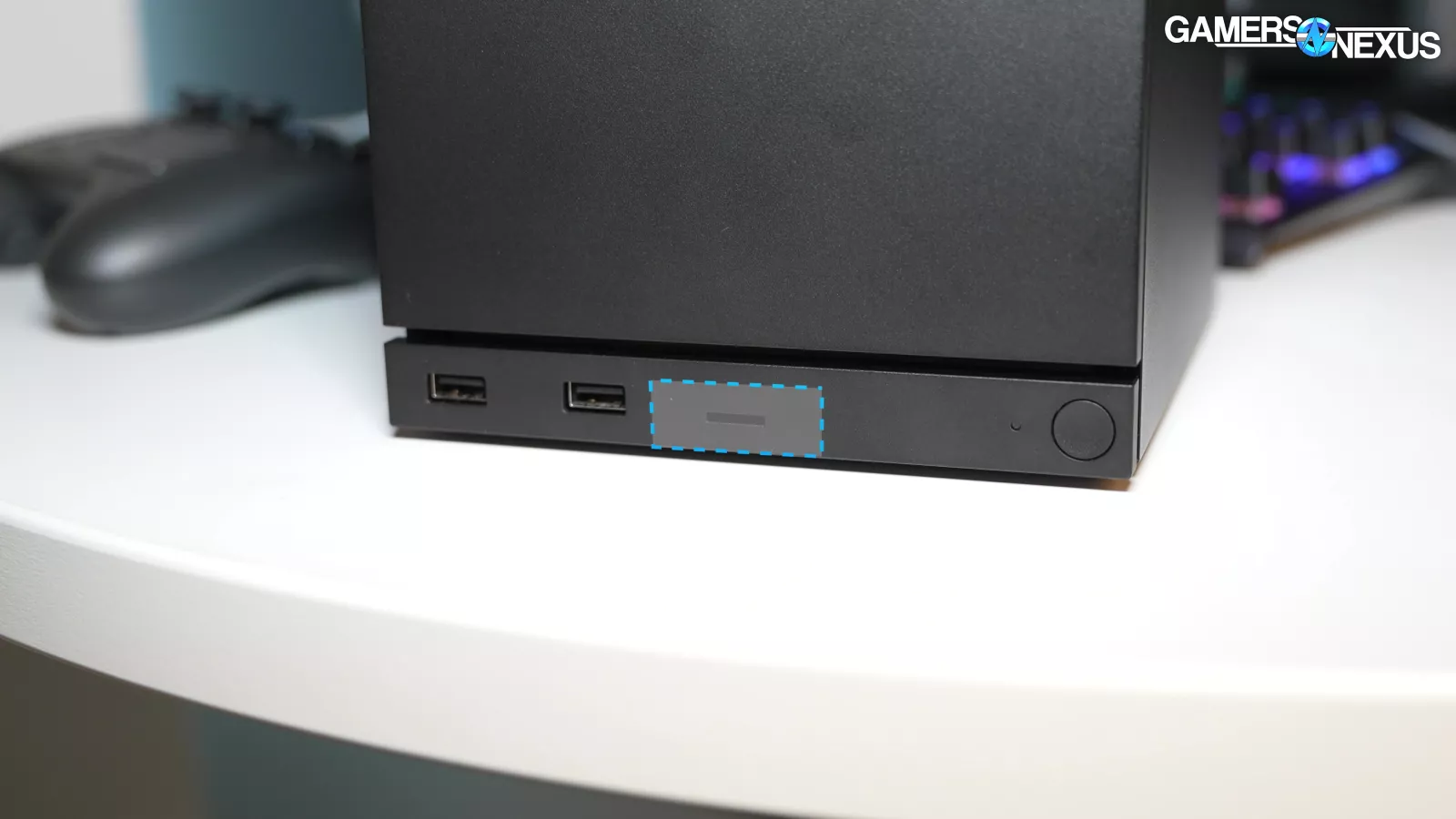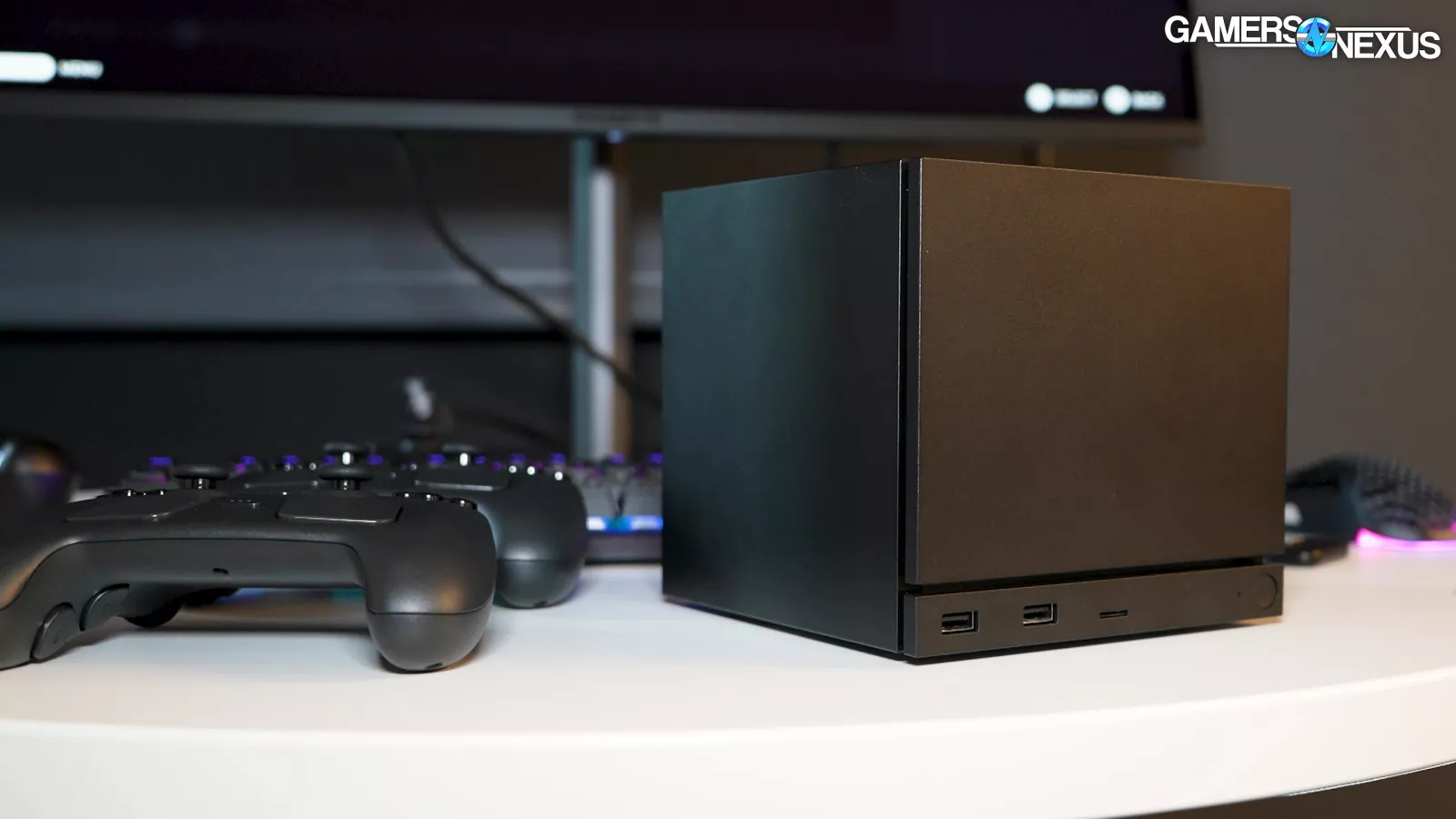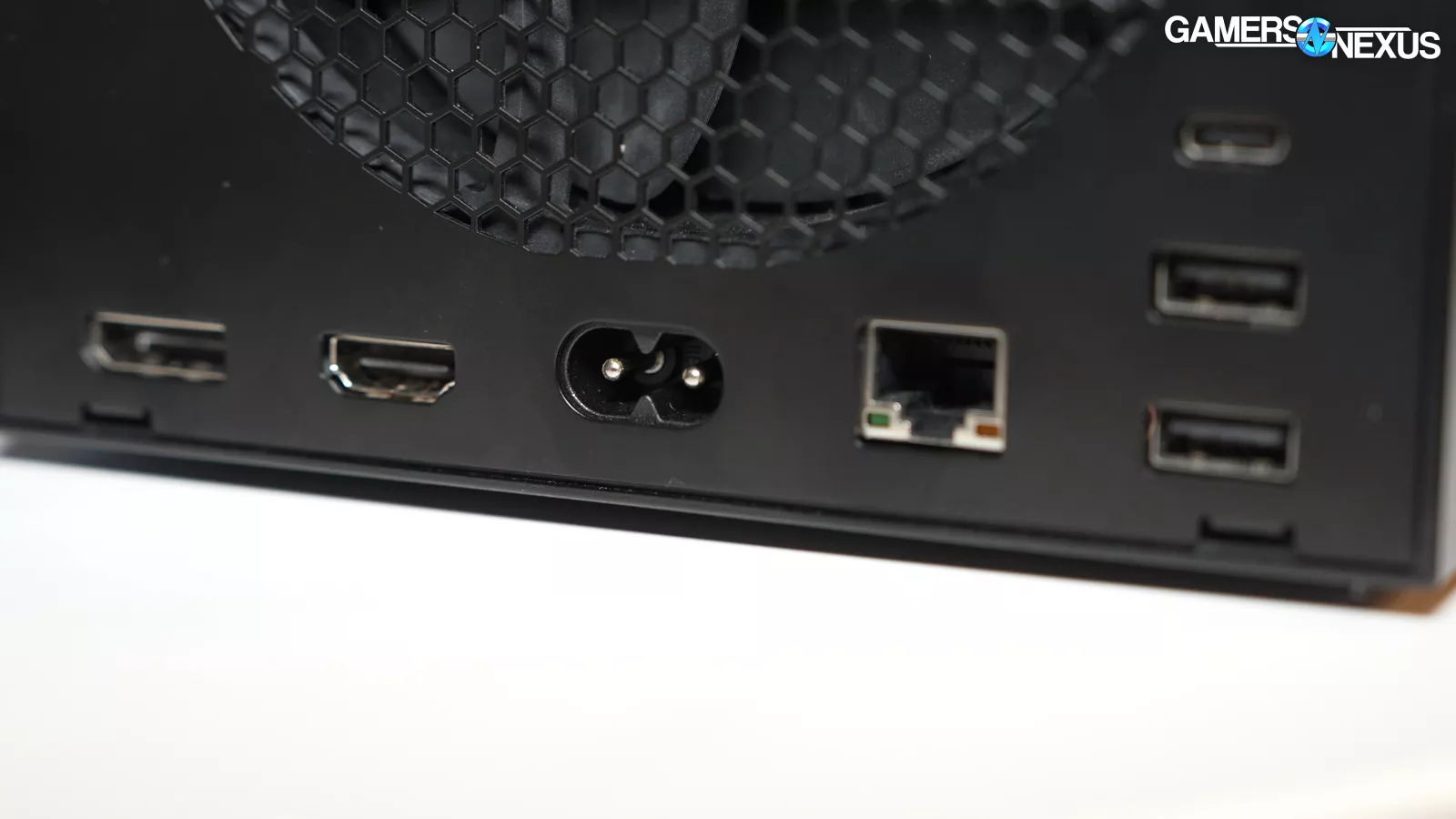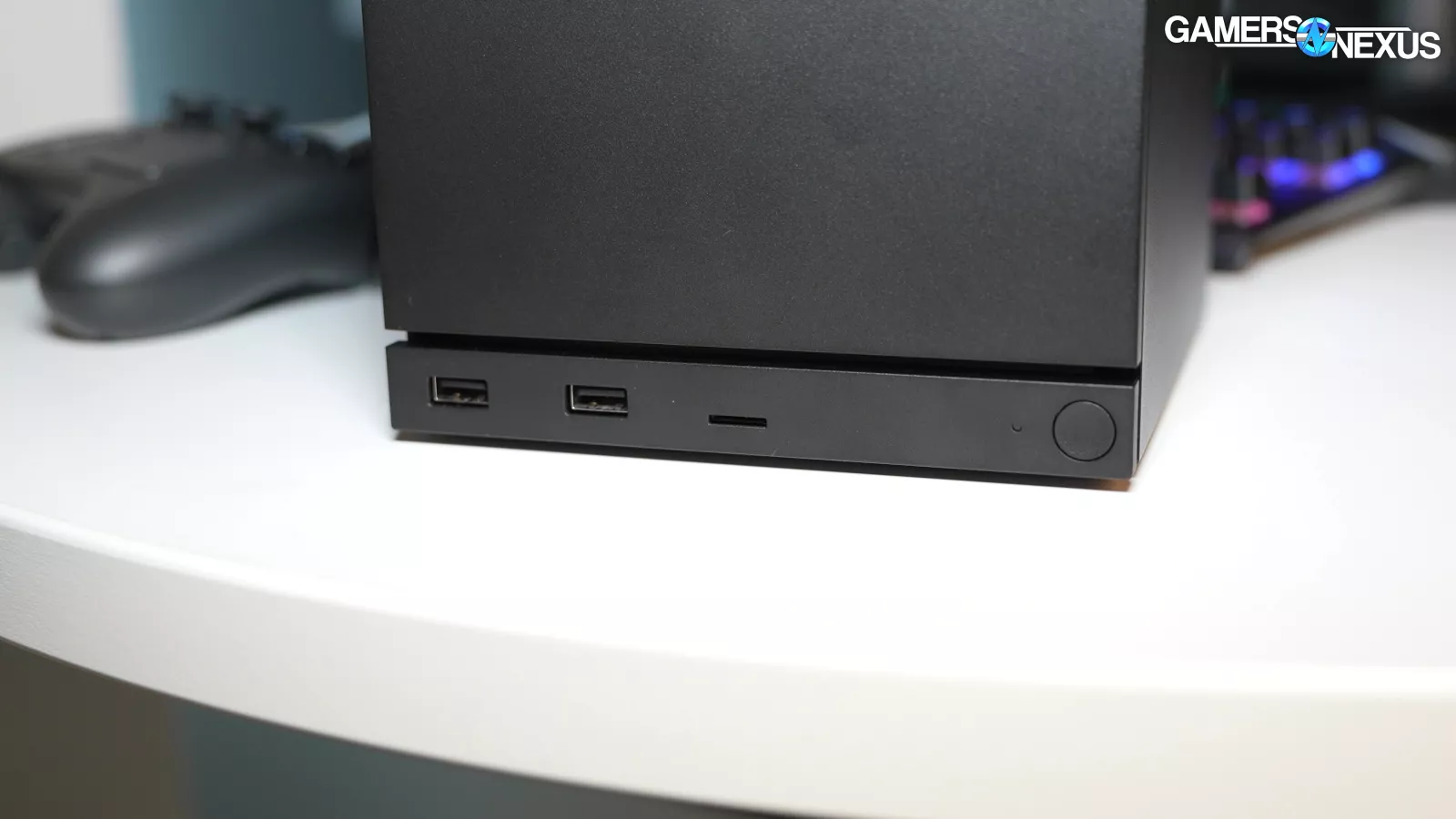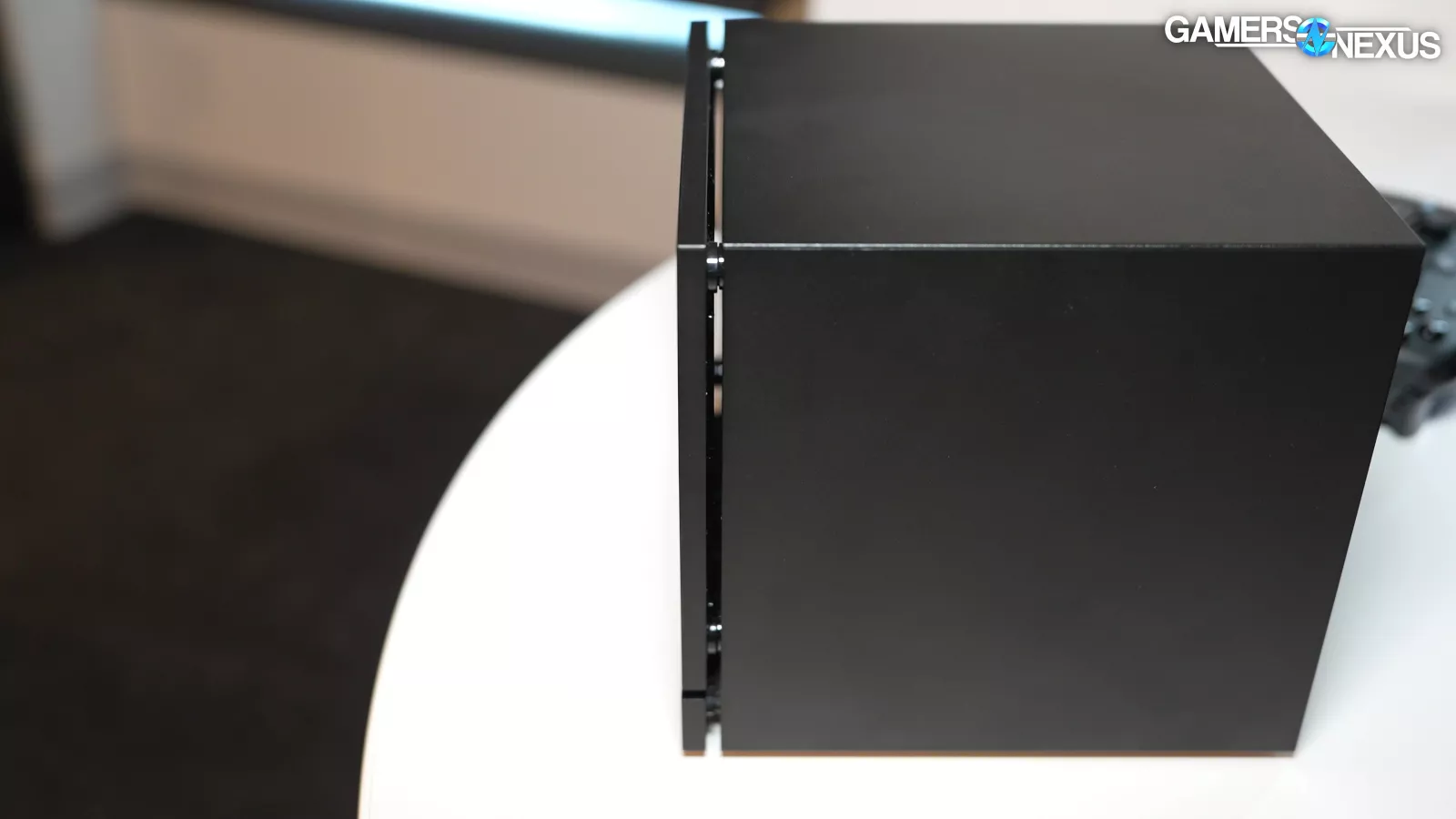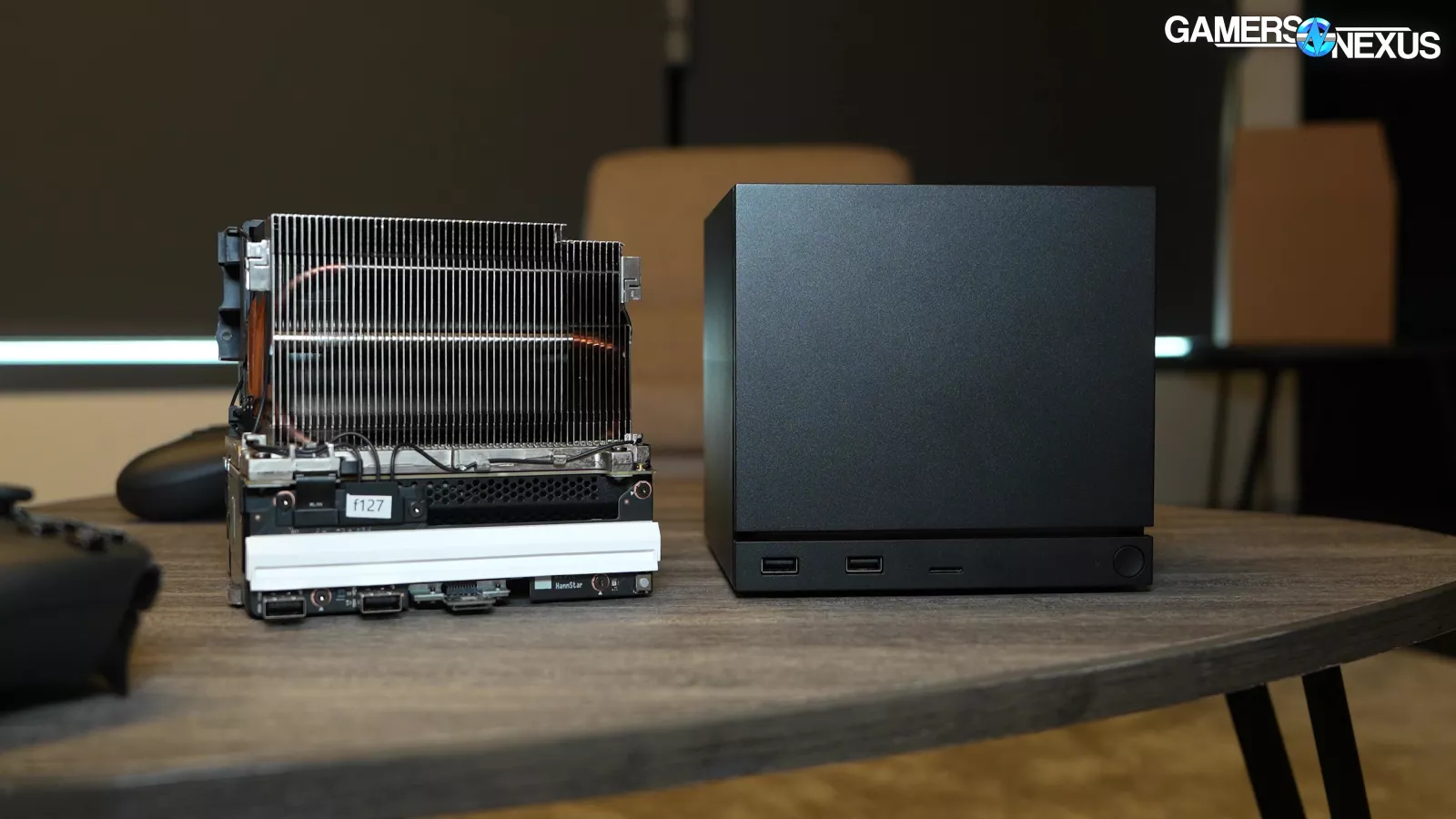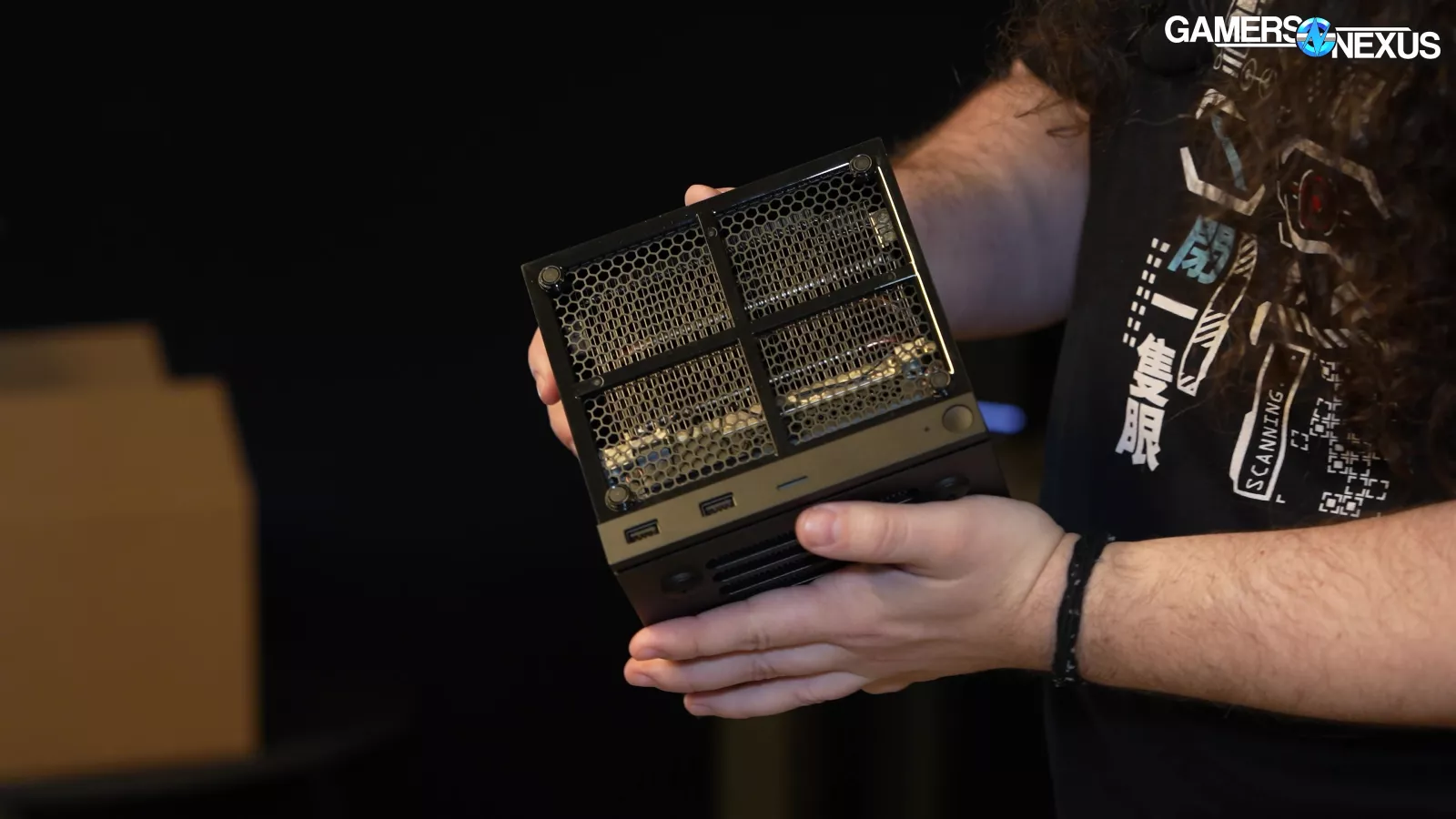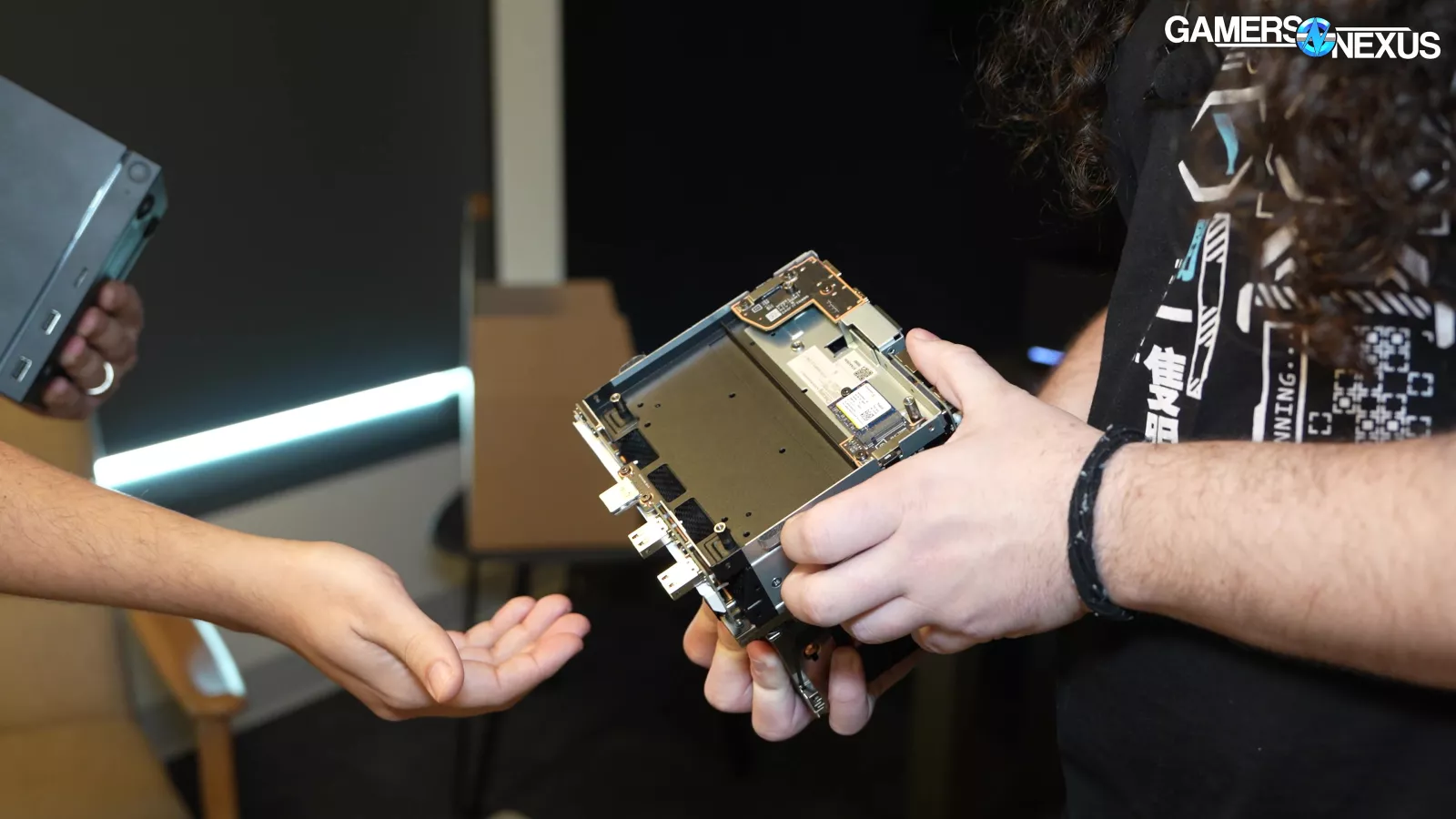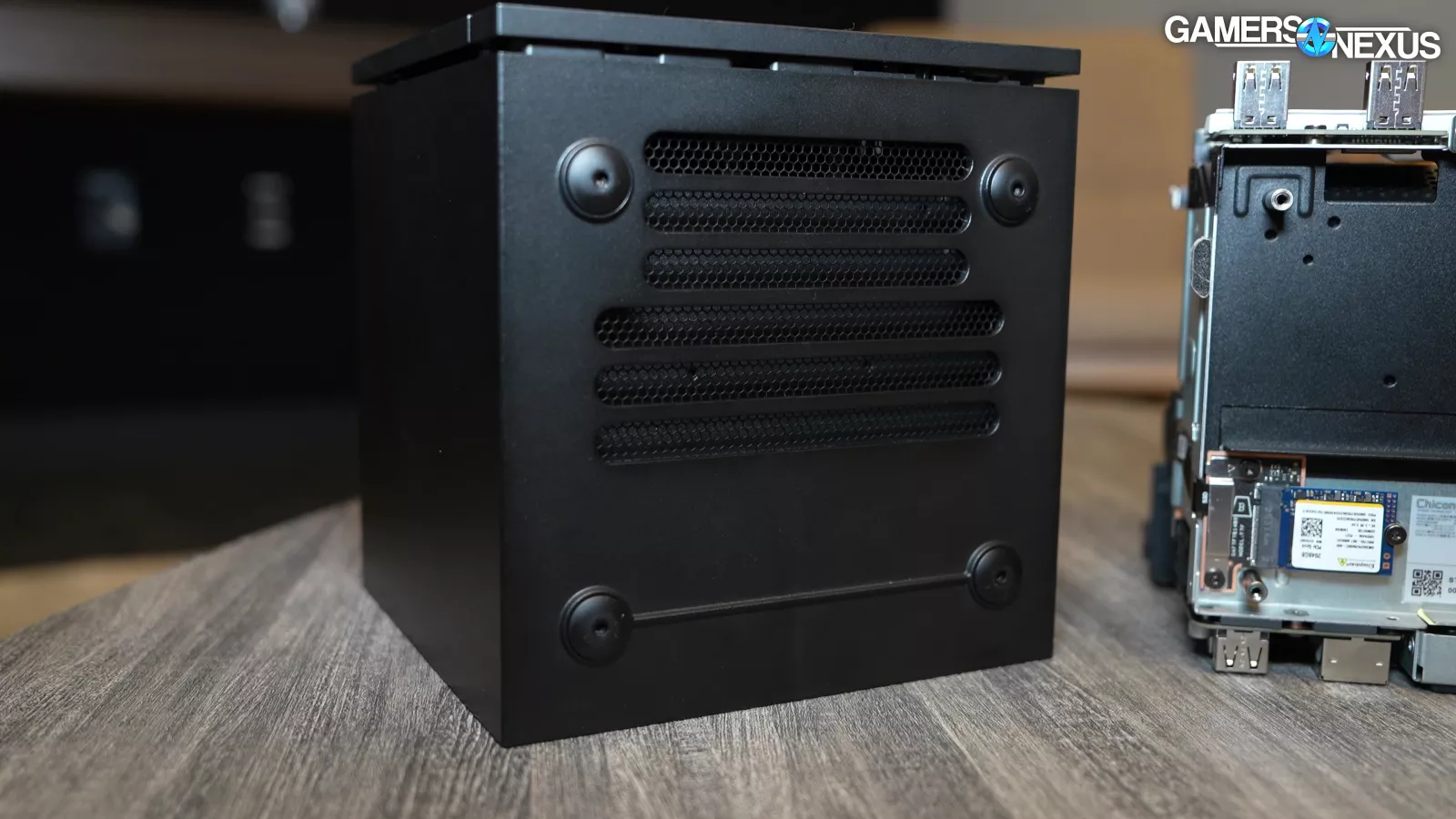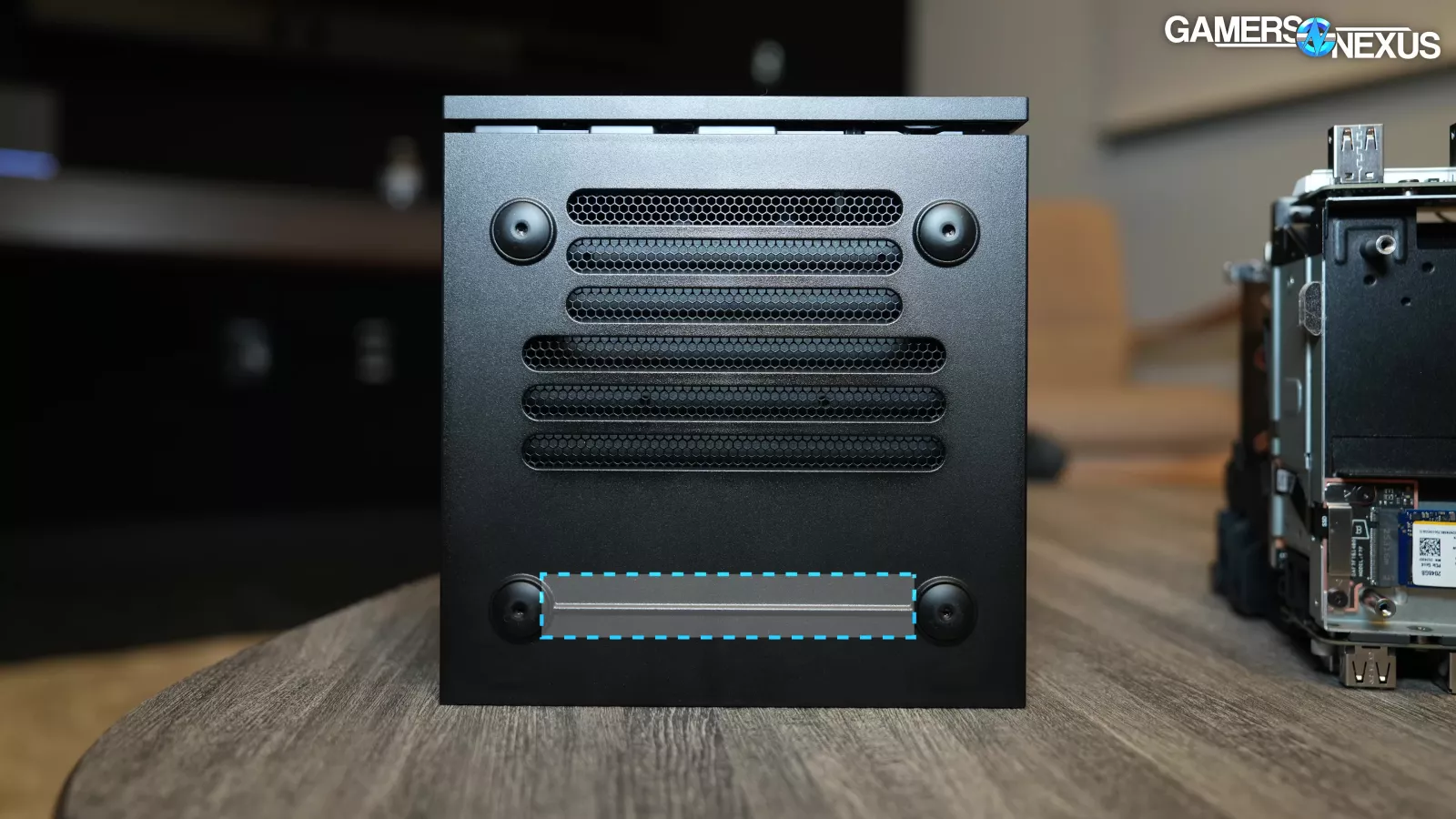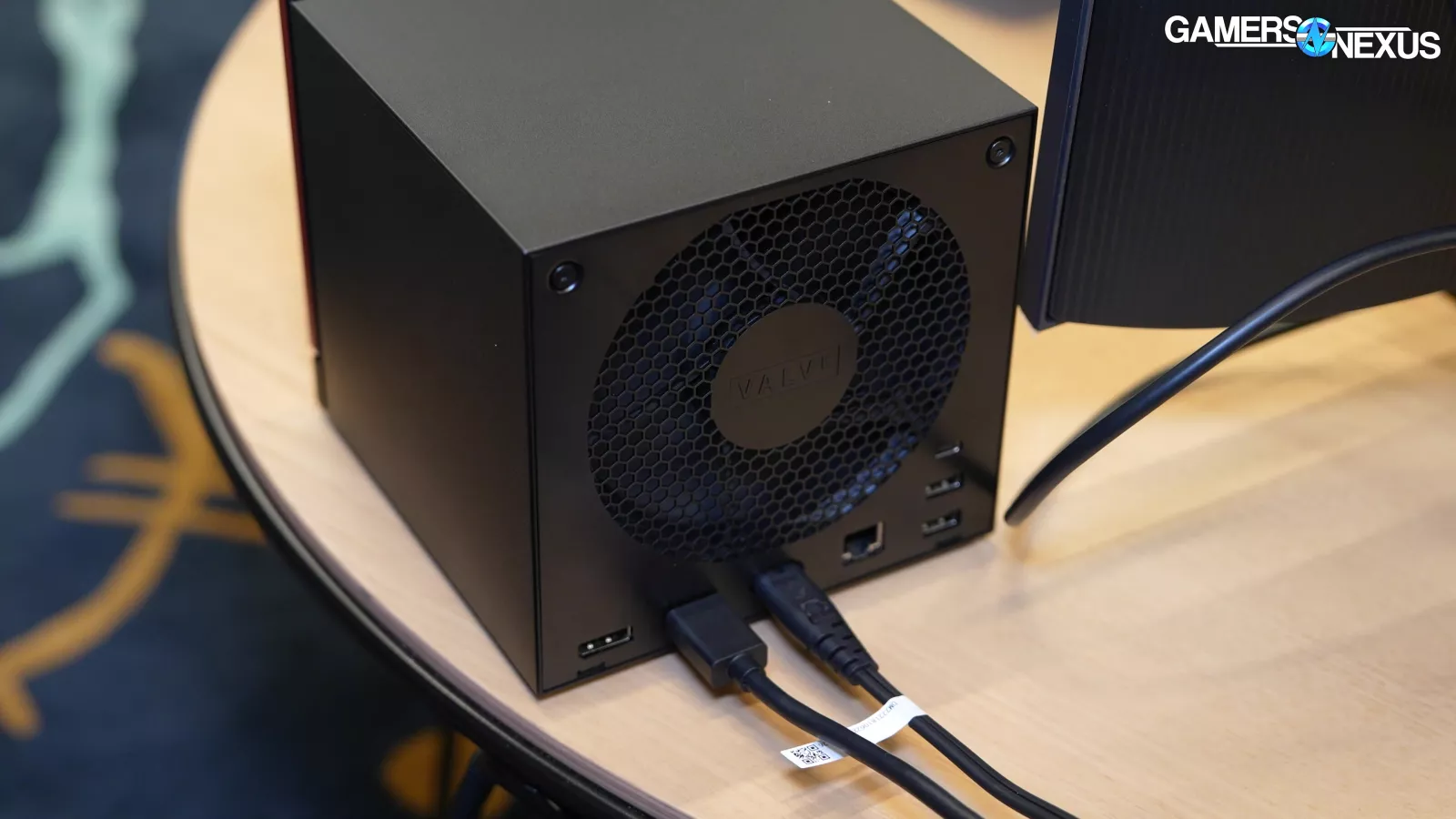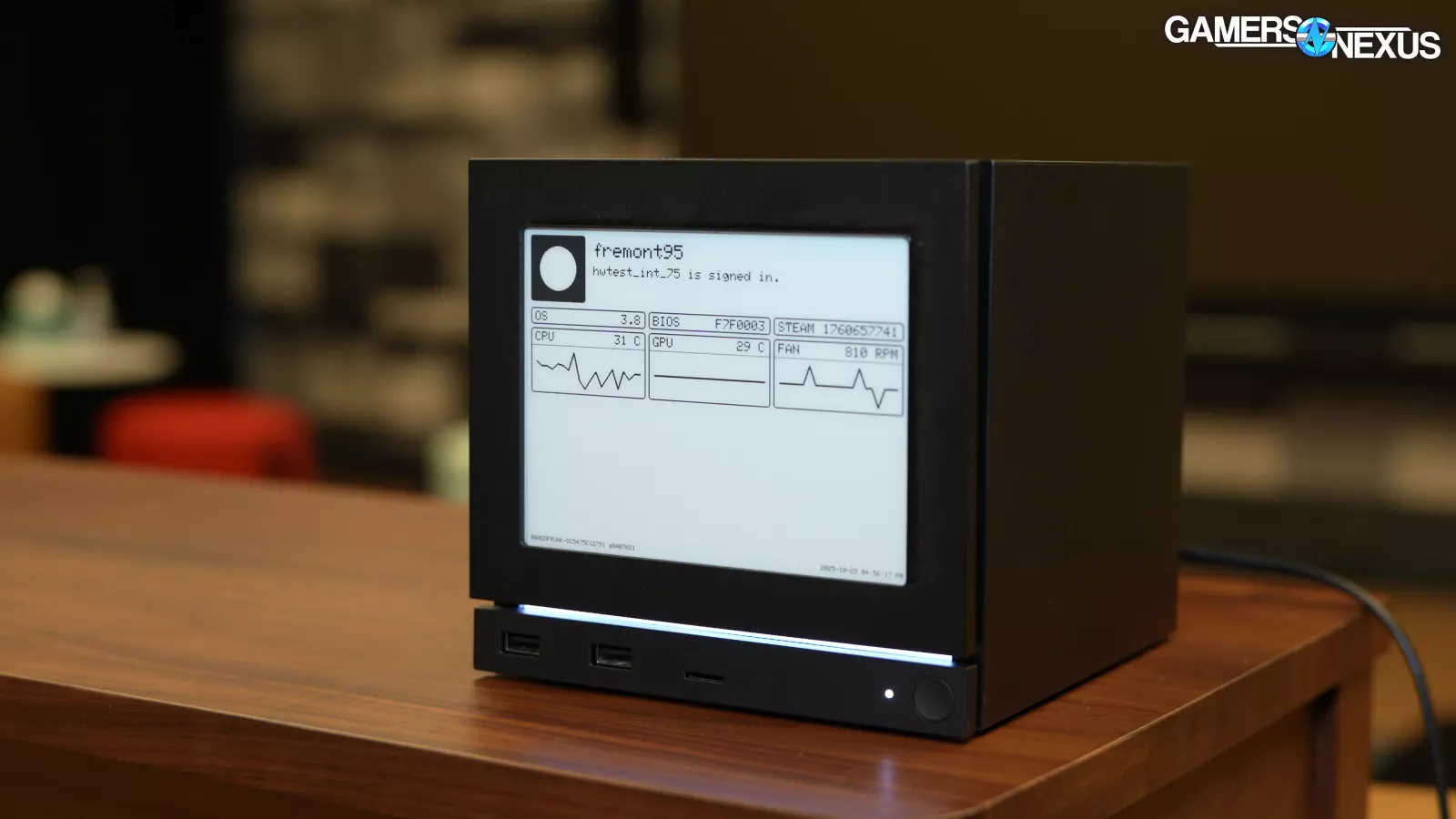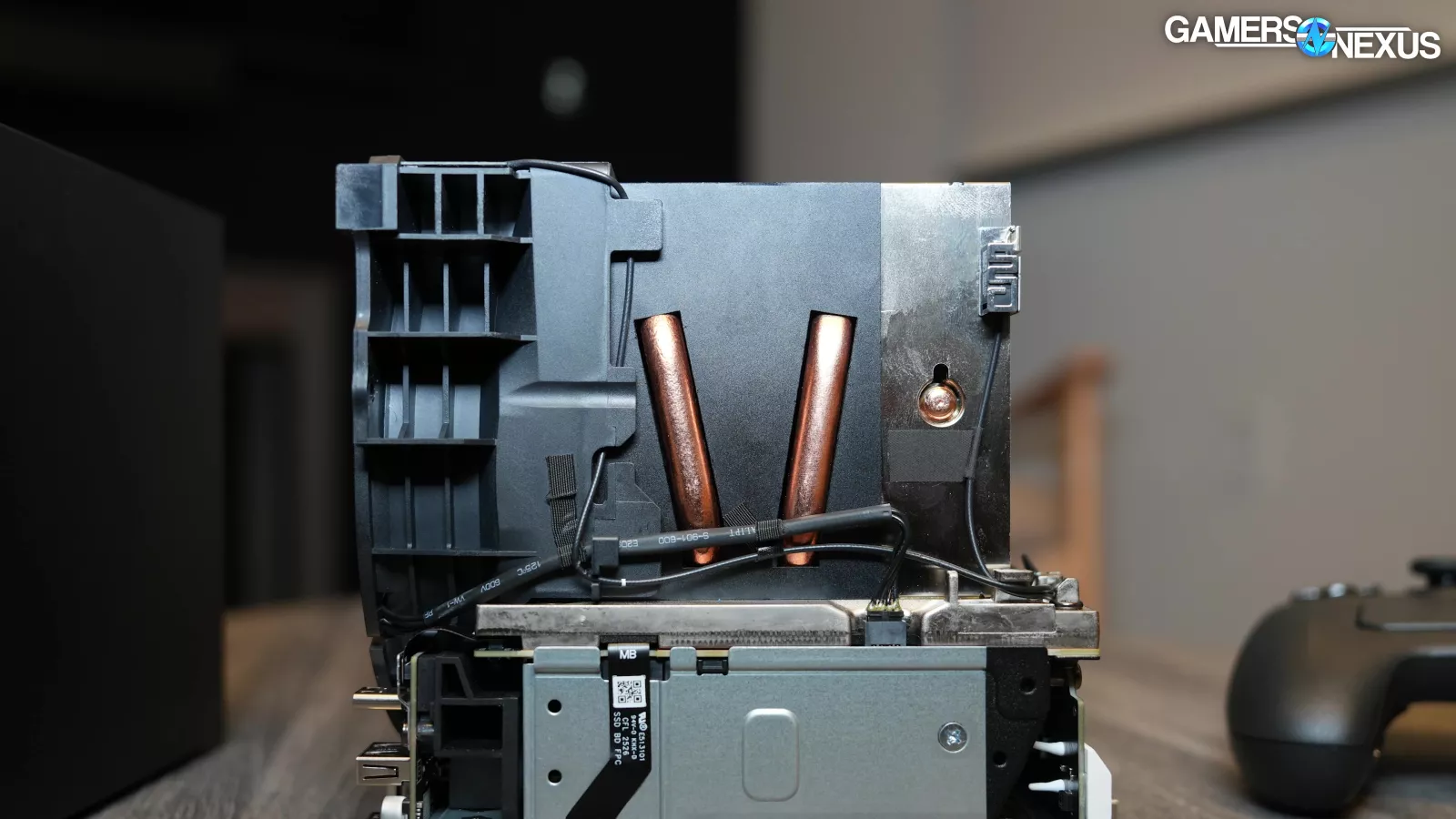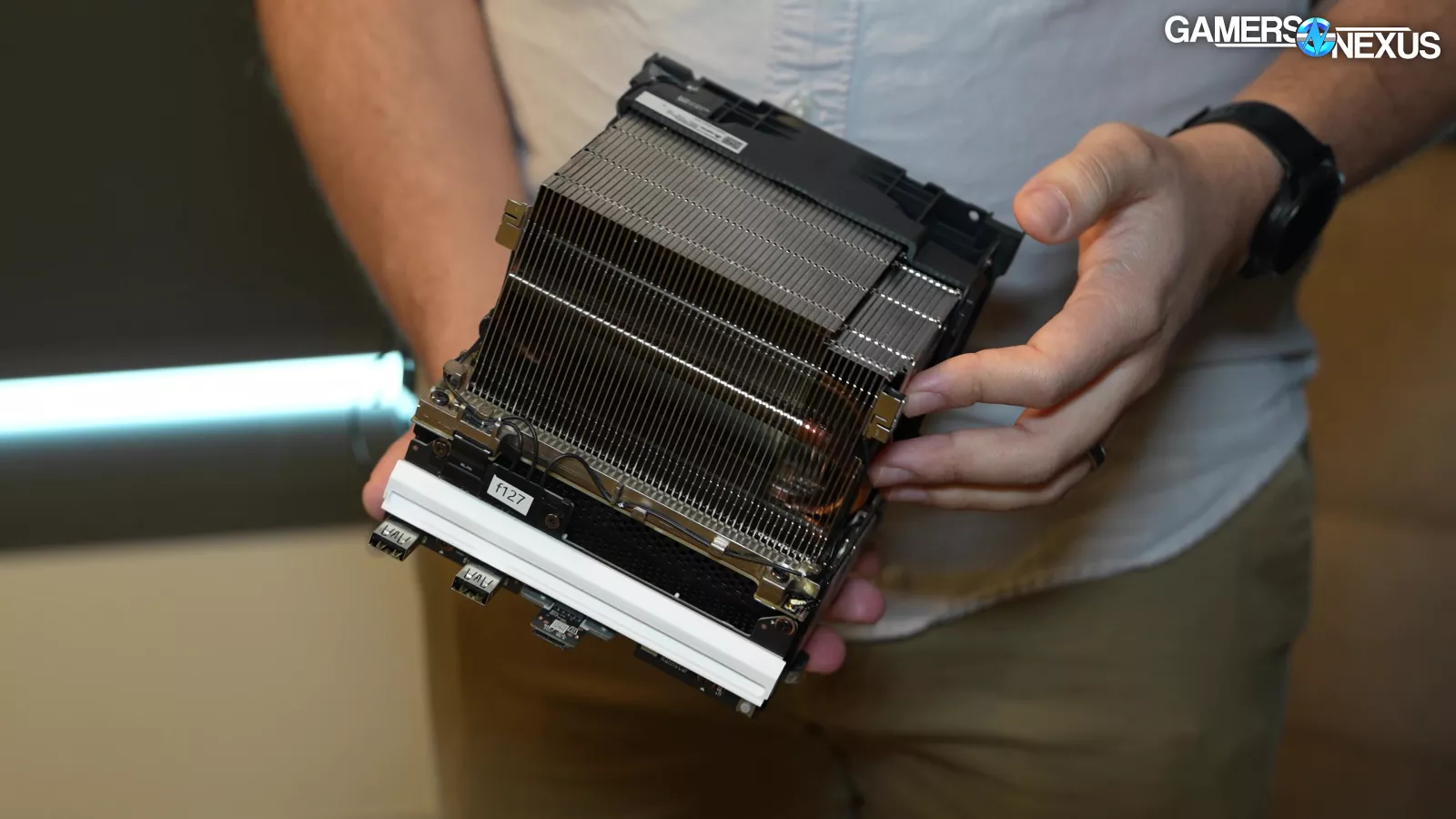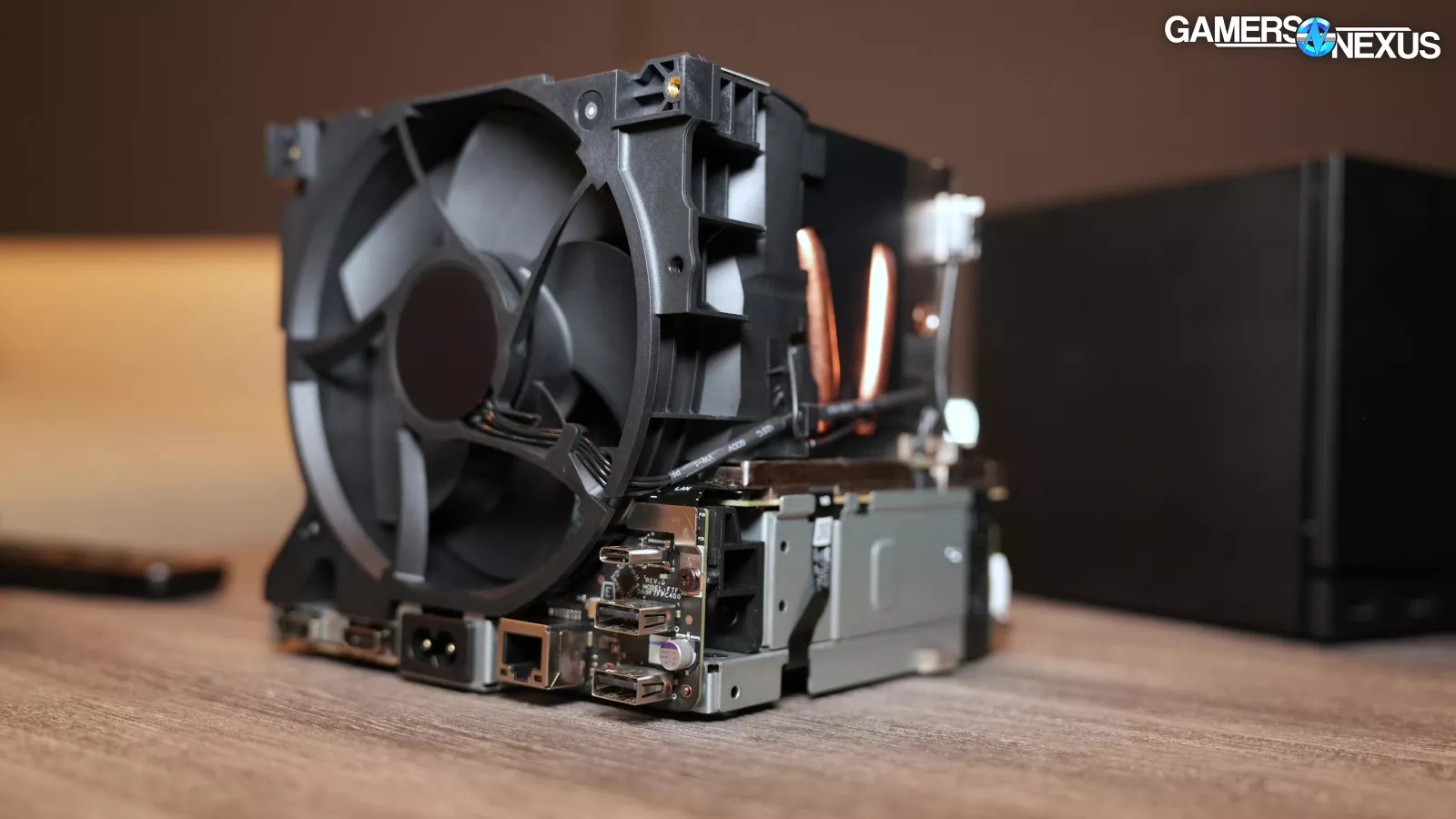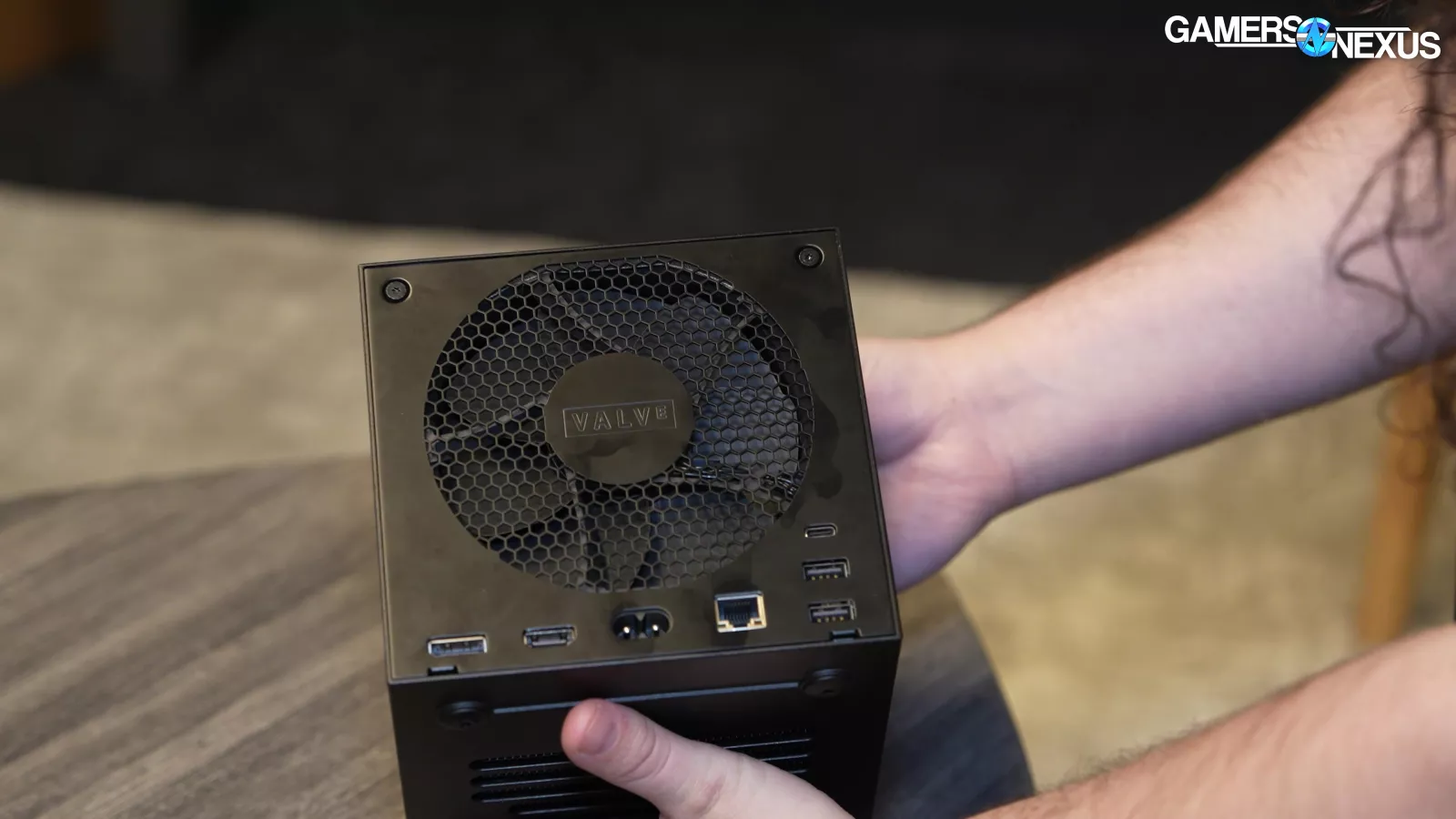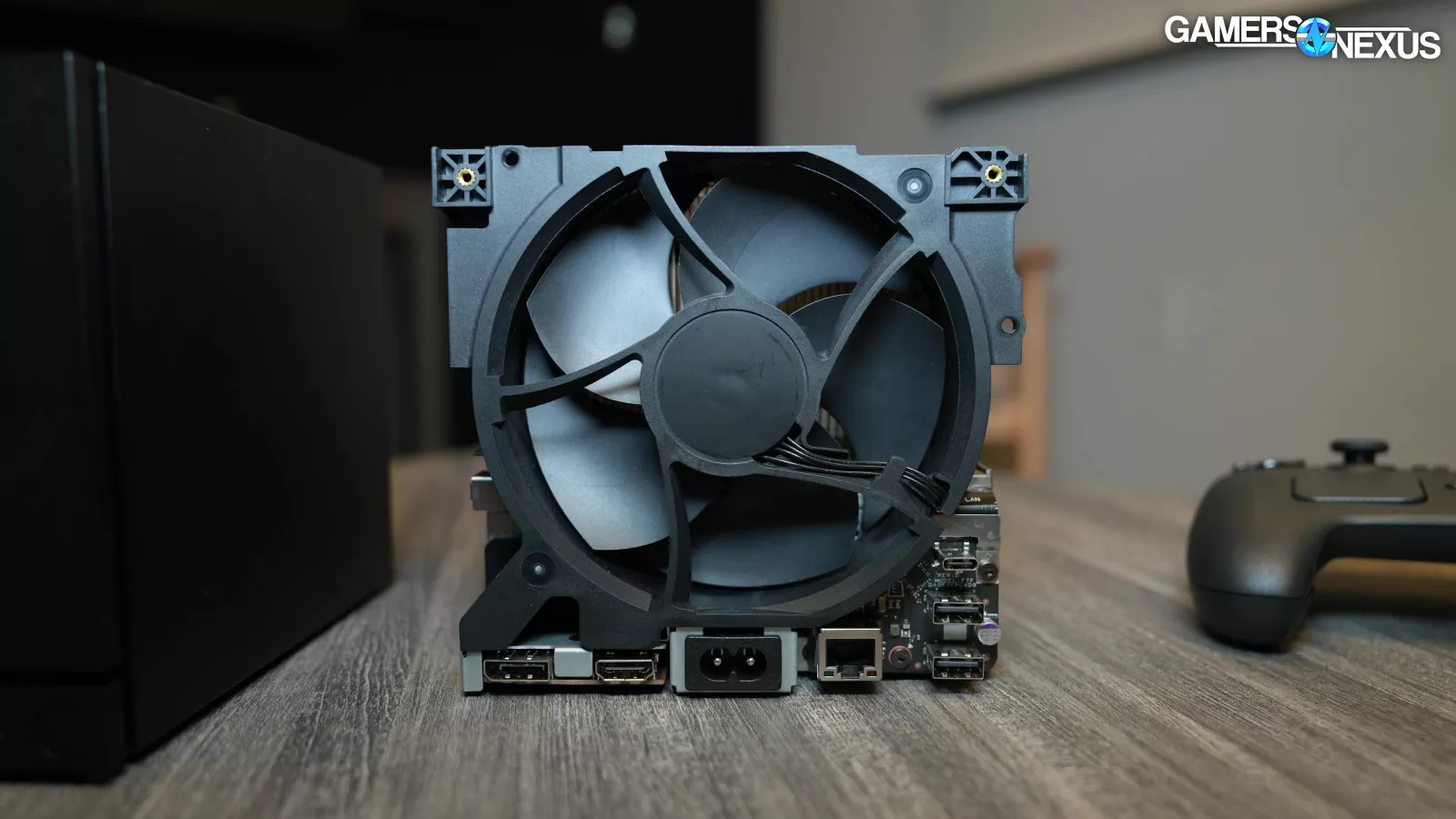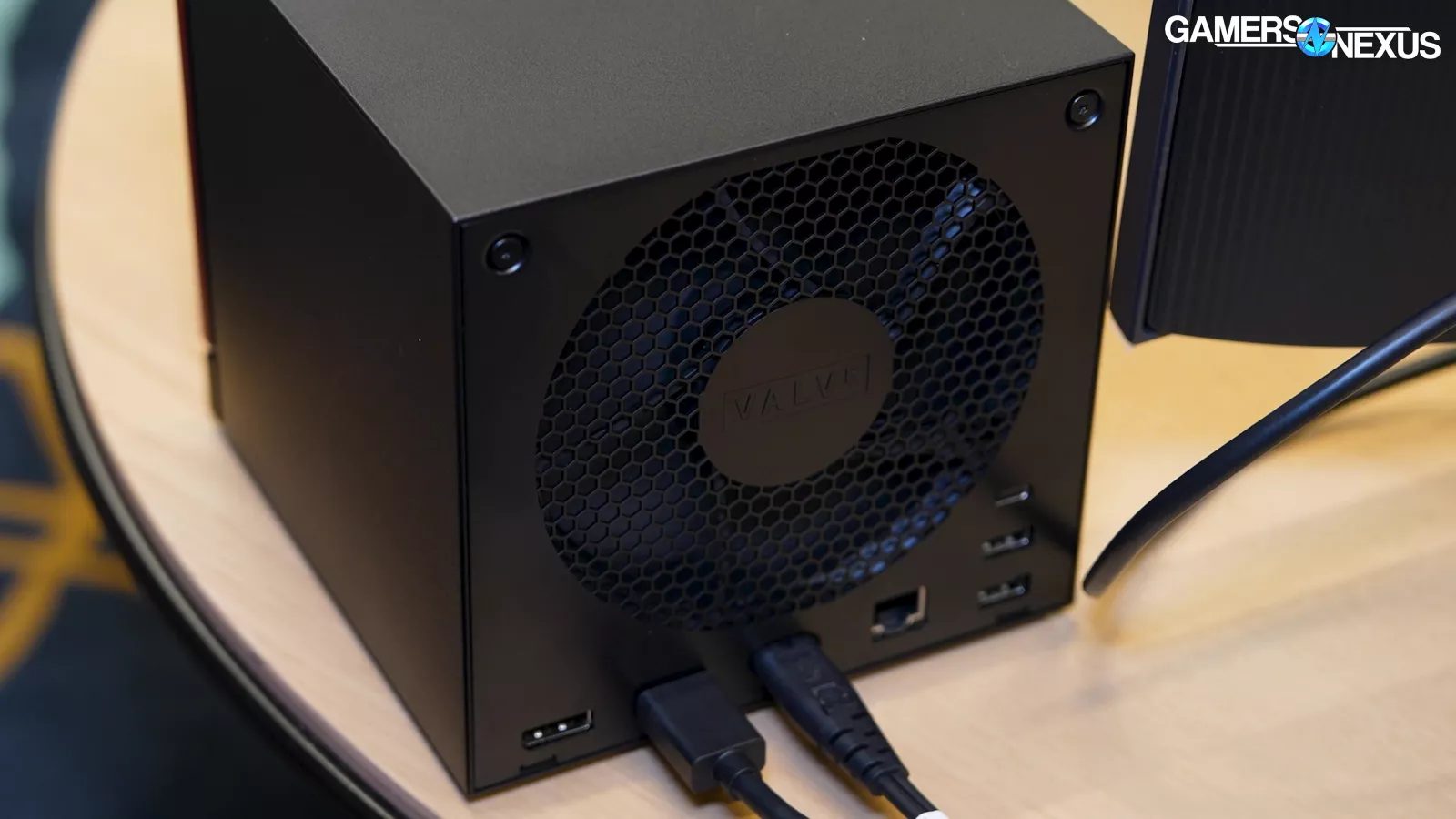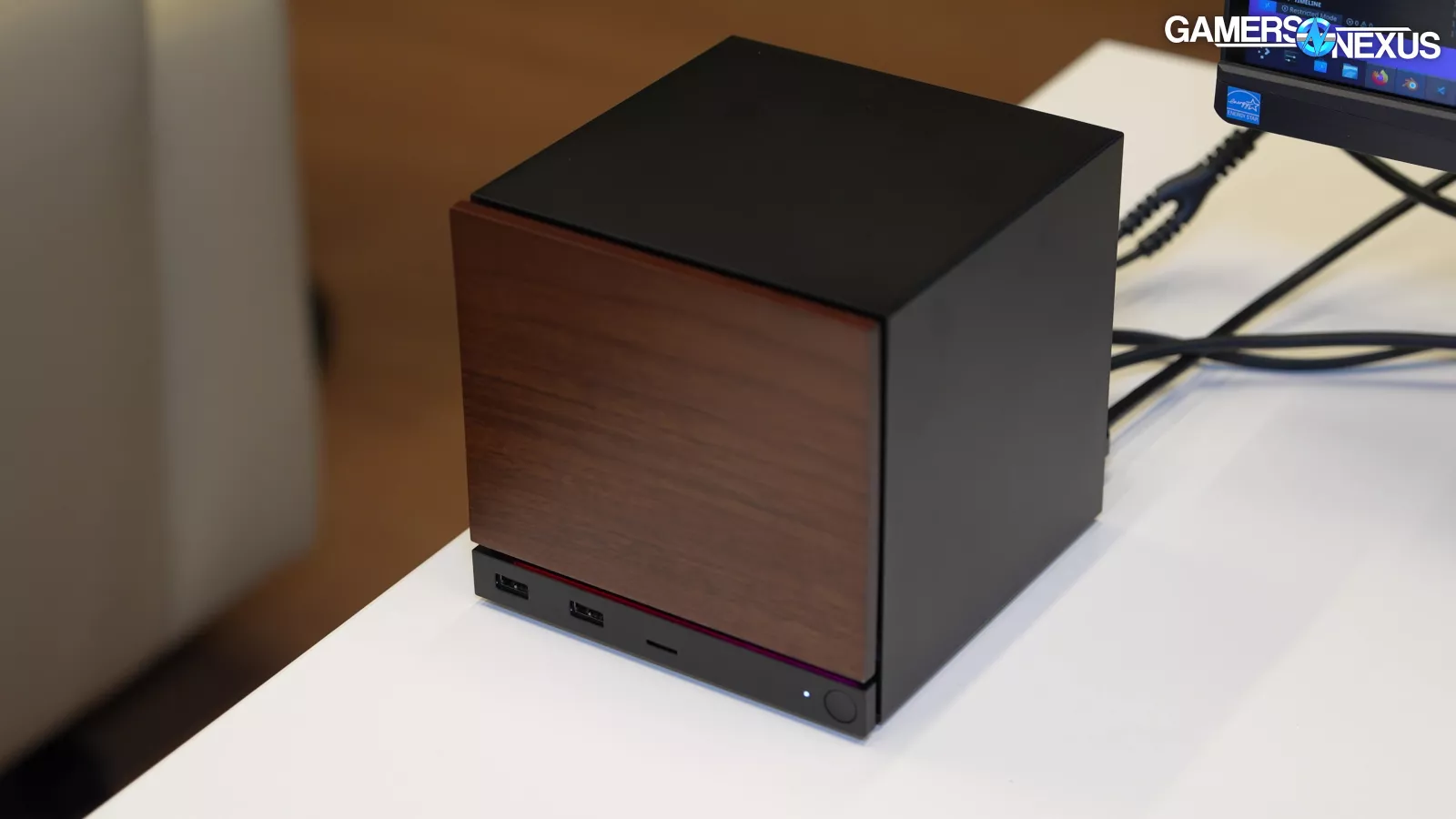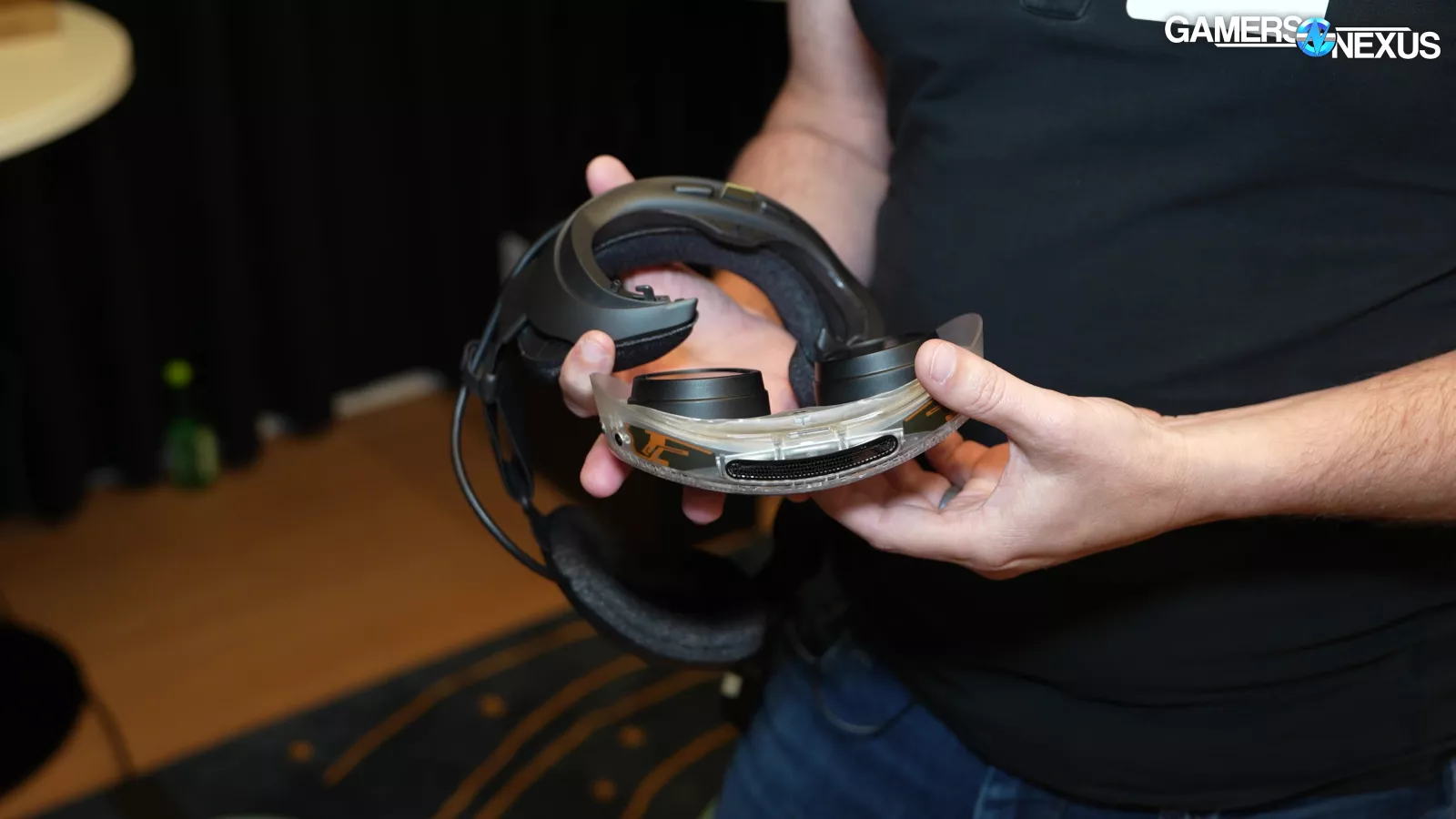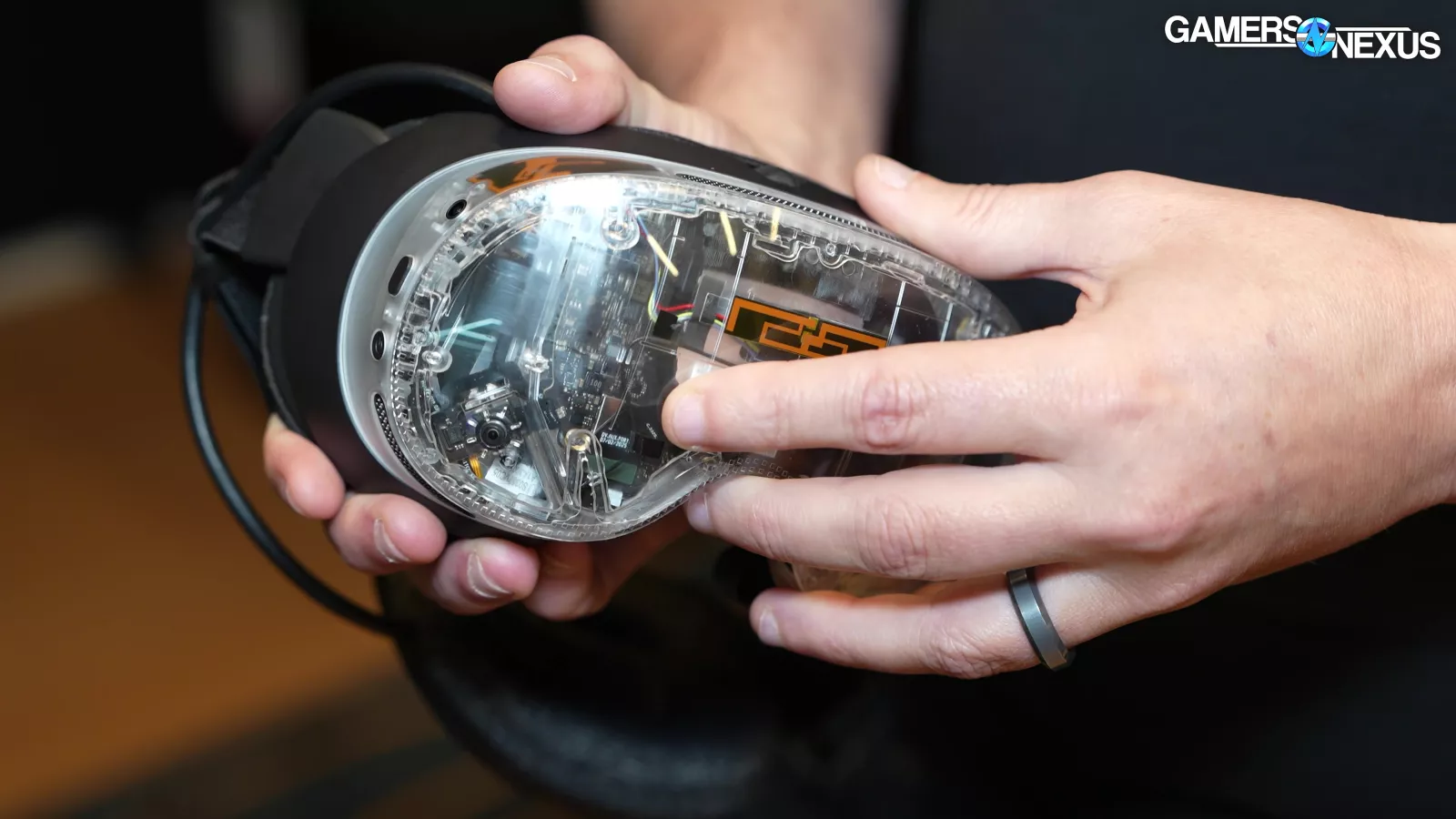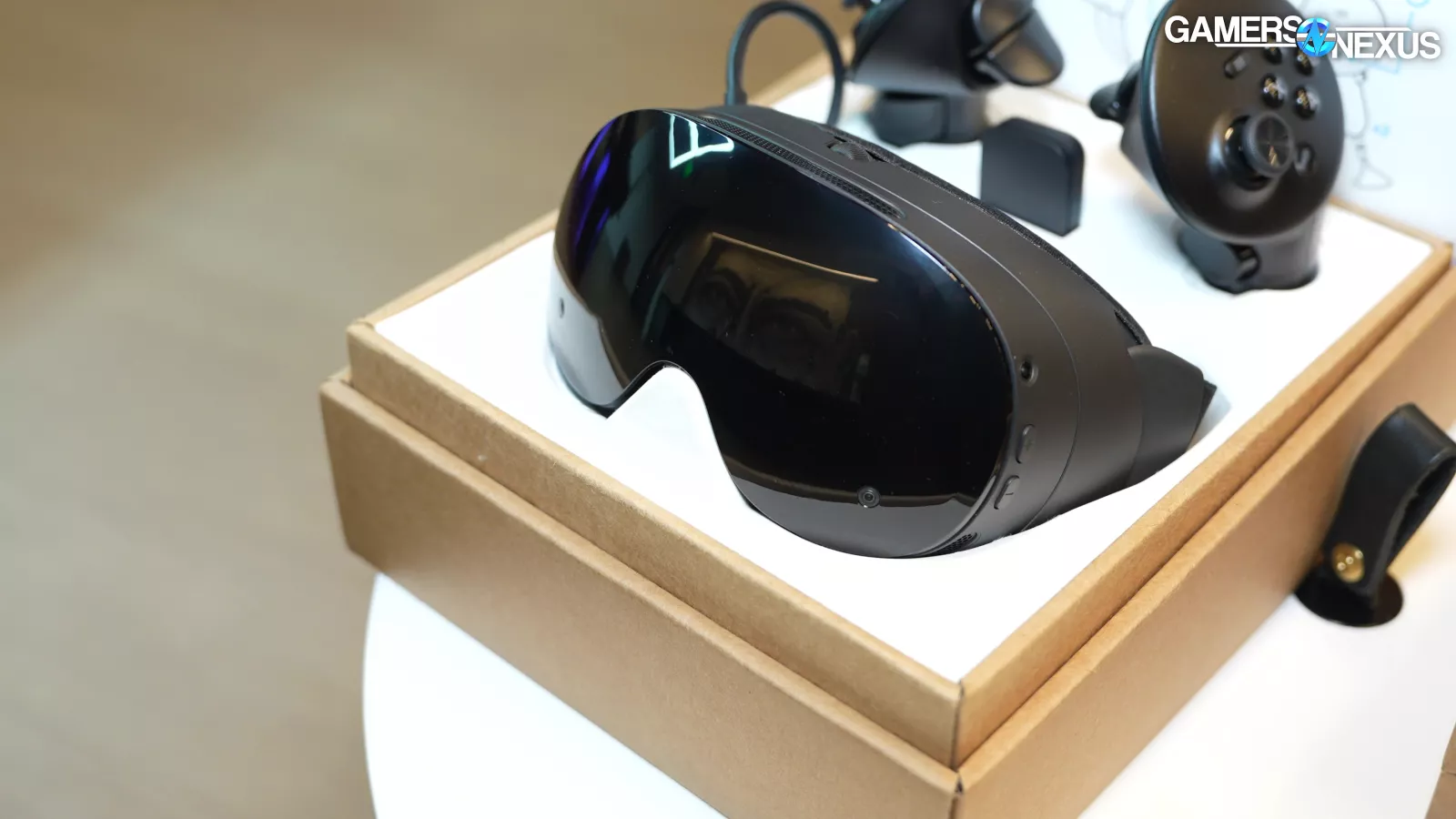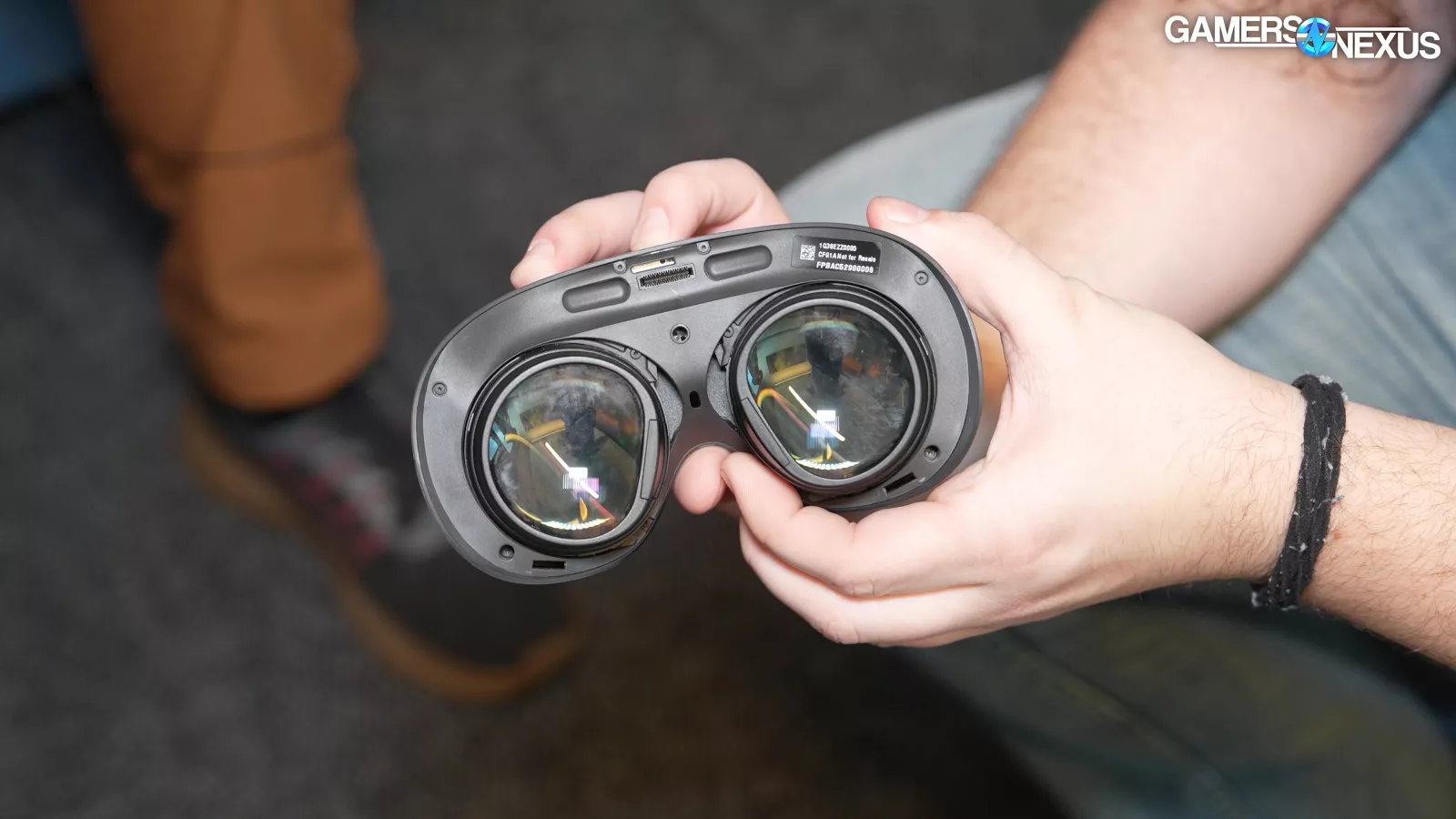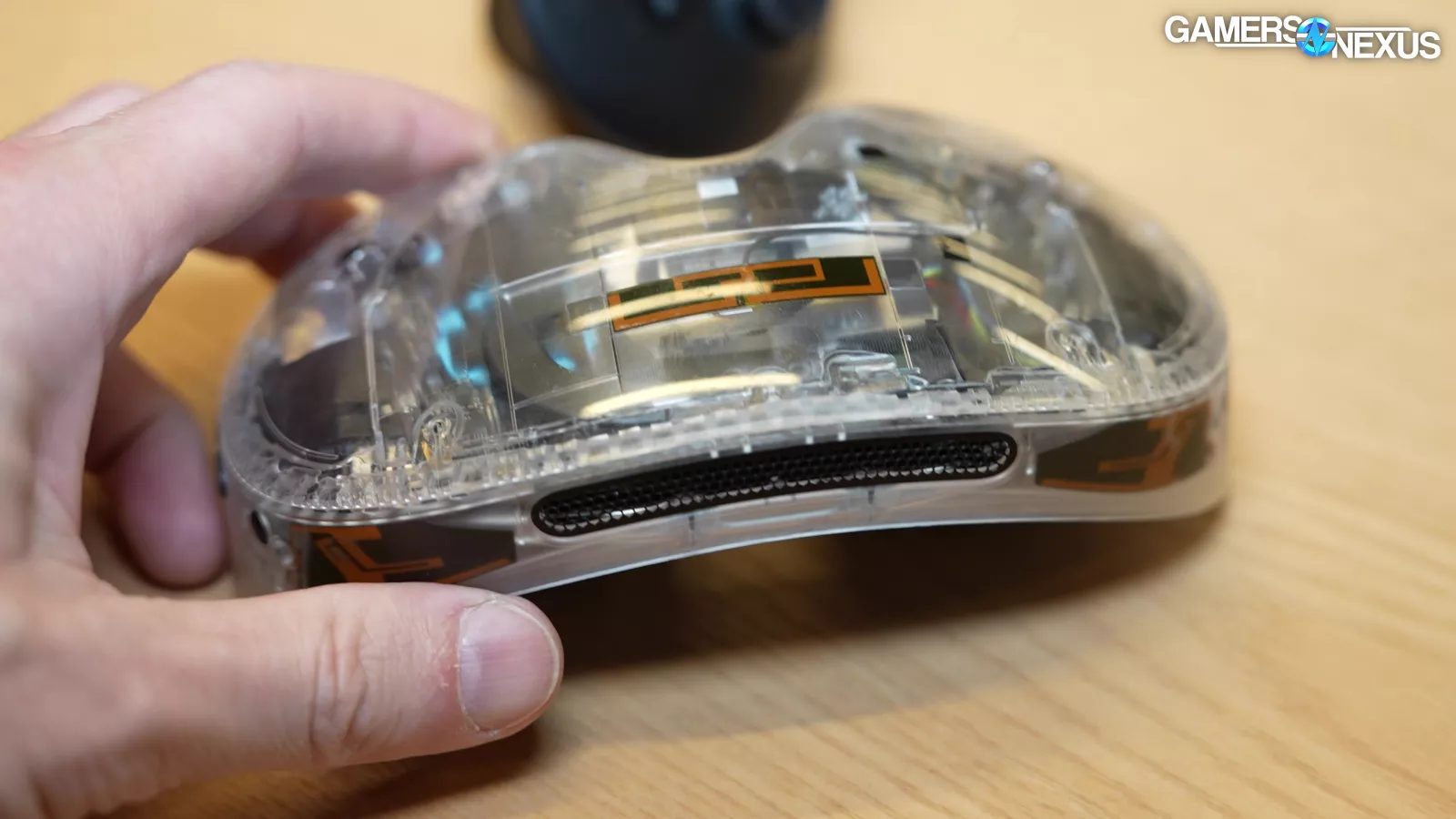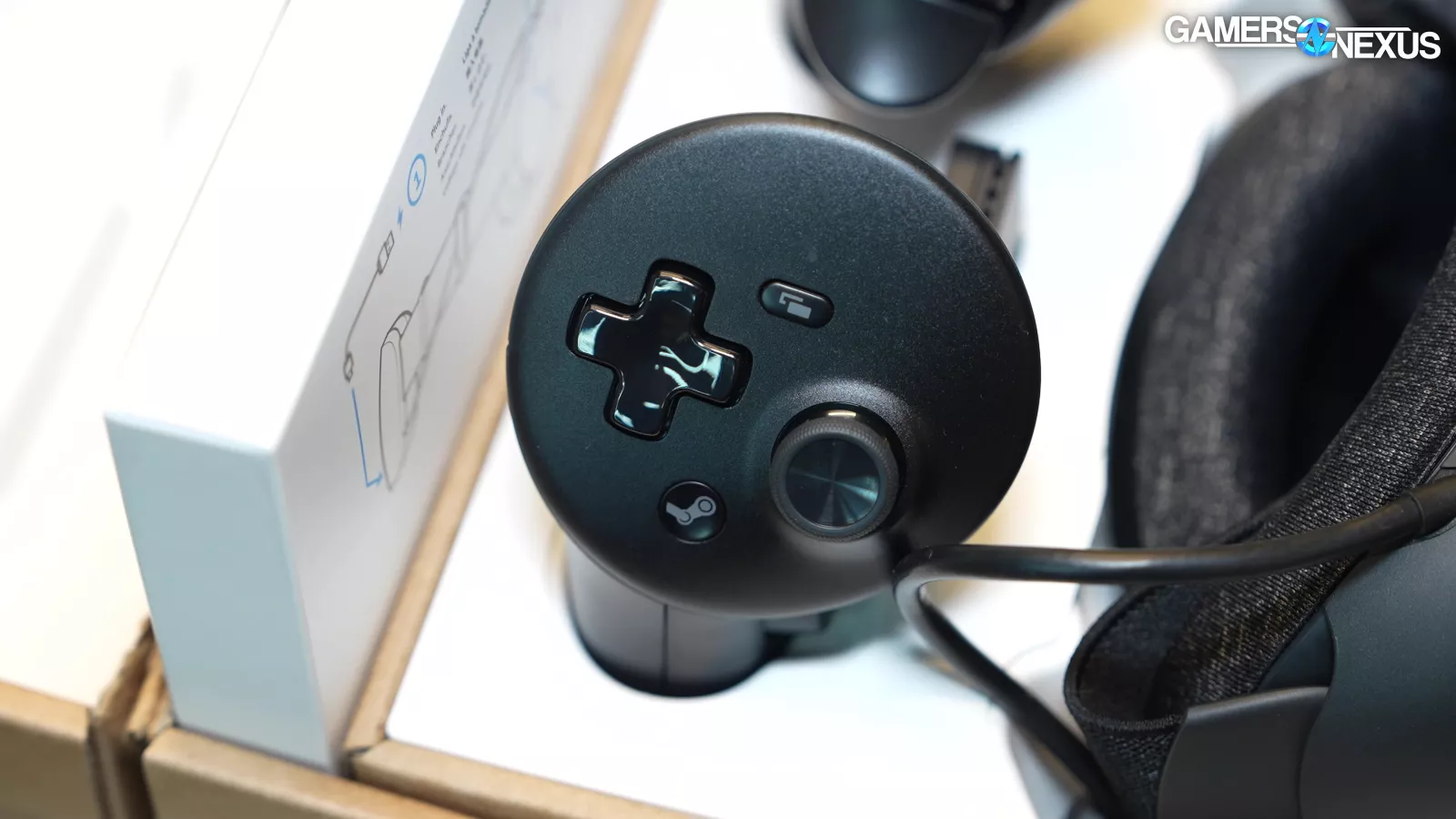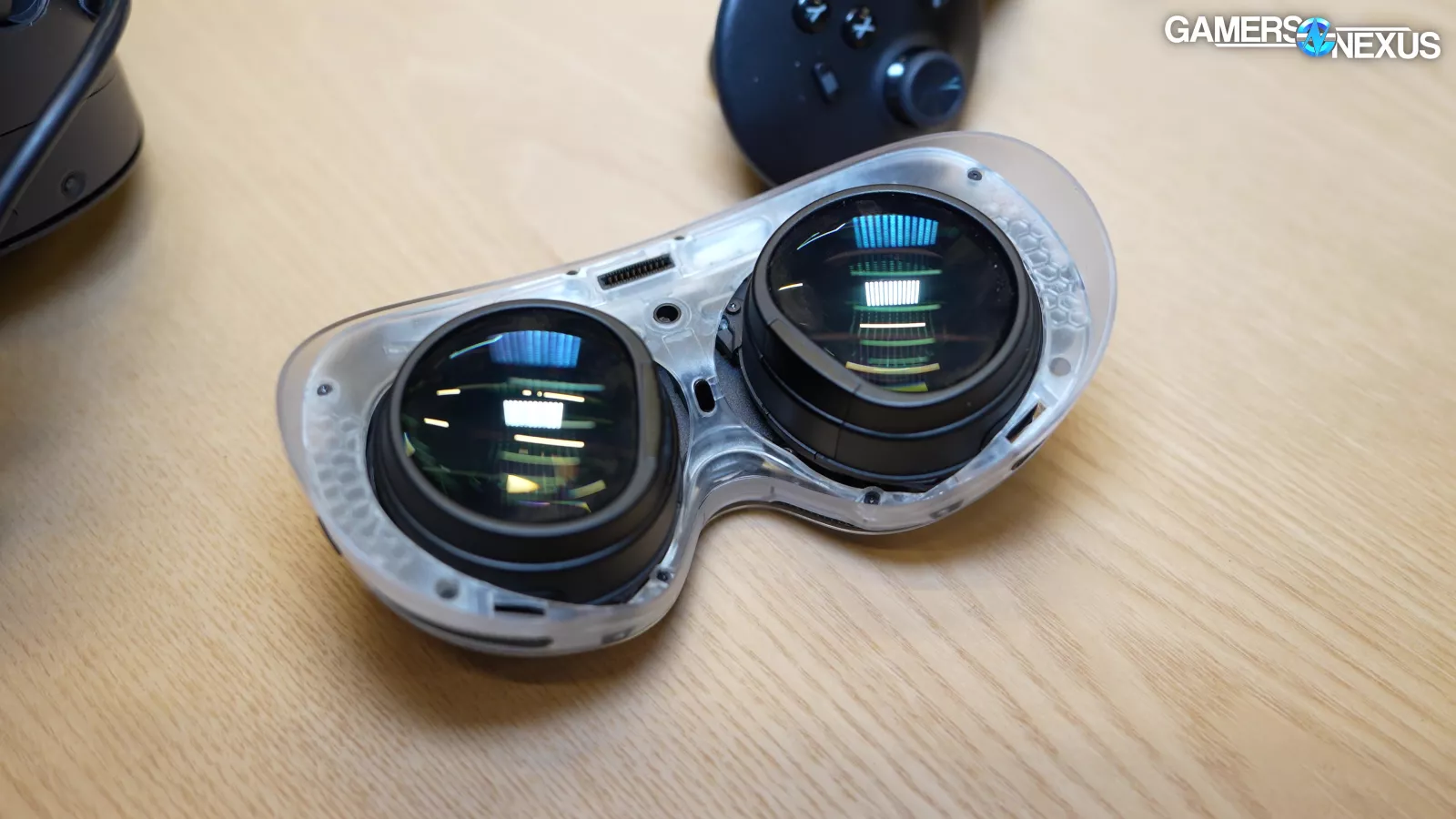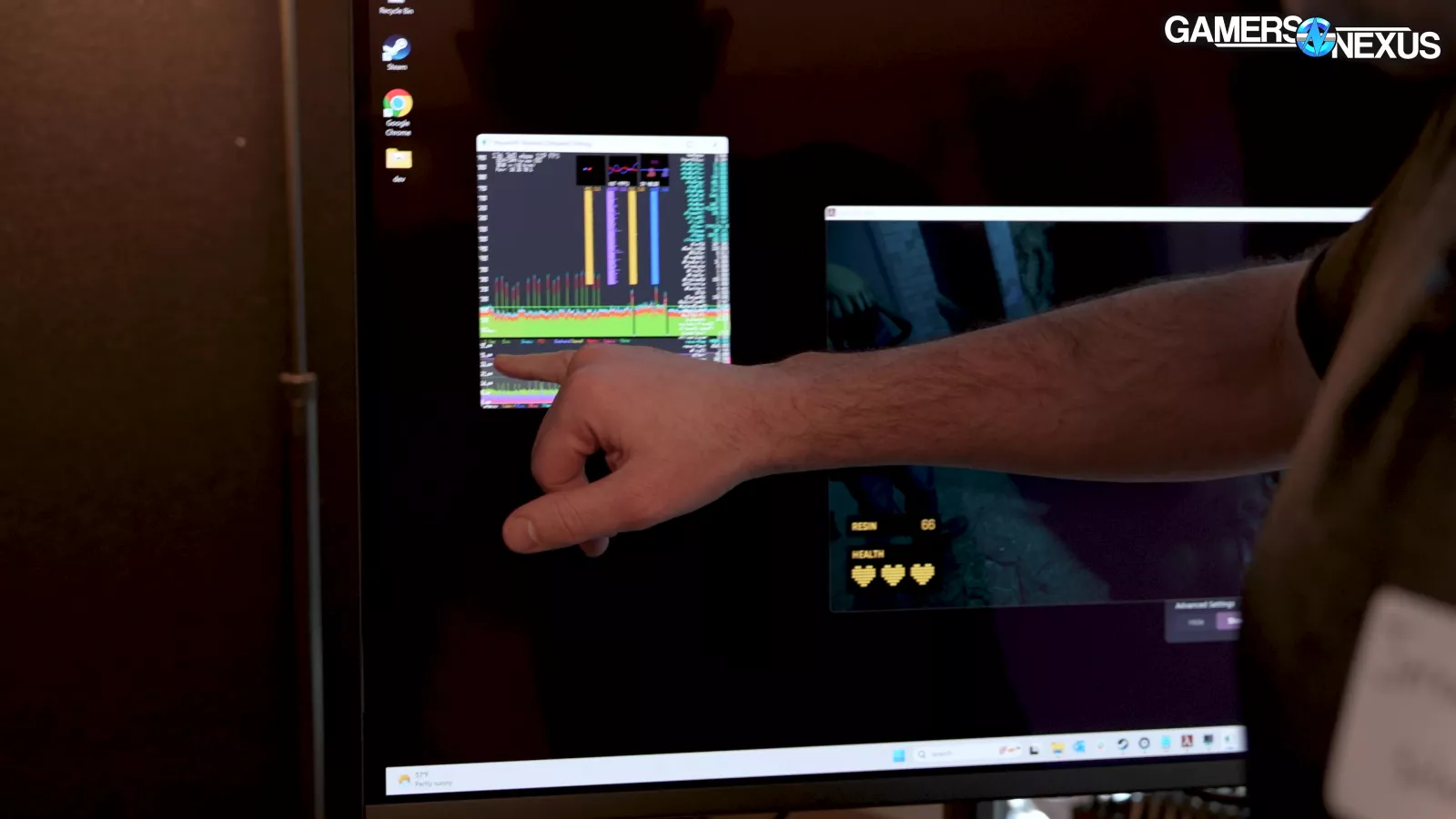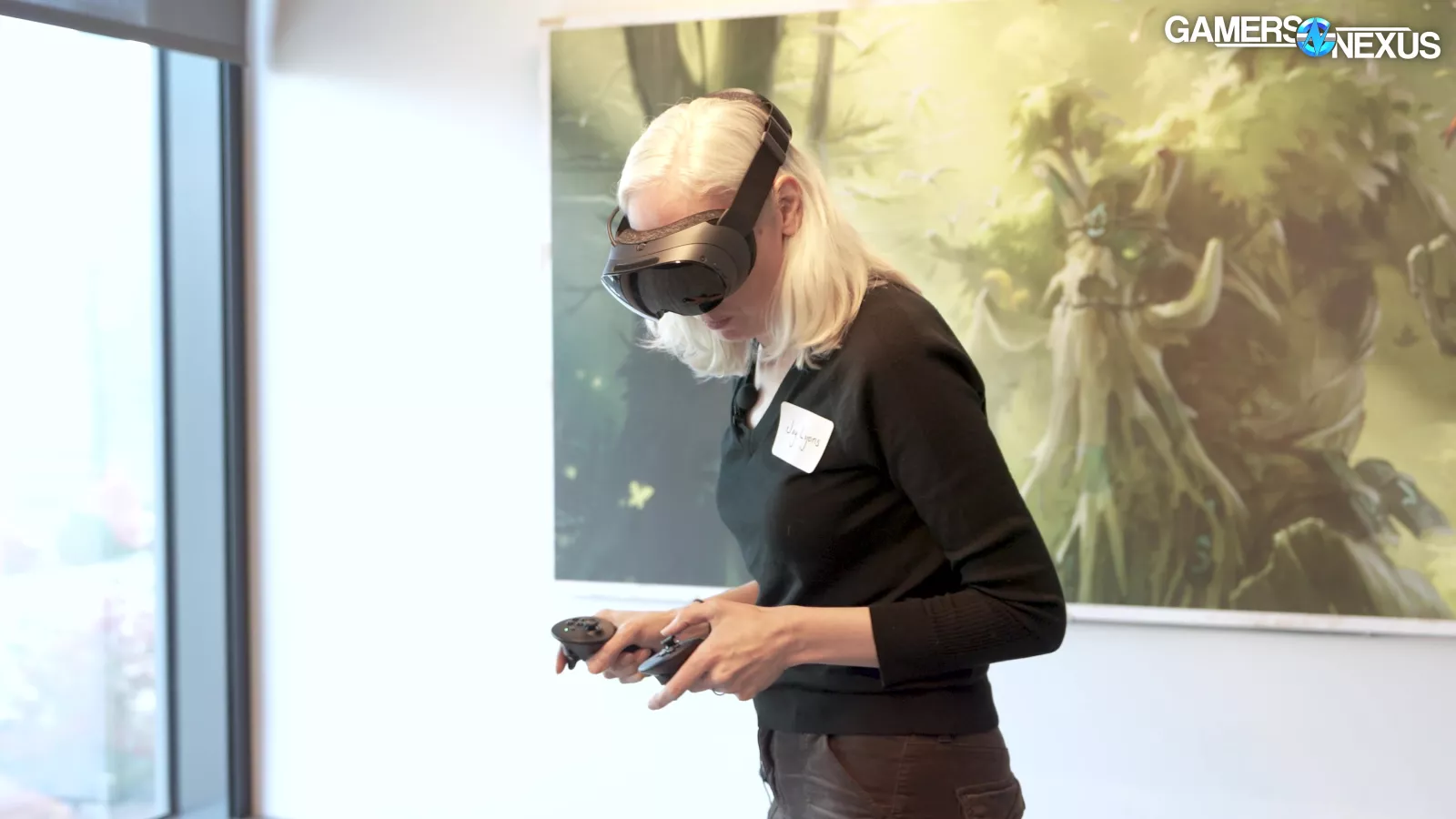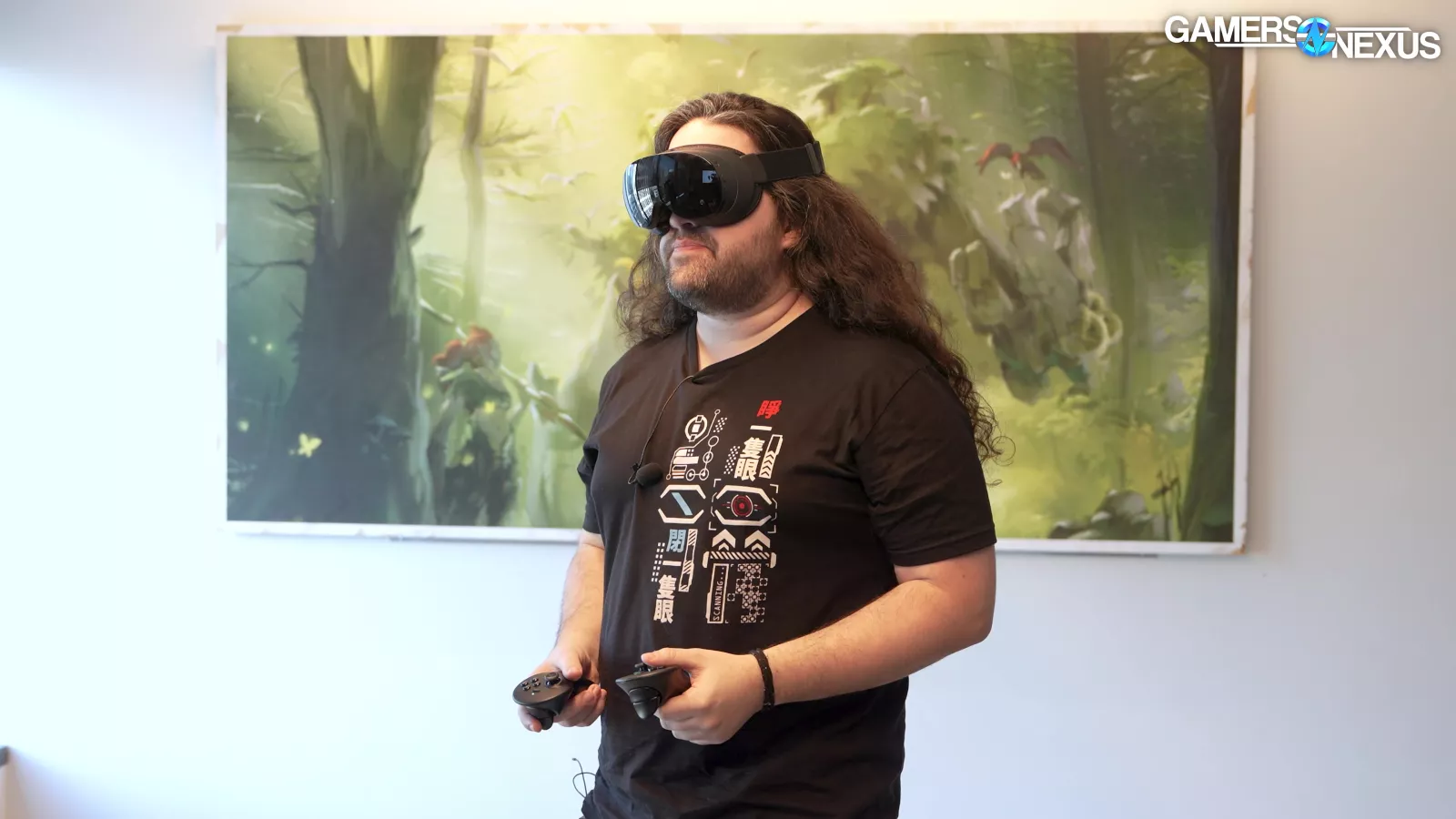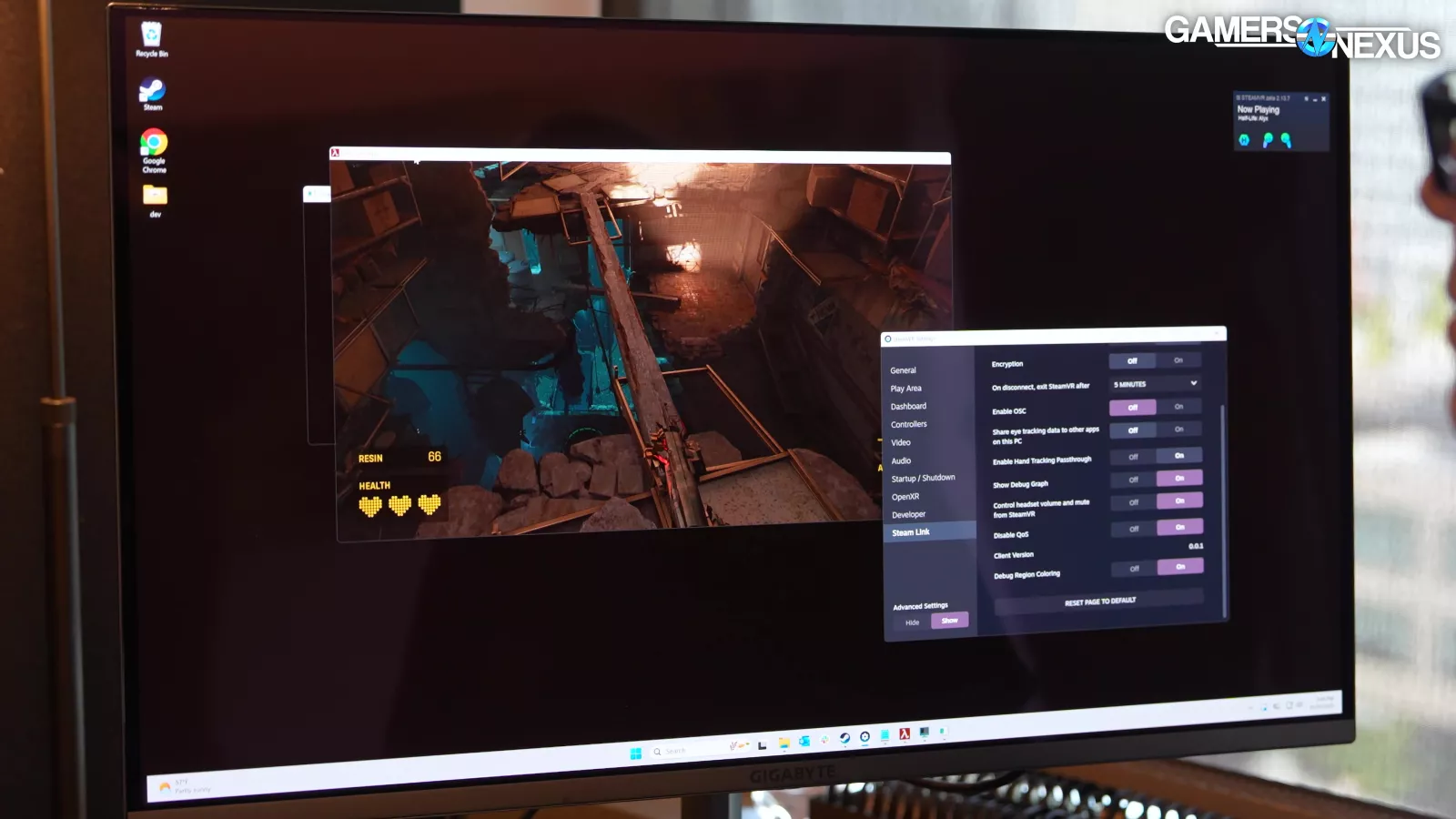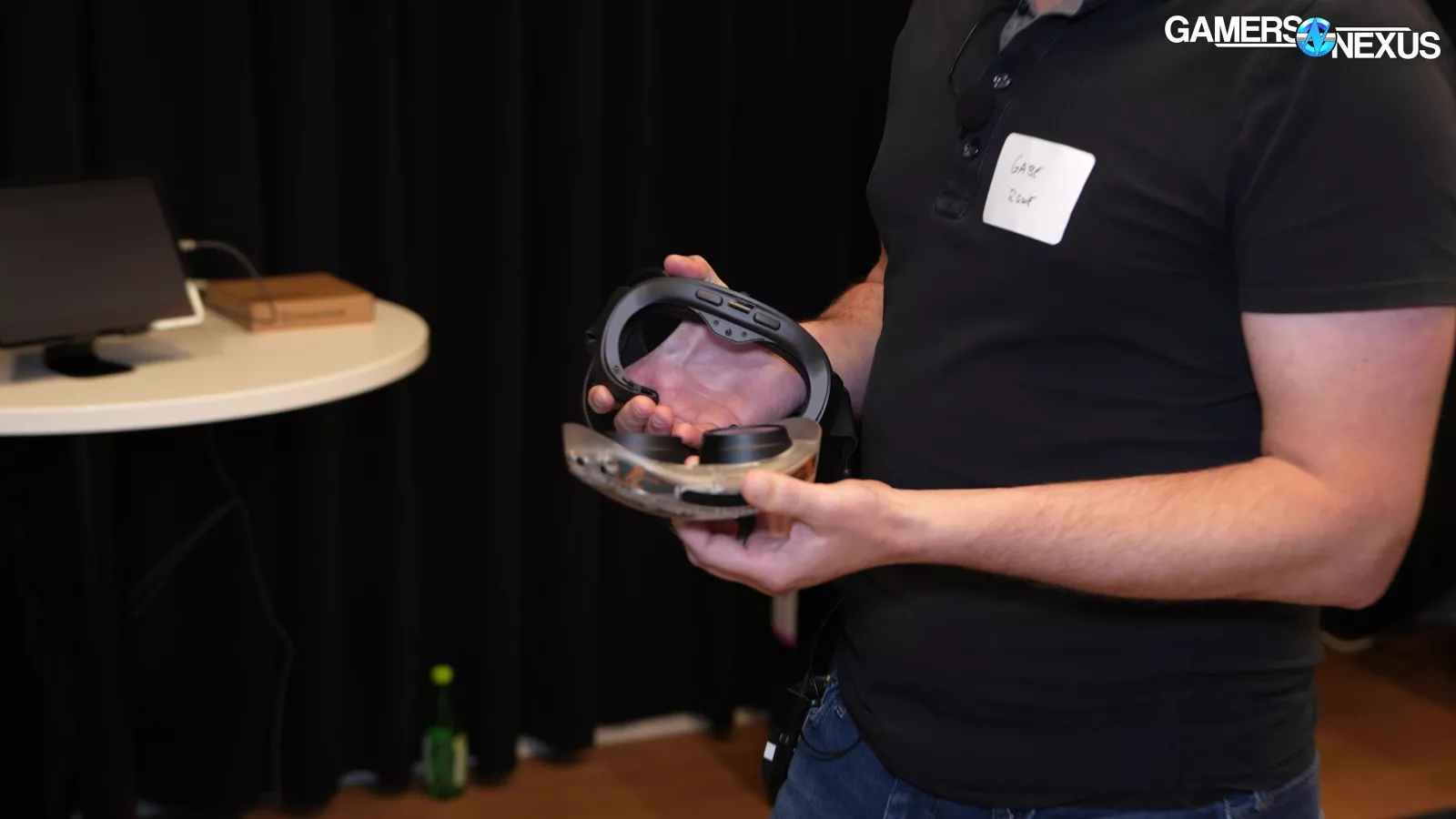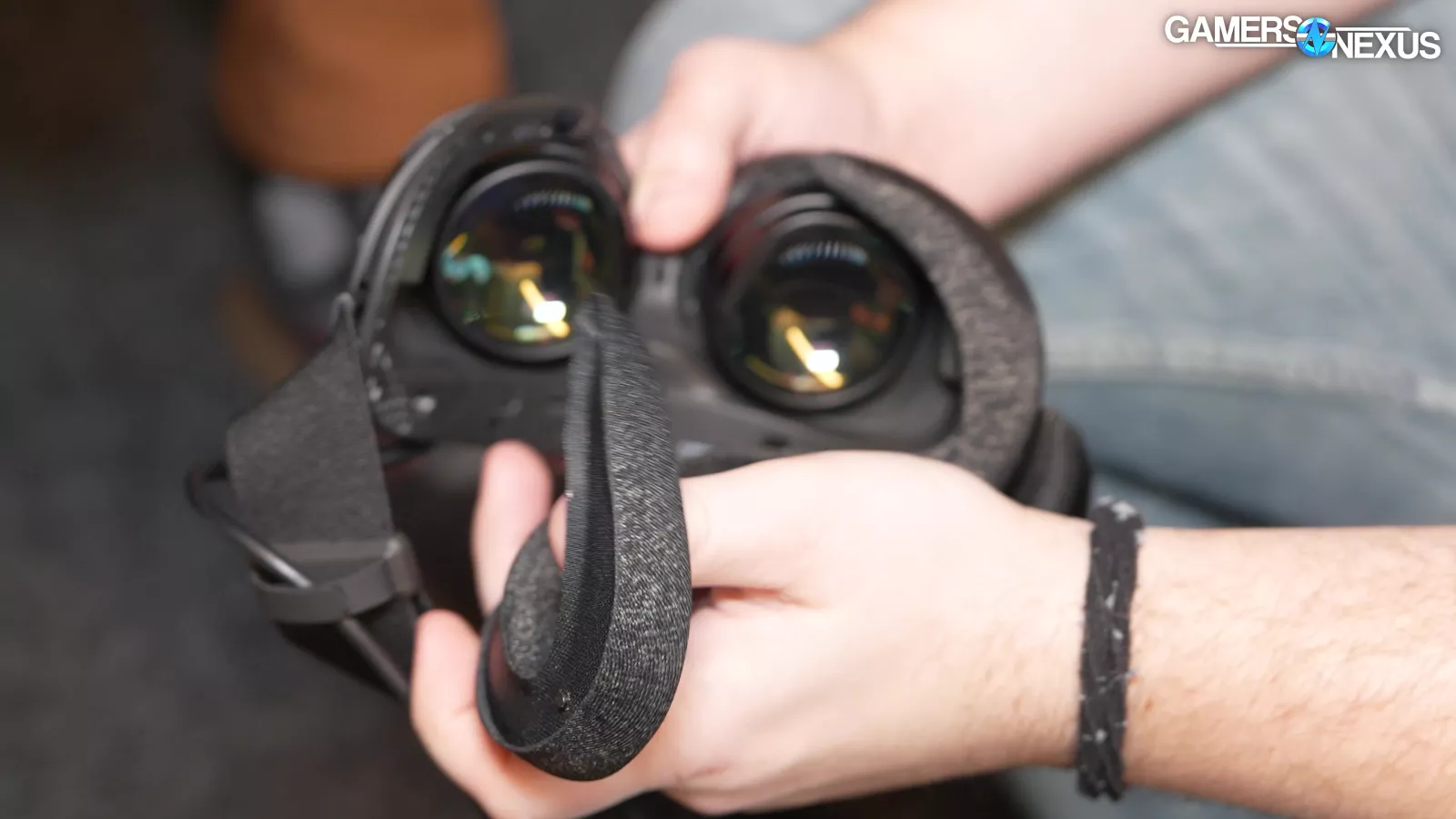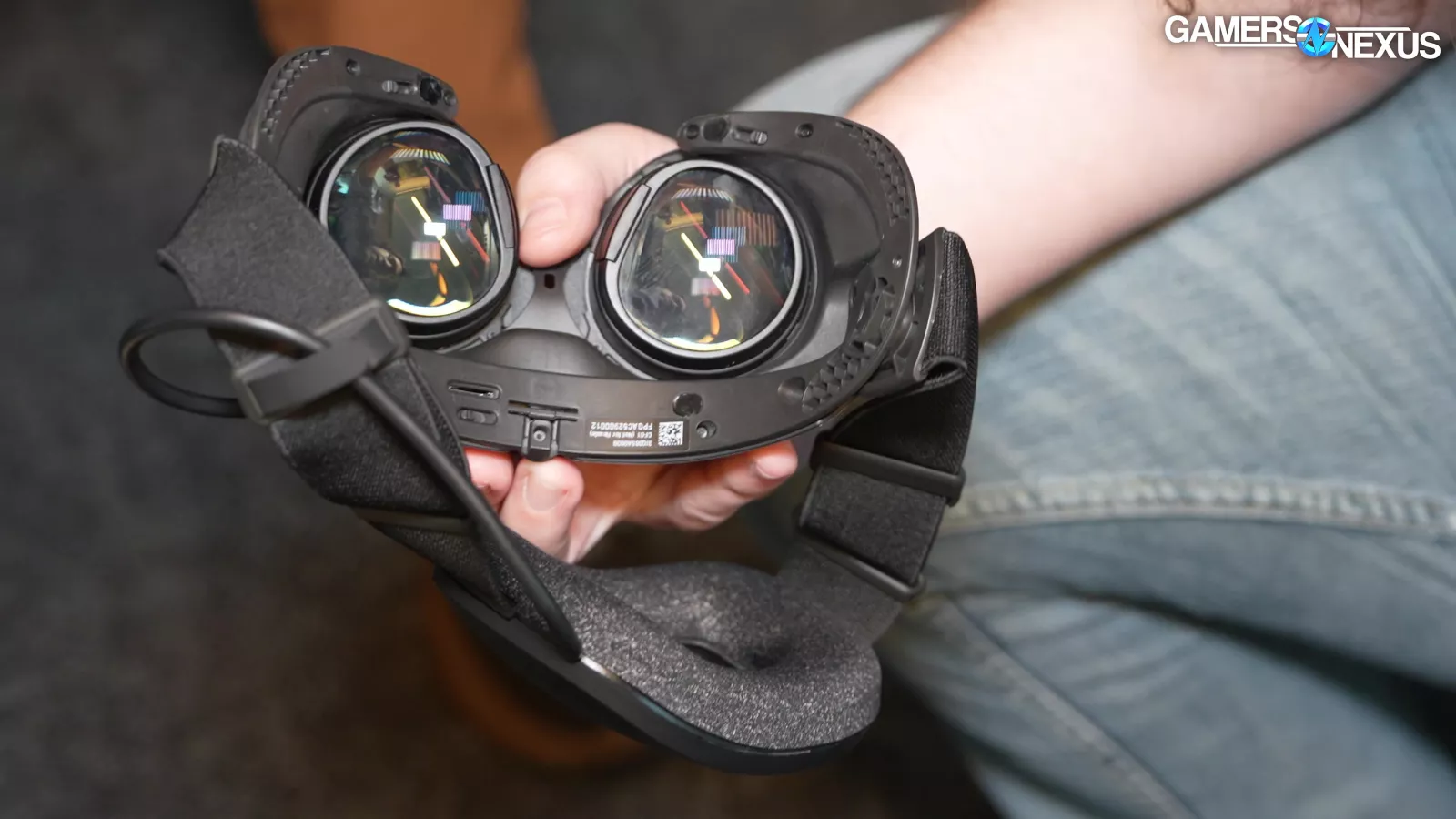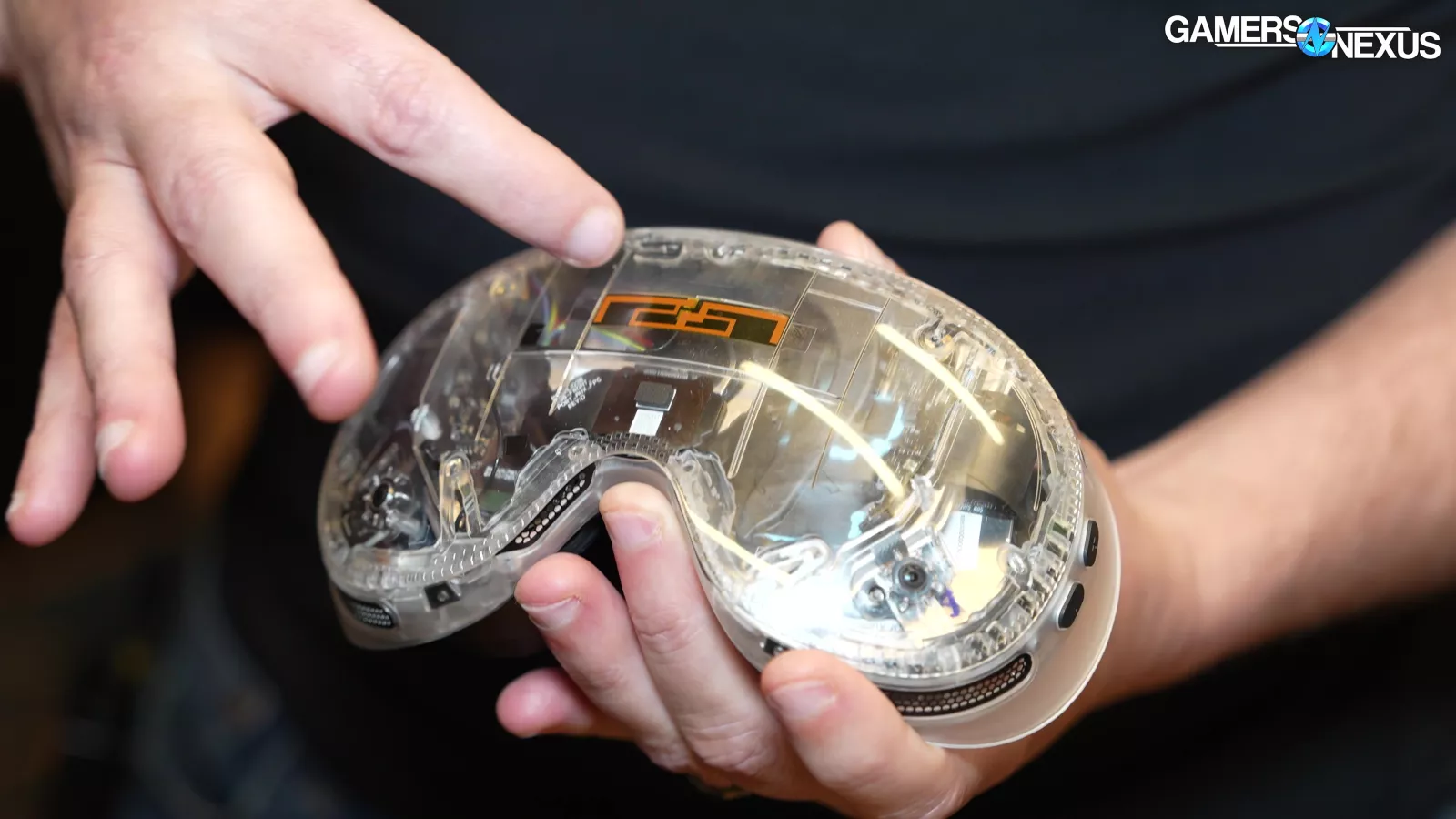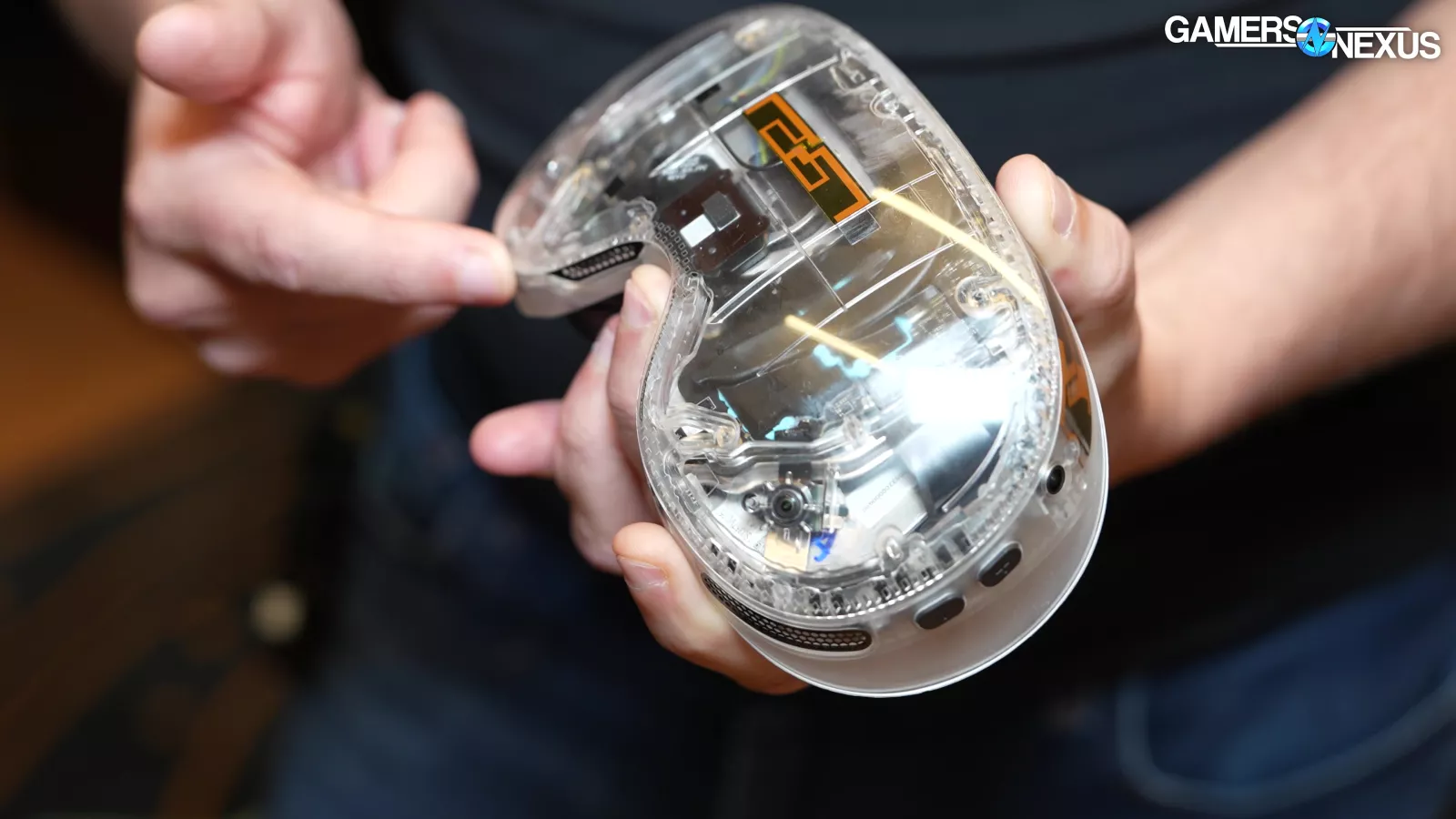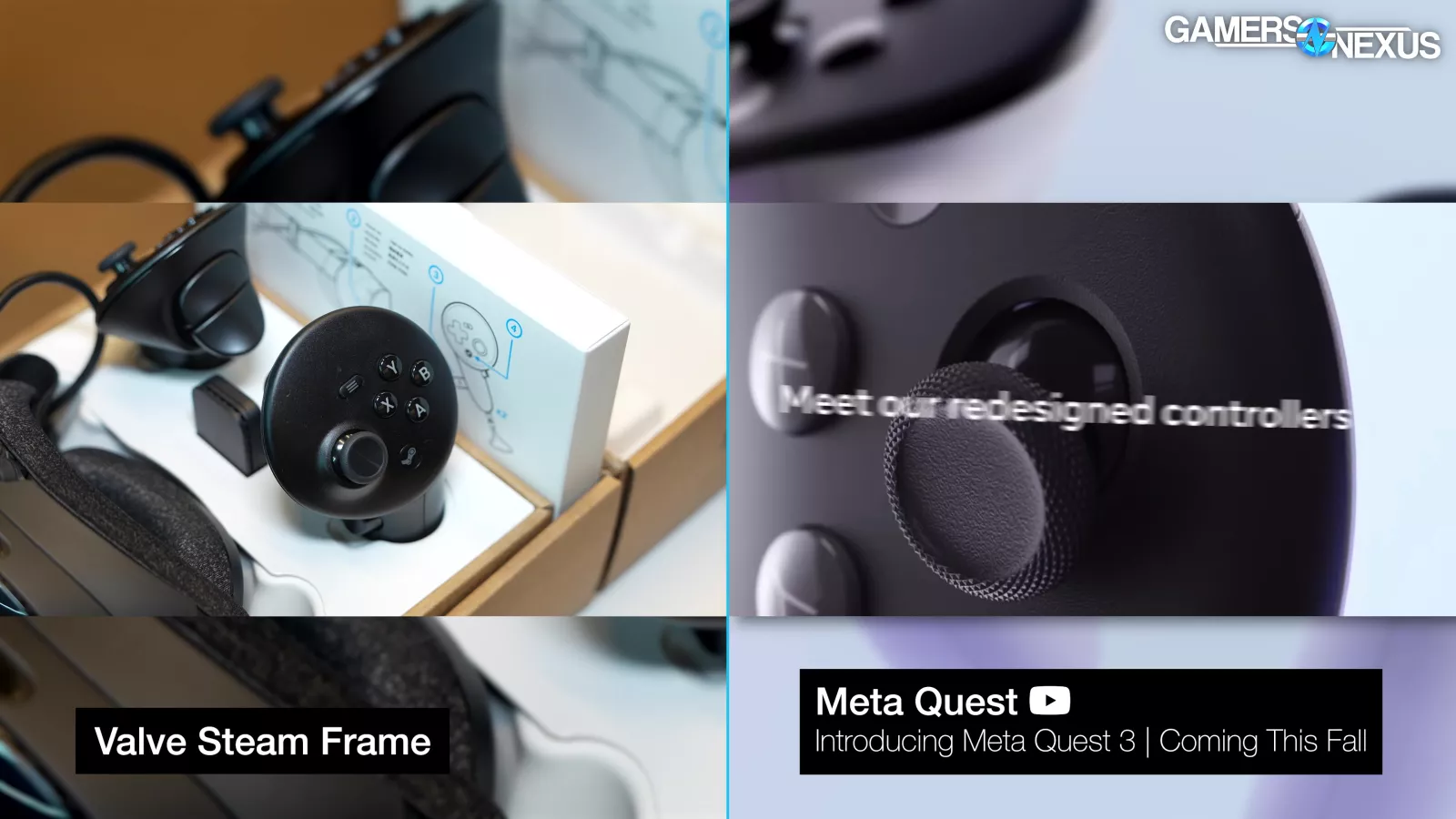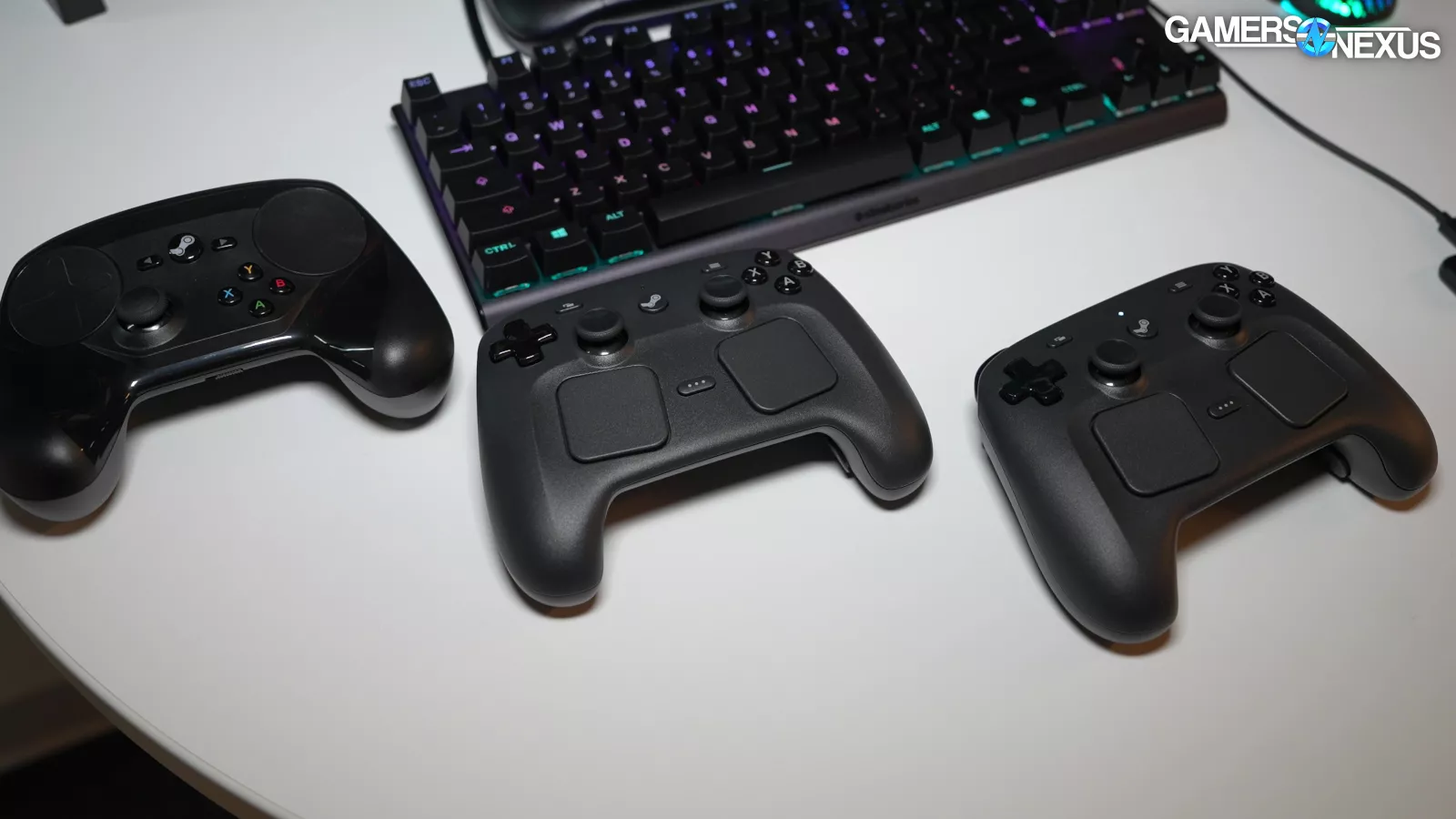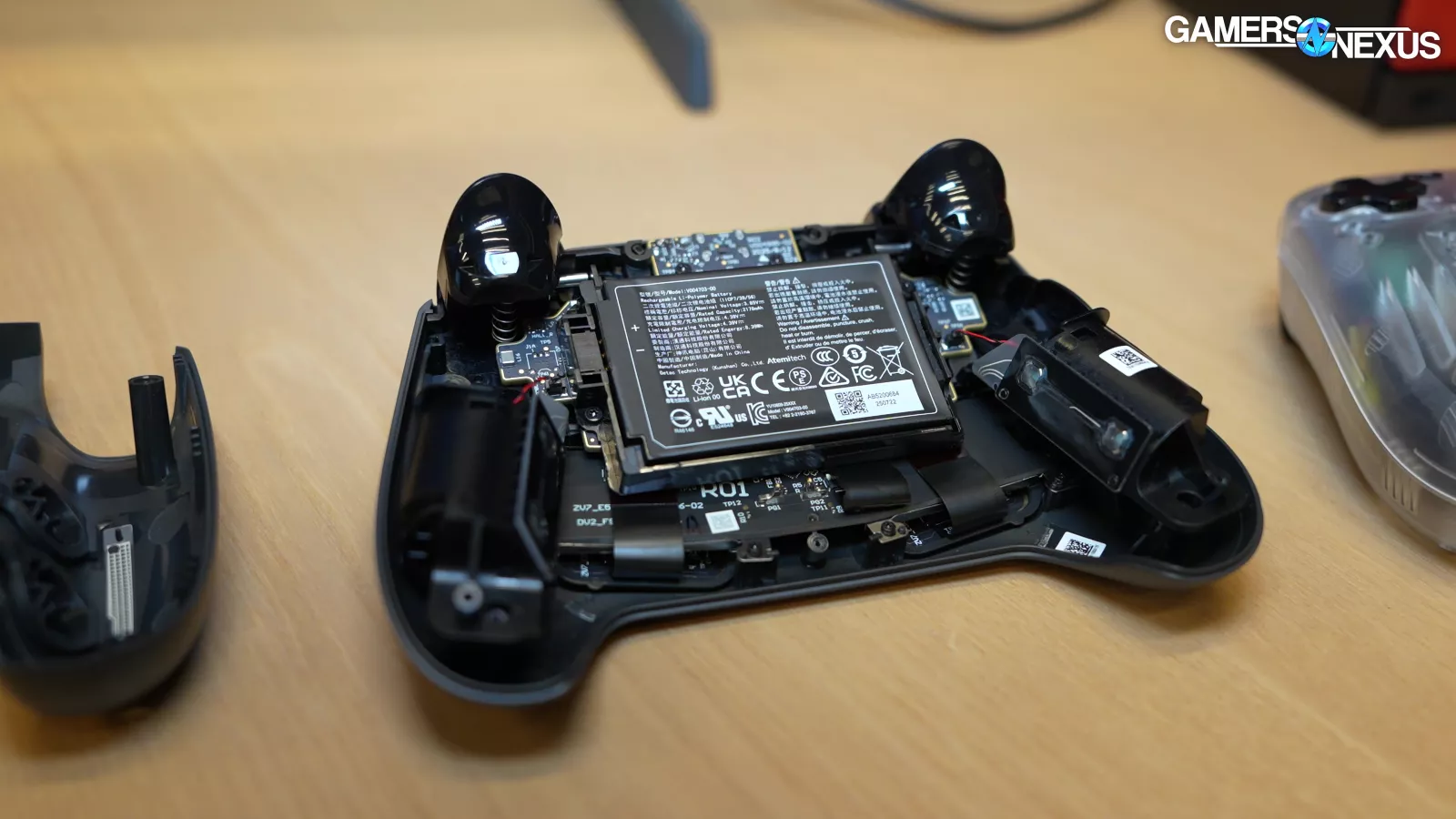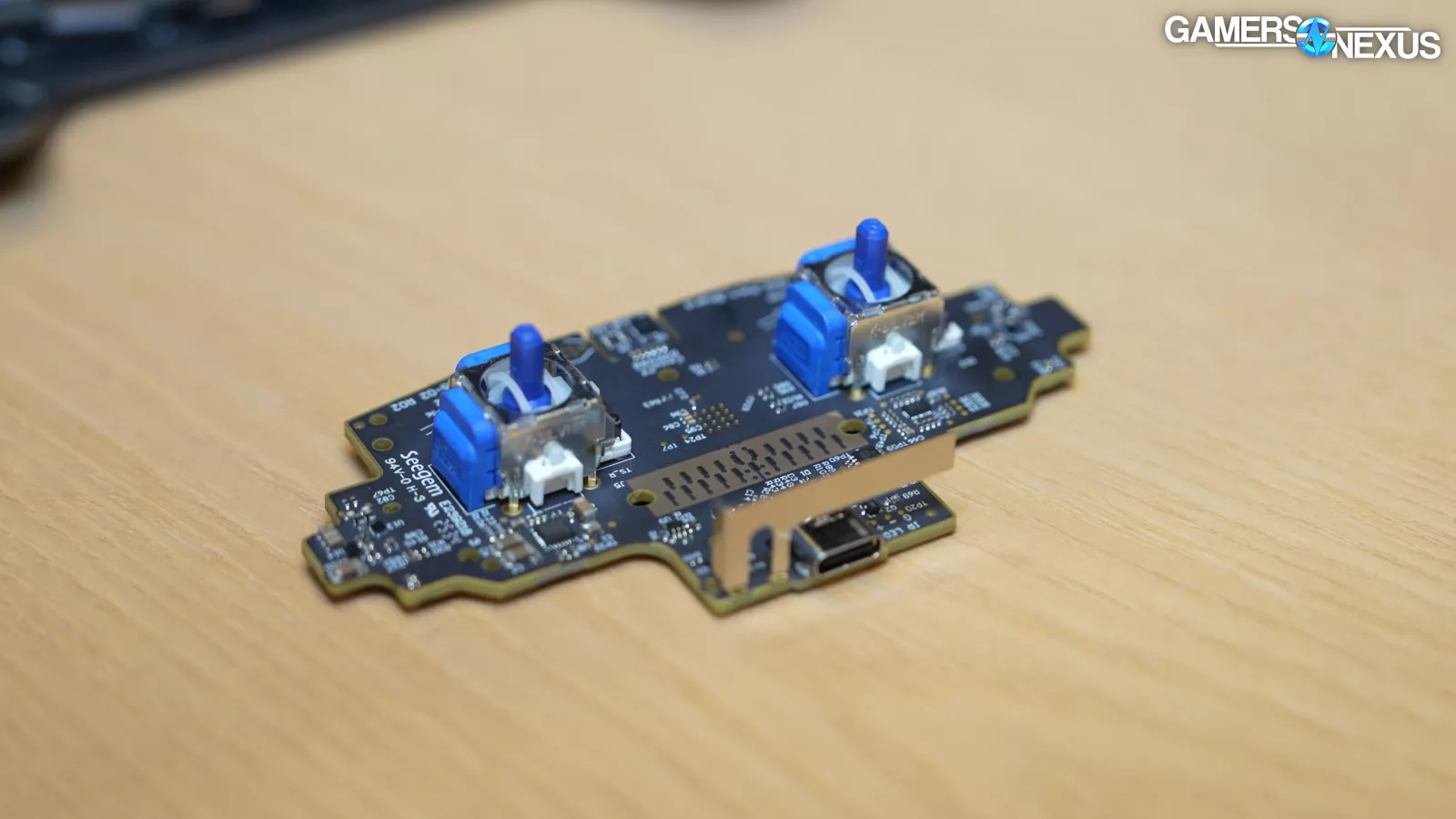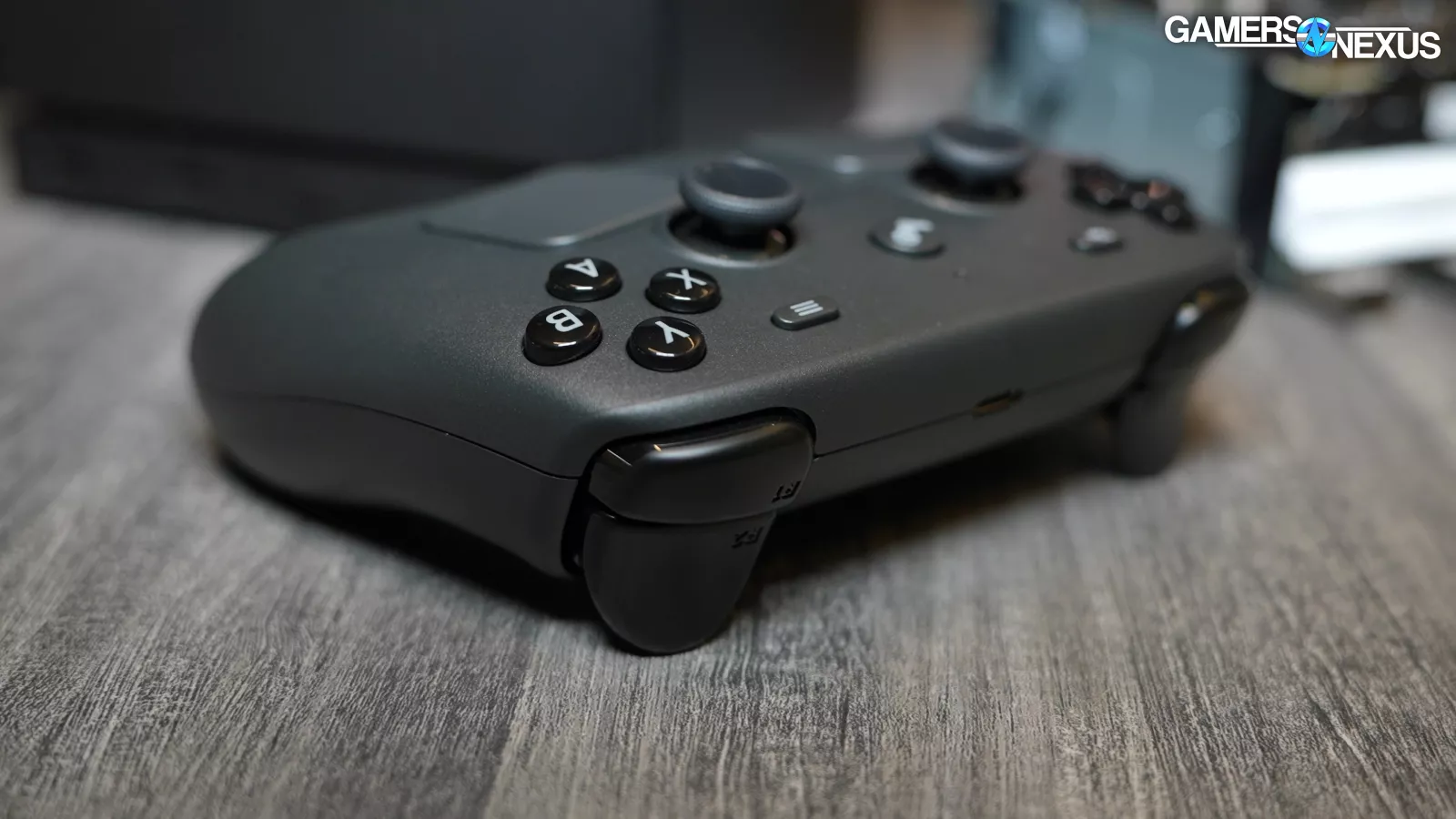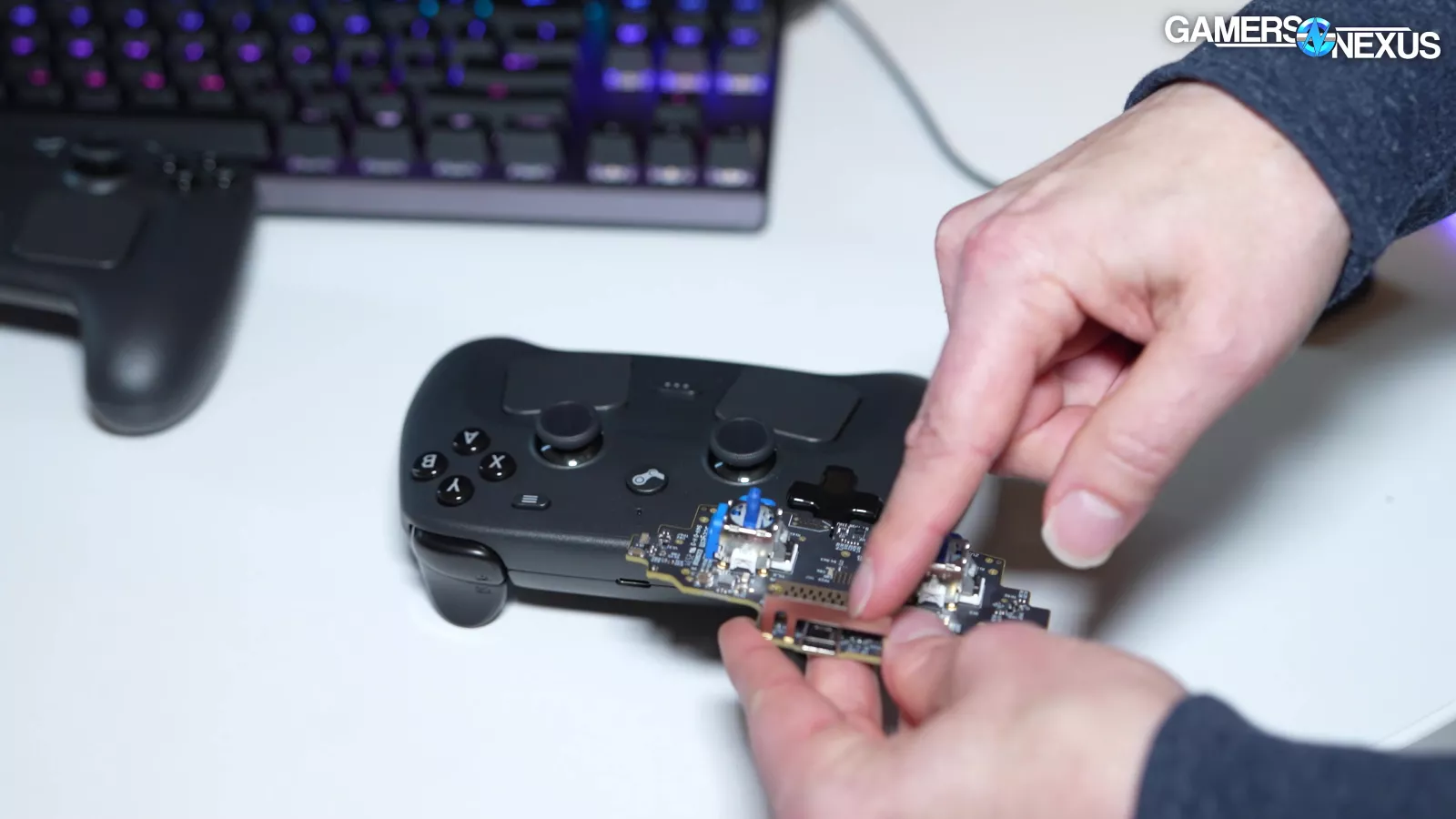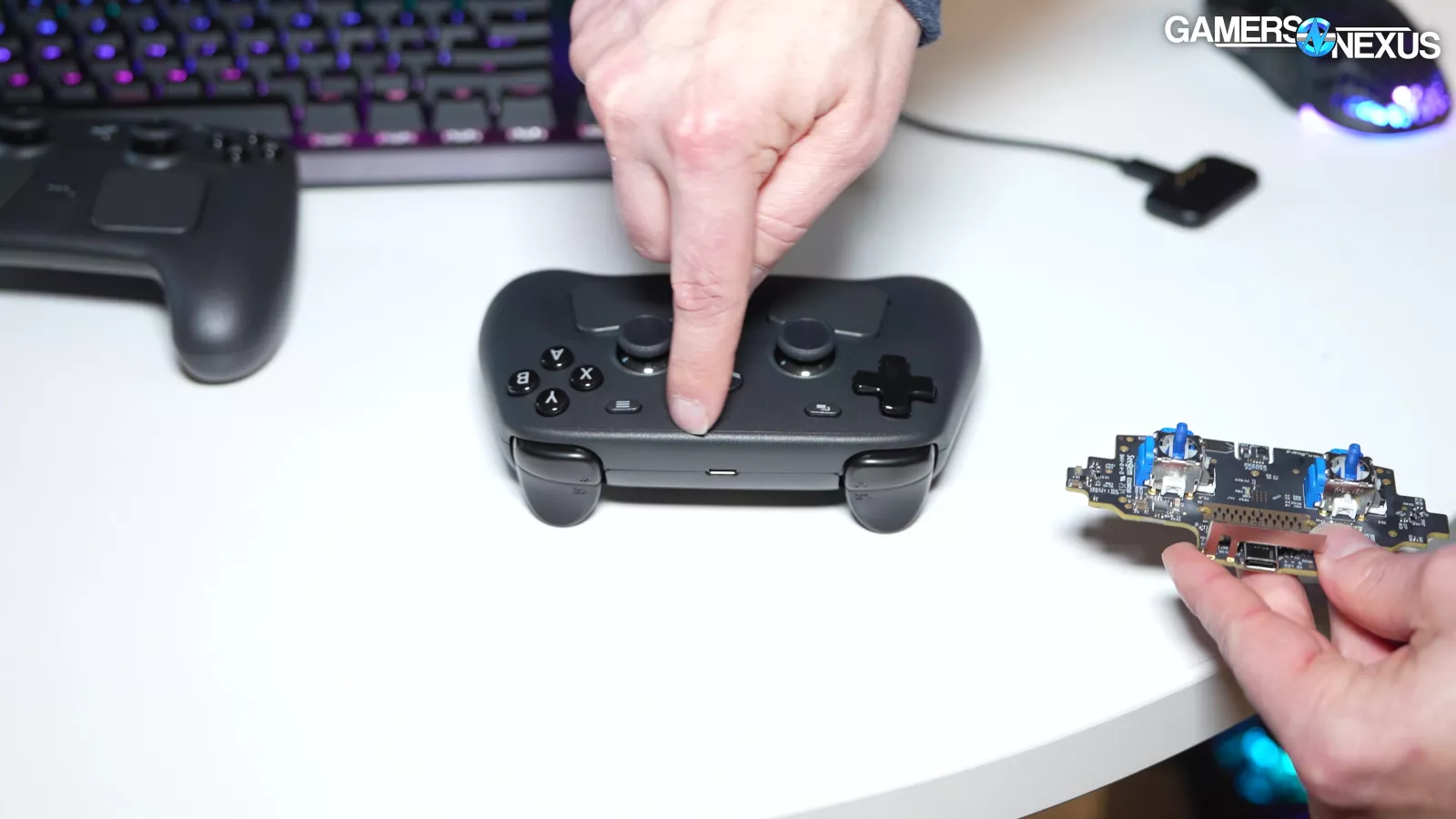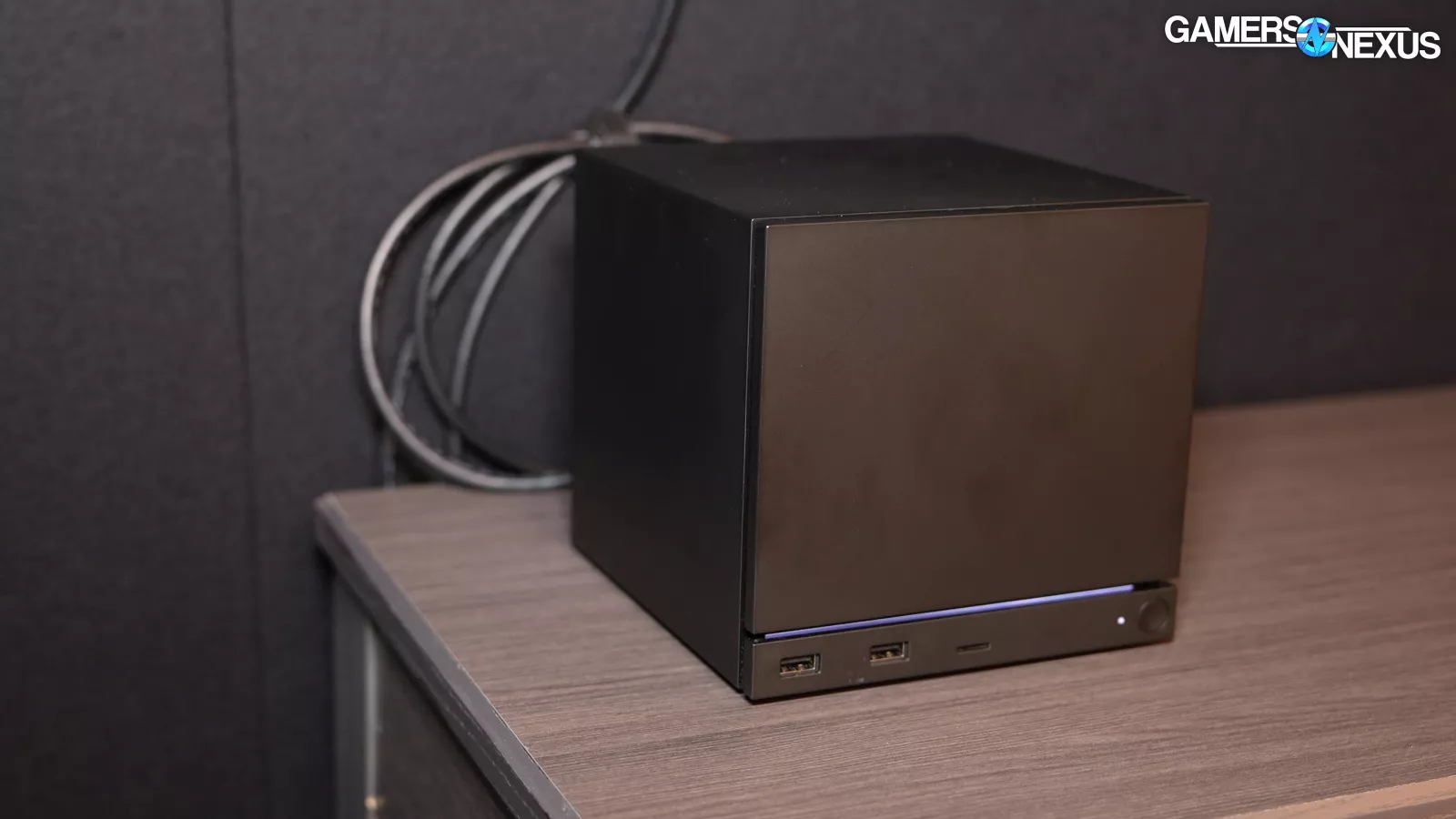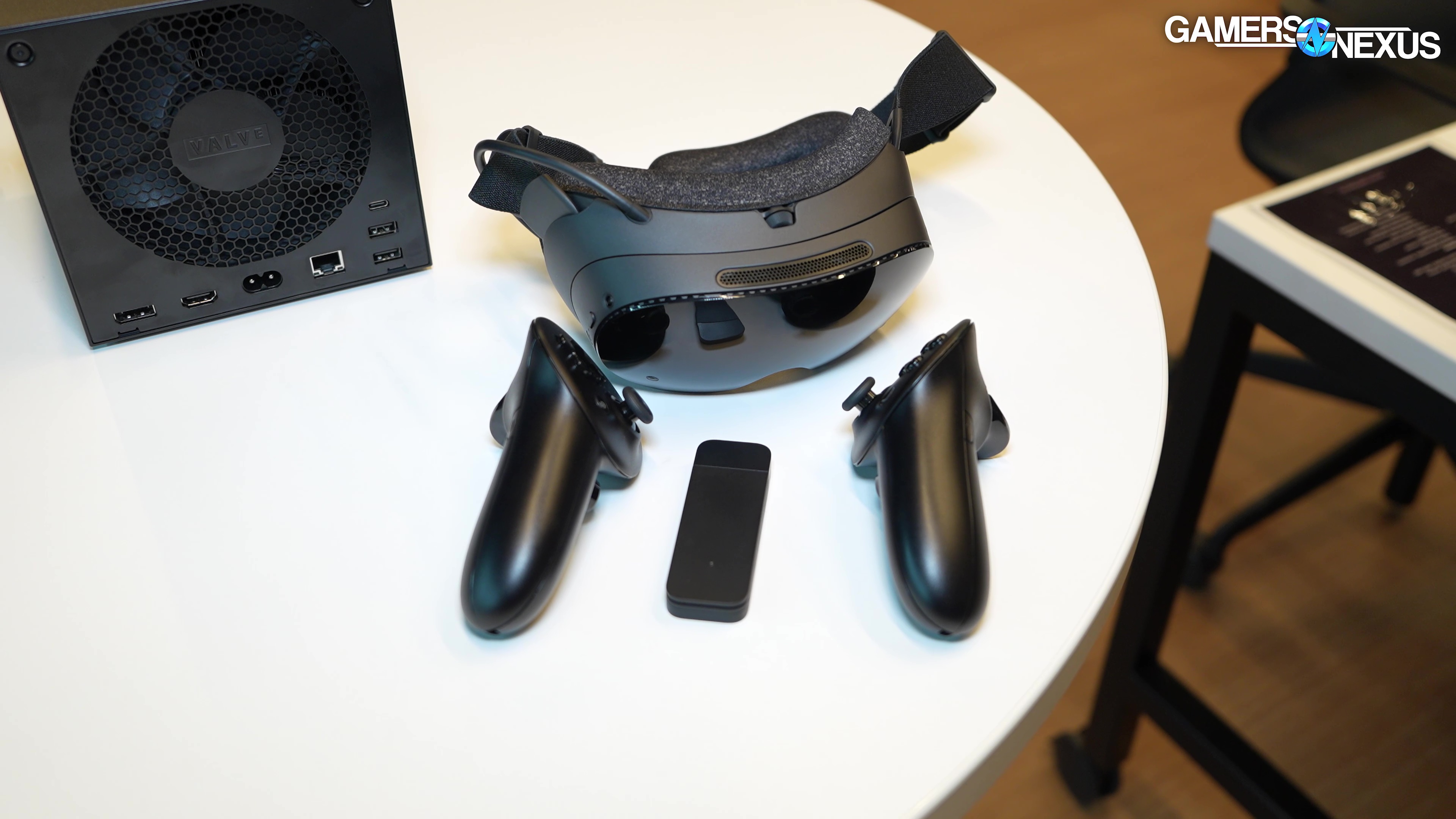
Valve Steam Machine, Desktop SteamOS, Steam Frame VR, & Controller | ft. Engineering Discussion
Last Updated:
We run through the details of Valve's new hardware (Steam Machine, Steam Frame, and Steam Controller) and interview many of the company's engineers working on the products
The Highlights
- Valve’s Steam Machine is a mini-PC that runs SteamOS
- The Steam Frame VR headset also runs on SteamOS, but is equipped with an ARM-based SOC that will be able to emulate x86 games
- The new Steam Controller makes some major iterations on the original, with a particular focus on TMR thumbsticks and connectivity
Table of Contents
- AutoTOC

Intro
Valve had several hardware announcements today.
Editor's note: This was originally published on November 12, 2025 as a video. This content has been adapted to written format for this article and is unchanged from the original publication.
Credits
Host, Writing, Editing
Steve Burke
Writing, Research
Patrick Lathan
Camera, Video Editing
Vitalii Makhnovets
Video Editing
Tim Phetdara
Writing, Web Editing
Jimmy Thang
The company is announcing its Steam Machine mini-PC with SteamOS, the Steam Frame VR headset with separable compute portion, accompanying Steam Frame VR controllers, and the new Steam Controller. There are multiple aspects of software wrapped into these, like SteamOS on ARM, FEX EMU, Proton updates, and, of course, SteamOS for desktop.
At our own expense, we bought plane tickets and booked a hotel, then flew out to Valve’s headquarters for engineering interviews -- and we got some A-tier information from the thermal, acoustic, and electrical engineering teams.
The release date for all of these is 2026 sometime, with at least the Frame targeting early 2026. Pricing is TBD.

We were told that the Steam Machine will be priced as “an entry-level computer,” but without a range on what that means (and everyone’s interpretation is probably a little different). Valve did emphasize that it won’t be priced like a console, though, so we’d anticipate higher than console prices. There’s no telling where RAM prices will be when they launch.

Valve told us that the Frame won’t be priced higher than the Index, but was non-specific on which SKU or bundle.
This article will focus on the news and engineering interviews for each component. We have at least two separate videos coming up that we split-out just because we have a ton of depth for all of them and we didn’t want to chop it down. Our next video covers the Steam Frame acoustics, power, and thermal engineering. We will also have a video about the Steam Deck with one of its engineers.
For now, let’s get into the specs and news for SteamOS (which is a Linux-based operating system) finally coming to desktop, the Steam Machine, the controller, and the controllers for VR. We’ll be peppering in relevant interview quotes we conducted with Valve throughout the article below.
Valve has attempted to launch Steam Machines in the past, but never committed to a rollout. This time, they’re serious about it and they’re shipping a first-party solution. This also means that SteamOS is getting an official shipment to desktop, which should bolster support for self installs even if Valve isn’t fully tuning it outside of the Steam Machine.
Let’s start with the Steam Machine.
Steam Machine
We'll start with the new Steam Machine, which Valve claims has "six times" the performance of the Steam Deck.
Specs Summary
Starting with the specs:
The Steam Machine uses a BGA solution with SO-DIMM memory and modular M.2 storage, shipping in 512GB and 2TB models (with a microSD slot for additional storage) and optional Steam Controller bundle. MicroSD cards can be pulled relatively seamlessly from the Steam Deck and Steam Machine and transplanted to each other with games on them (in an easier way than Windows). The CPU is an AMD 6-core, 12-thread Zen 4 processor with its IGP fused off and the GPU is a separate "semi-custom" RDNA3 28-CU chip that supports ray tracing, paired with 8GB of GDDR6 VRAM. RDNA3 was the RX 7000 series, with the 32-CU RX 7600 being relatively close as a CU-count comparison, though there are other specs to consider as well. System memory is separate at 16GB of DDR5-5600 laptop memory.
For rear ports, the Steam Machine has one DisplayPort 1.4, one HDMI 2.0 (with CEC), one 1Gbps ethernet, one USB Type-C 3.2 Gen 2 (10Gbps), and two USB 2 Type-A ports. There are also two USB 3 Type-A ports in the front, 2x2 WiFi 6E, and another two separate antennas, one for Bluetooth and one specifically for Steam Controllers. Out of the box, it ships with SteamOS.
Our biggest immediate concern without having tested it is how closed-off the box is in general, with the single 120mm fan used as a pull solution through the bottom, which has minimal elevation, and holes in the front. The front plate pulls to provide much greater access to air. We can’t really pass too much judgement here until we have it to benchmark, which we will definitely do. Valve did a lot of tuning on thermals. The system uses a 120mm fan that’s used as a pull solution, which will pull air through the bottom and the holes in the front.
Details
There were two critical shortcomings with the original Steam Machine project: first, Valve never shipped it, although we did cover third-party small form factor PCs intended to become Steam Machines. More importantly, Valve never planned any first-party production (beyond a small beta run) and there was no reason to use the 2015 version of SteamOS over Windows.
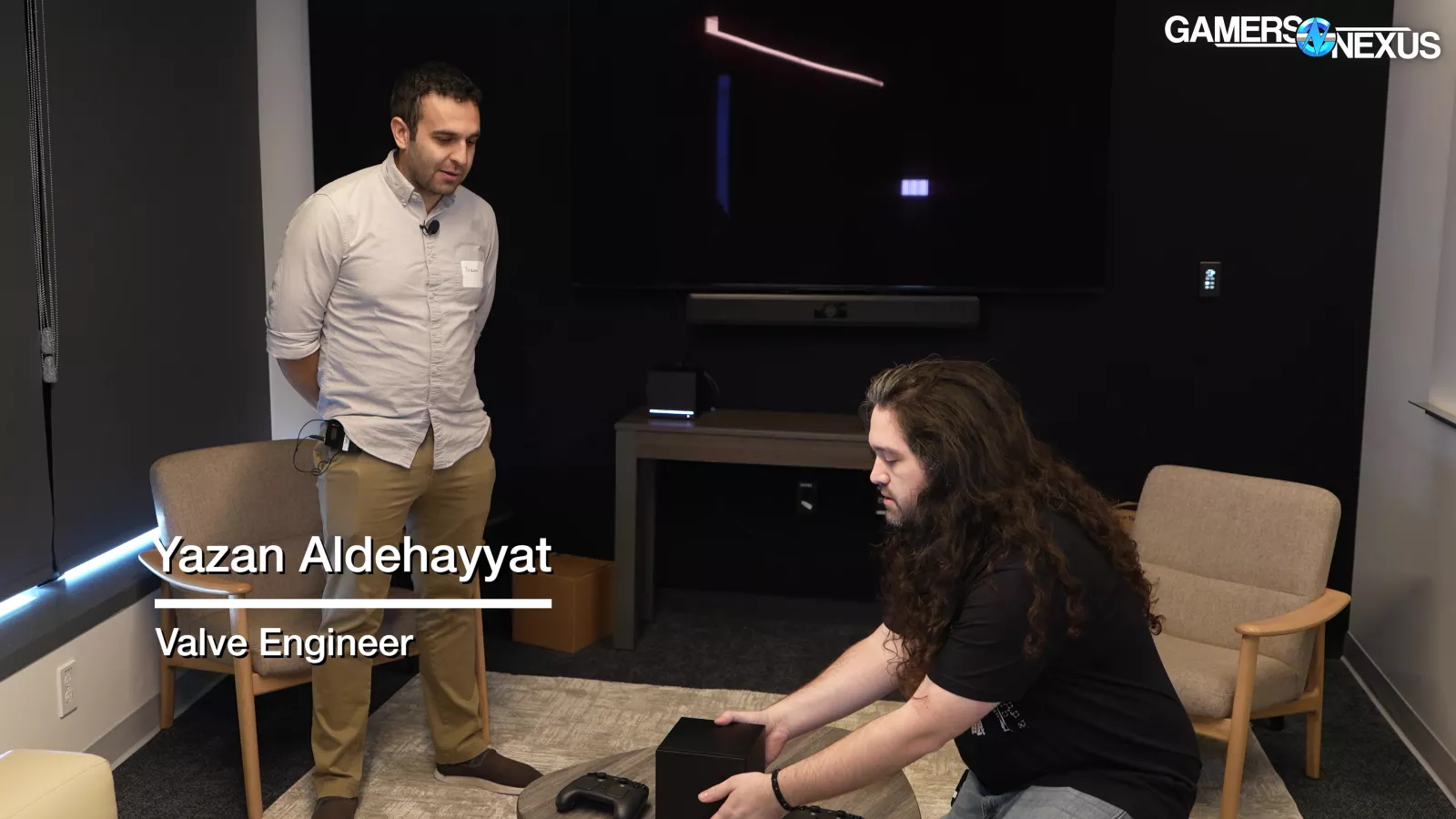
Valve Engineer Yazan Aldehayyat: "So, essentially, we just feel like now is the right time for us to make this happen, just because we finally feel like we have the software and the hardware pieces all figured out. By all accounts, the SteamOS experience on Steam Deck, people love it, they love the convenience. We're seeing a lot of people use their Steam Deck docked to their TV. Primarily to us that just means that console, you know, experience is there. But we just simply feel like if we were to make something that's more, you know, intended for that use case, that doesn't have the weight and battery life limitations, we can give those people a much better experience."
Although shaped like a console, the Steam Machine is just a very small computer: there's a usable mouse-and-keyboard desktop mode despite the clear living room focus. The BIOS is accessible and modifiable (and navigable with a Steam Controller). From what Valve says, it sounds like it'll be a limited laptop-style BIOS, but Valve mentioned users will be able to "play around with frequencies."
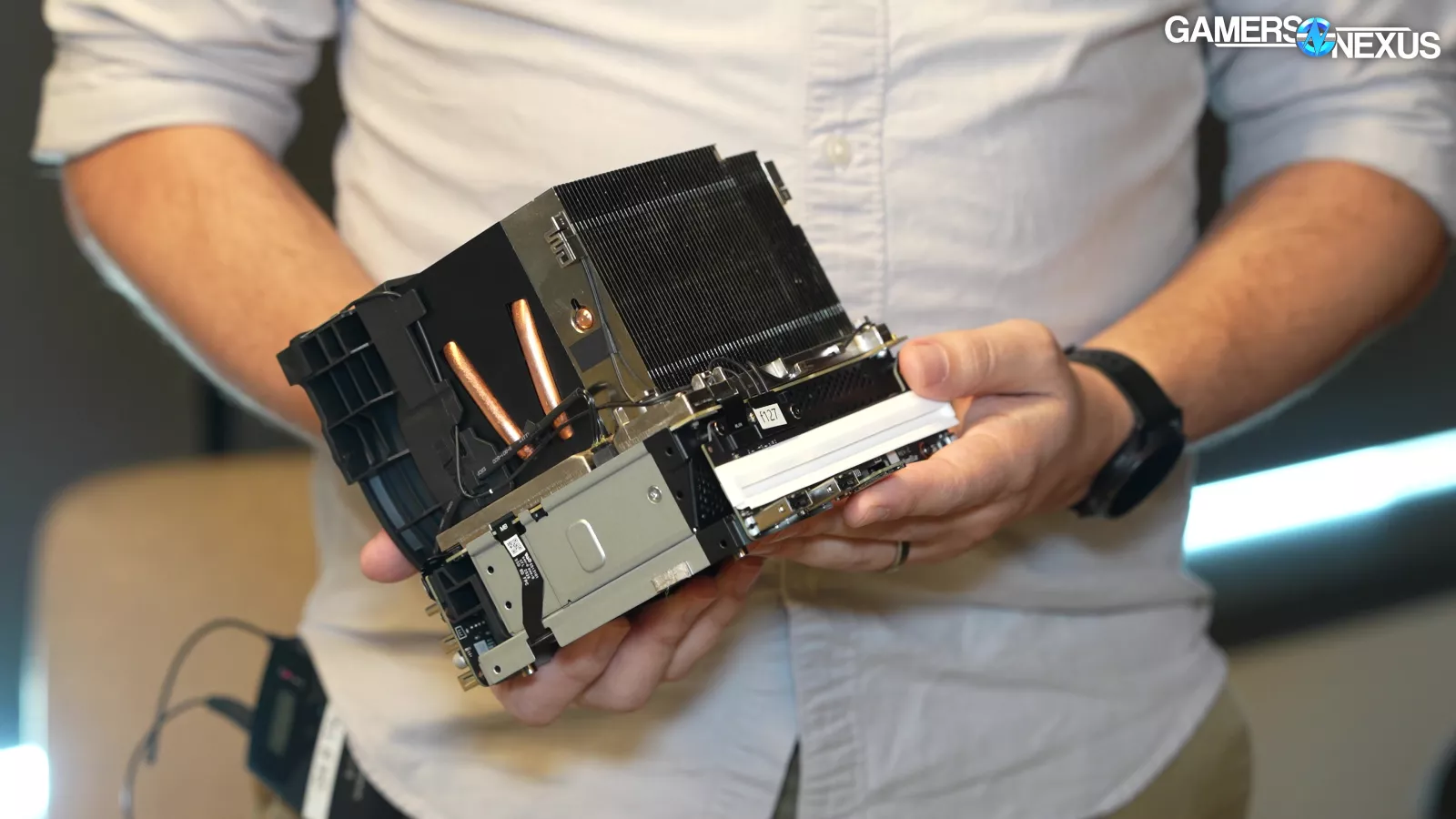
We asked Valve about its choice to go with a BGA Zen 4 solution rather than something socketable, seeing as that’d benefit from AM5’s likely immortality if it’s anything like AM4.
Valve considered modular CPUs and GPUs, but settled on soldering both chips to the motherboard for thermal and size reasons. Unfortunately, this means it’s not upgradeable, but it gives Valve more control to make it smaller.
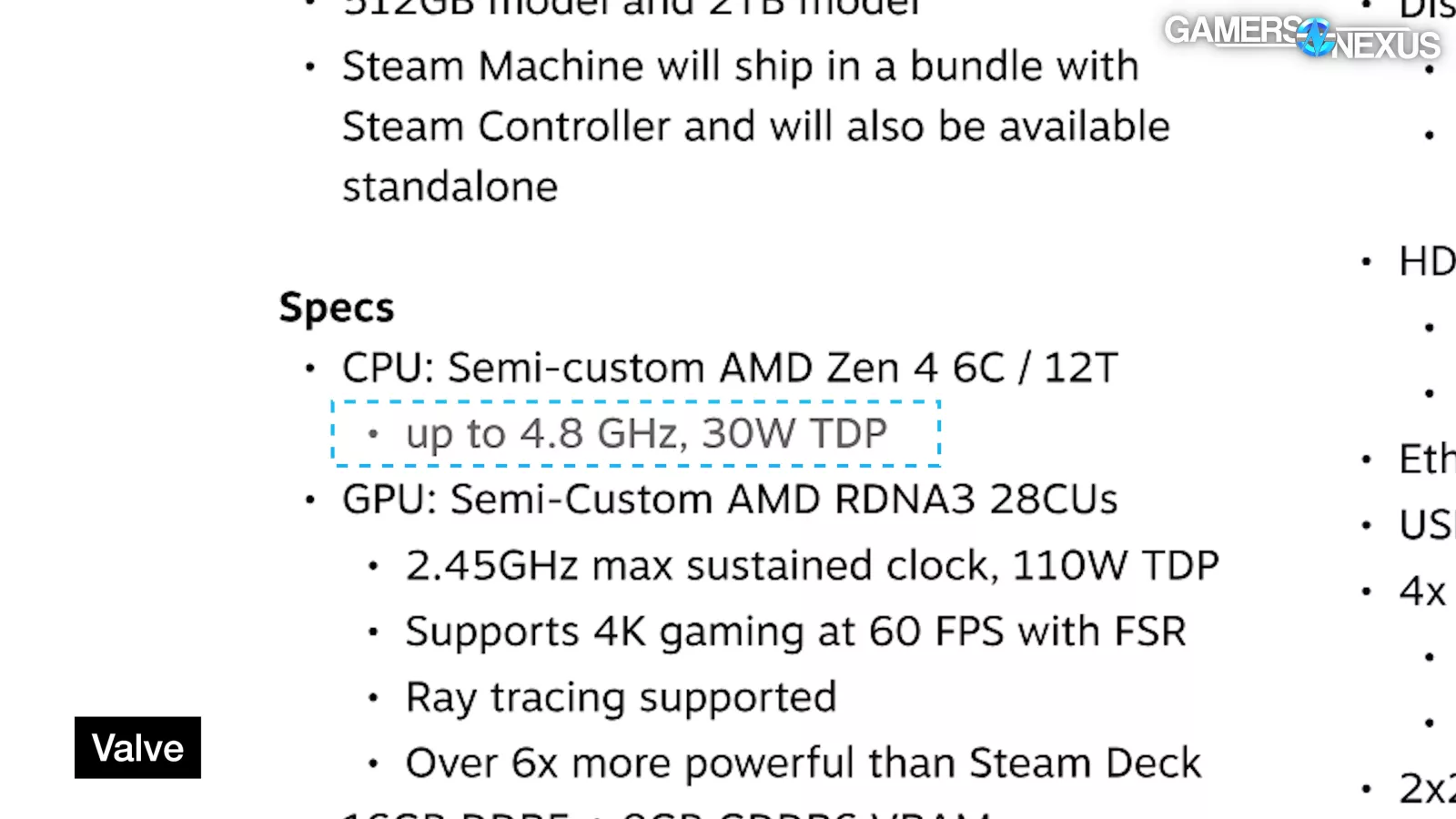
The CPU has a peak frequency of 4.8GHz, which sounds similar to an R5 7640U and falls short of something like an R5 7600.
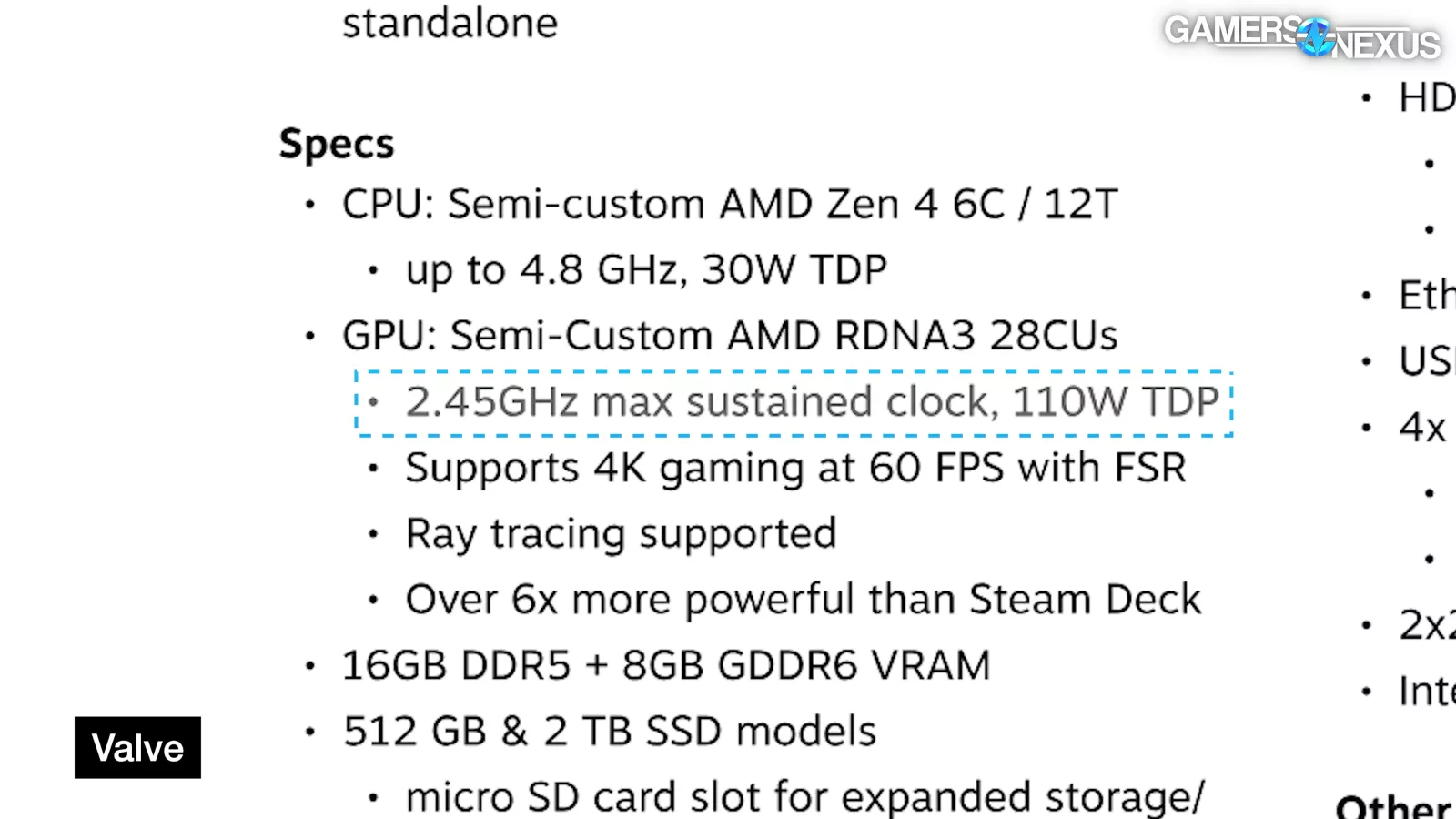
The silicon is off the shelf, but has been customized with firmware, software, and fusing off certain elements. Valve told us any included IGP is fused off, meaning AMD semi customizes these. Valve told us the Steam Machine doesn’t have a discrete chipset and instead routes all I/O through the CPU. The discrete semi-custom 28CU GPU has a maximum sustained frequency of 2.45GHz, although its peak opportunistic boost would be higher.
Valve Engineer Yazan Aldehayyat: “I mean I was on the motherboard, so I'm really proud of how small it is for what it is, it's, you know, both the CPU and the GPU's on it. We use the same thermal module to cool everything, so both the CPU and the GPU, the memory, and the FETs as well, are all connected to the same thermal module.”
Gamers Nexus: “Do you know, off the top of your head, the sort of power consumption during peak load, or nominal load?”
Valve Engineer Yazan Aldehayyat: “So the GPU is anywhere between 110-130W, we're still dialing that in to be honest. CPU is closer to 30W. And, you know, once you add in memory and peripherals and all that kind of stuff, we're typically in the 200+ Watt range."
In a later discussion, Valve told us it locked the GPU in at 110W TDP. We asked about the VRM, although we'll have to wait for a teardown to get final answers, but this is what Aldehayyat said off the top of his head:
Valve Engineer Yazan Aldehayyat: "Six phase for the GPU, and then for the CPU we have two or three phases, I don't remember exactly. The problem is, like, there's different rails, and so, like, the GPU there's, like, six phase for core, two or three phases for memory. For the CPU, it's, I think, total about four phases. Split between different rails."

Power is handled via 12V only. On a pure technicality, it’s not necessarily 12VO in the sense that it is using a blade connector instead of going through cabling. This helps with things like space. The system also uses a 300W PSU that’s mated directly to the motherboard with a blade connector that Valve says hits over 92% efficiency in "most scenarios." Mini PCs frequently cheat the volume calculation by using external power bricks, so it's promising to see Valve commit to taking up so much of the Steam Machine's volume with a true internal PSU, especially given the thermal challenges.
Valve Engineer Yazan Aldehayyat: “We spent a lot of time thinking about airflow. Living room is actually a really challenging thermal environment, right, like people can shove them in corners, put them behind things, so we thought about how do we have intake and exhaust that is hard to block for somebody who's not really thinking about it.
Like, so we have bottom intake, so airflow kind of just flows around the front here, through here.
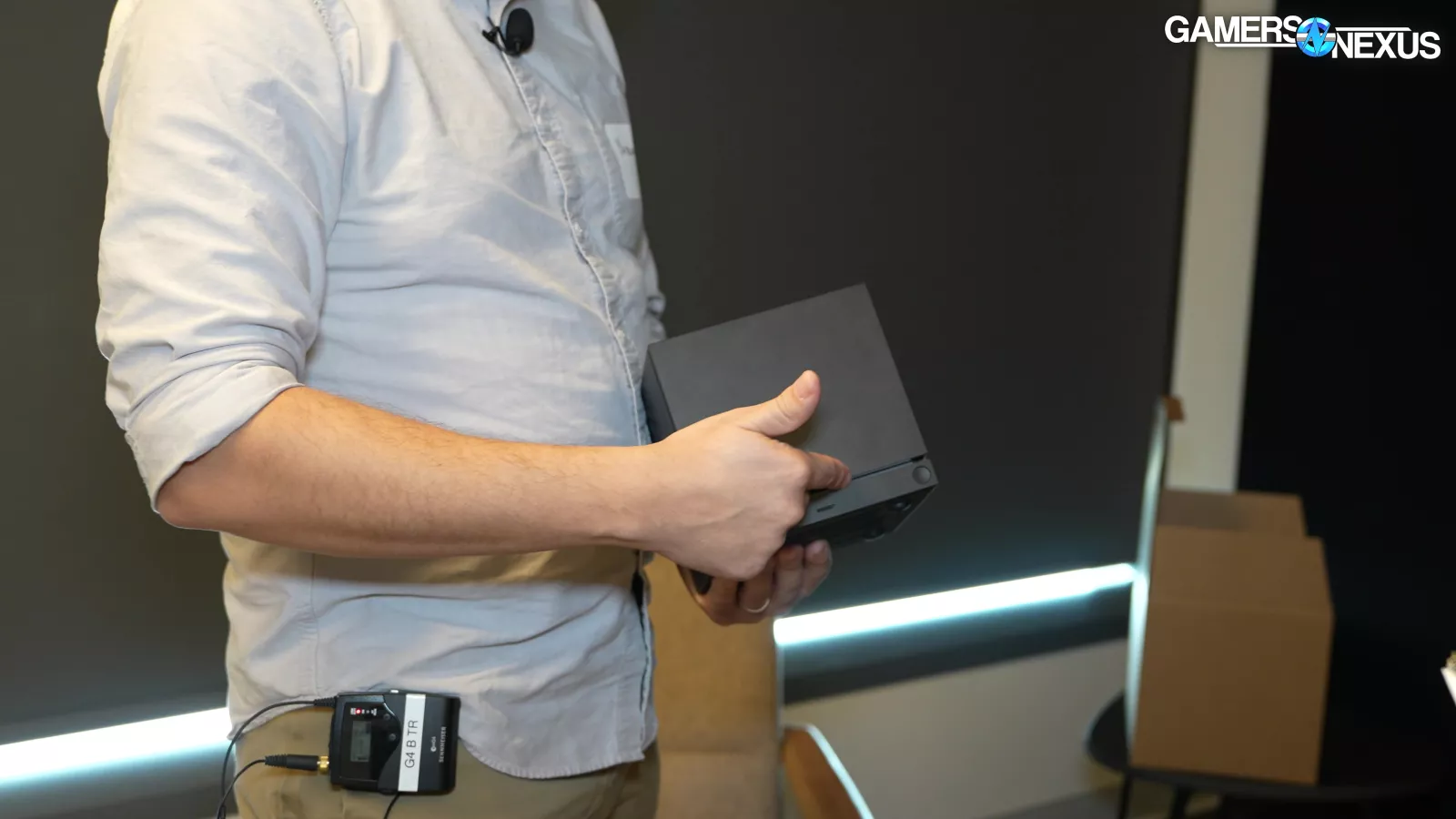
And then we also have perimeter intake here, 360 again, because it's really hard to plug every single one of those.

And then finally we have exhaust on the back because if you have cables attached here, you can't really push it all the way up against the wall, so you're always guaranteed some space."
The legs are short, which we pointed out, but Valve said its goal was to get the Machine to fit under a normal 6-inch shelf in a media unit, with the design team fighting for fractions of a millimeter. Valve claimed that the leg height allows for around 95% of the flow performance as a fully unrestricted bottom intake, which we’ll test as soon as we get it in. You absolutely need to make sure this does not go on carpet that conforms to the bottom, though.
Valve had some interesting solutions to its airflow and size limitations: There's a plastic ridge on the bottom of the Machine intended to block hot exhaust from recirculating underneath by dropping down slightly to the floor. Under normal conditions, we were told that the airflow split between the bottom vents and the perimeter vents should be 50/50. The rear of the case is made of metal for the highest possible porosity while remaining sturdy and the front is a magnetic plastic panel with the intention that users can print their own, maybe with better airflow. Valve showed us a number of alternative panels, such as an e-Ink display that they won’t be selling, but that they used for testing.
The relatively large aluminum finstack is mostly a single, shared solution: It contacts the CPU with phase change TIM, uses paste for the GPU, and then thermal putty for the rest. It doesn't directly contact the system memory or storage because neither are soldered to the motherboard.
The heatsink has four heatpipes that look like roughly 8mm solutions, paired with a single custom 120mm exhaust fan at the rear of the box using a custom cowling that gives slightly more depth in some areas for better pressure performance. Using an axial fan rather than a blower for a device in this form factor is unusual and created design difficulties, as opposed to (for example) the PS5, but was necessary in order to get enough airflow. The fan is heavily focused on static pressure, ranges between 500-2,000RPM, and has a blade-to-frame clearance of somewhere between 0.5-1mm. Valve wasn’t certain off-hand if the material is PBT or LCP.
Valve Engineer Yazan Aldehayyat: "One of the questions that people ask is like, how did you arrive at this architecture? And the answer, I think, is probably going to be surprising to most people, which is we literally designed the fan first. Because like, when you… the laws of thermodynamics are not flexible, right? If you knew how much heat you're trying to remove, you can—and you know the temperature the GPU's trying to reach, that tells you how much airflow you need. If you know how much airflow you need, you can kind of get to design the fan. So we really started by looking at what's on the market, how much airflow they can get at what static pressure, playing with blade geometries, like getting the optimal fan that we can."
The memory is upgradeable with disassembly of the Machine. We’re not sure if it’s two sticks or one at the moment.
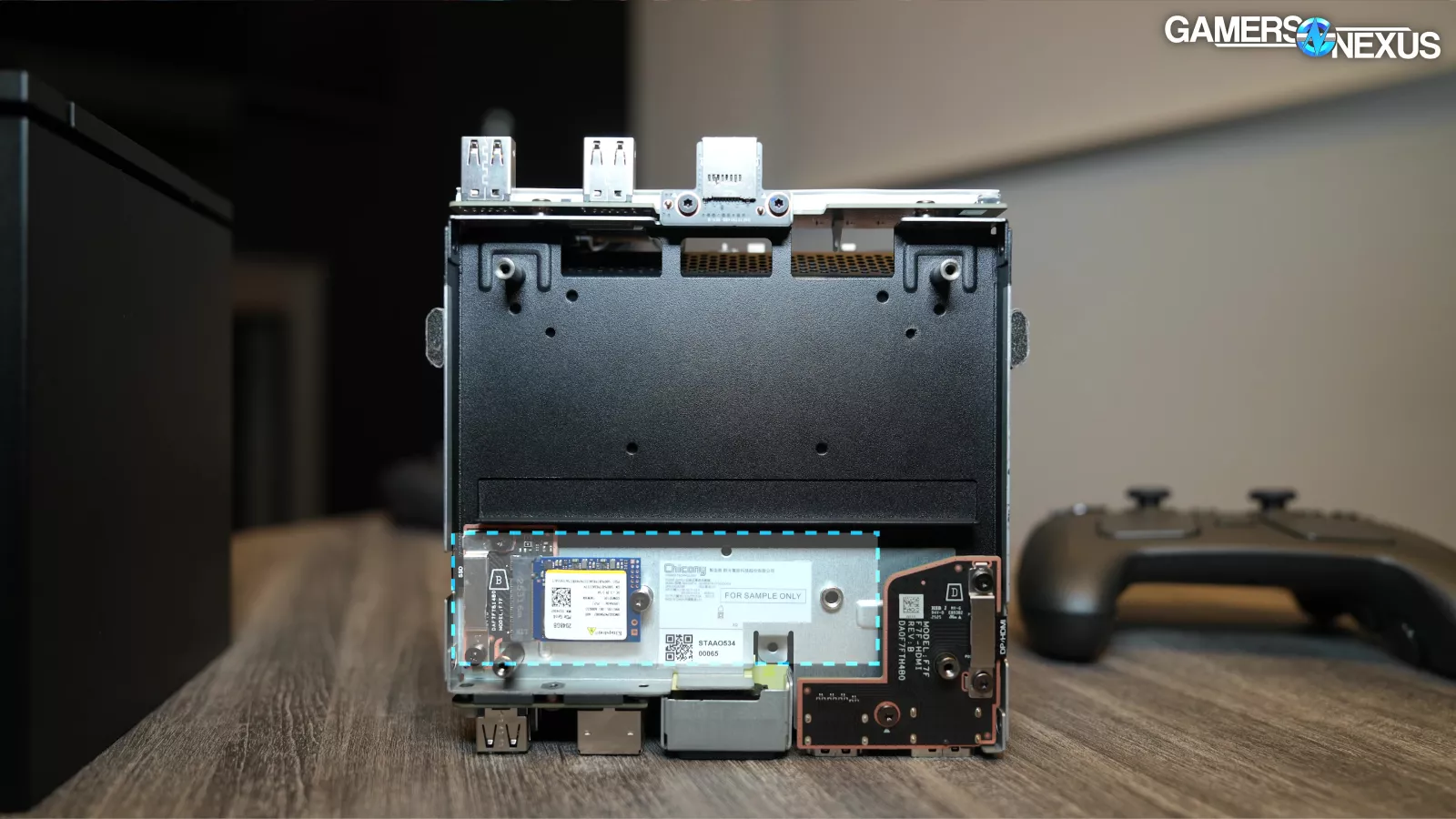
Replacing the stock M.2 2230 SSD should be significantly easier, and there's enough room for a standard 2280 drive.
The GPU's GDDR6 VRAM presented its own challenges, leading to a ten-layer PCB design.
Valve Engineer Yazan Aldehayyat: "Adding layers is typically done because you need the layers for routing, and that for us was the main reason, because we needed to… GDDR6 is really hard to route.”
Gamers Nexus: “Why is that?”
Valve Engineer Yazan Aldehayyat: “It's a lot of signals, very high speed signals, you know, they're very dense, so it takes a lot of layers to do that. And also, DDR's pretty power hungry, so you have to kind of use some layers for power routing and then other layers for signal routing.”
Gamers Nexus: “And is it still true that each trace for memory needs to be the same length?”
Valve Engineer Yazan Aldehayyat: “Yes. So we have to time delay, it's not even the same length, it's time delay. So like, keep in mind the propagation delay, because the top layers will have slightly different propagation delay than the middle layers, so you have to keep that in mind. Impedance, as well. So we have, basically all the bits have to arrive at the same time. The speed of light, you know, down to, I think, like a picosecond, if I remember correctly. [...]GDDR6 is really challenging. So, like, we had to do things like back drilling, I don't know if you're familiar with that."
Gamers Nexus: “I don't think so.”

Valve Engineer Yazan Aldehayyat: “It's basically like, you have a hole through the board to transition through layers, just a through hole. So if you're trying to go from like layer one to layer five, you have a stub that goes all the way down to layer ten. And what happens then, when the signal transitions through, it hits that, and some reflections go through the via, and they resonate and cause interference.”
Gamers Nexus: “Is this the same as a via? Or is it different from a via? Because vias I'm familiar with.”
Valve Engineer Yazan Aldehayyat: “It's basically, if you think about like the path that the signals take, right, they go from layer one, and then go to layer five, and they continue on layer five. Because the via has to go through the whole board, there's a path where it doesn't take. Like a stub, like it's a junction of the road, and the signal wants to take one way, but there's the other one which is a byproduct of just the manufacturing technology. So we have to go back and drill that path and remove it, so the signal doesn't travel both paths and cause interference.

Valve’s Jeff Mucha: “Backdrilling removes part of the via to only the part you're using."
Finally, there's a customizable LED bar on the front of the Machine that's used as a status indicator for when the display is off: for example, it can show download progress of games.
We're well-equipped to test all of Valve's thermal, airflow, acoustic, and power claims, so look forward to that at launch.
Steam Frame
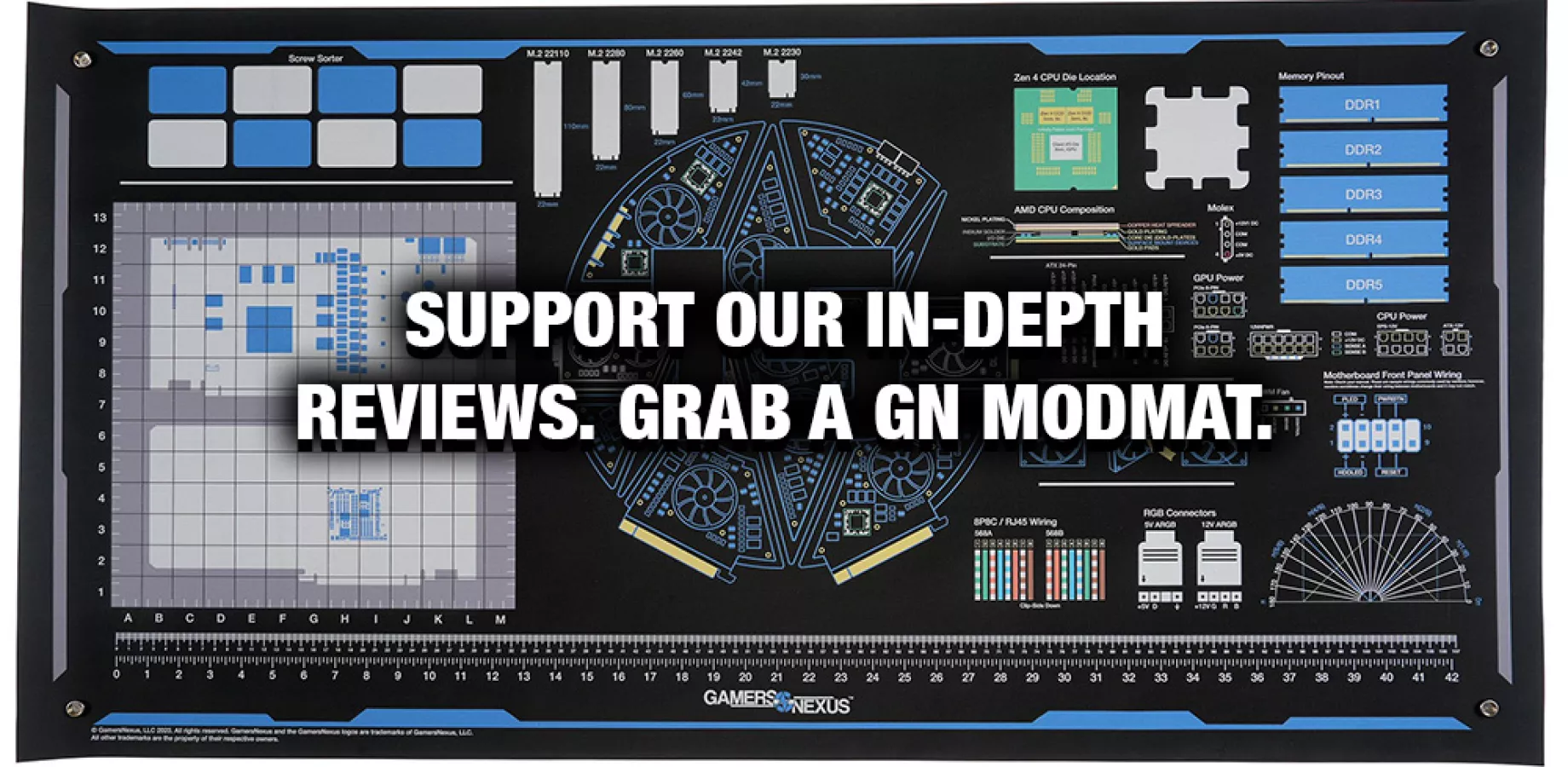
The Valve Steam Frame’s key feature is a bandwidth-saving foveated streaming solution, which is similar in some concepts to foveated rendering. The Frame is built modularly with a separable, fully contained face-mounted Arm architecture computer running SteamOS.
We last covered VR in detail back during the launch of the Vive and the Rift, back when the industry was going crazy slapping "VR Ready" stickers everywhere. That was a crazy time. It’s good that we as an industry have moved beyond two-letter initials for marketing...oh, wait.
Meta’s own ARM-based solutions are some of the more popular right now and Valve has launched the Index in the meantime, which it says is the price ceiling for the Frame.
Specs Summary
The 440g headset consists of a front-mounted 185g core unit and a back-of-head-mounted battery. Valve uses an onboard Snapdragon 8650 ARM solution with 16GB LPDDR5X of unified system memory and VRAM. The headset will have models with 256GB or 1TB of storage. The Frame has a microSD card slot, pancake lenses, 2160x2160-resolution LCDs, a 120Hz refresh rate with 144Hz “experimental mode,” and FOV up to 110 degrees. The 4 exterior cameras are monochrome but IR sensitive and the headset itself contains exterior IR illumination. Valve uses two internal eye tracking cameras for its new foveated streaming feature that we’ll get into soon.
Audio deploys four speakers built into the headstrap and two microphones in the headset. Valve also has a PCIe Gen4 custom connector for future accessories or attachments, potentially for third parties, with an example given of support for a color camera. The headset can also stream games directly from a PC using a 6GHz included USB router, bypassing traditional wireless routers and communicating straight between the PC and Frame.
The controllers have capacitive sensing for finger tracking, TMR thumbsticks (identical to the new Steam Controller's), a full set of standard controller buttons, regular AA batteries, and "Full 6-DOF tracking and IMU support."
Details
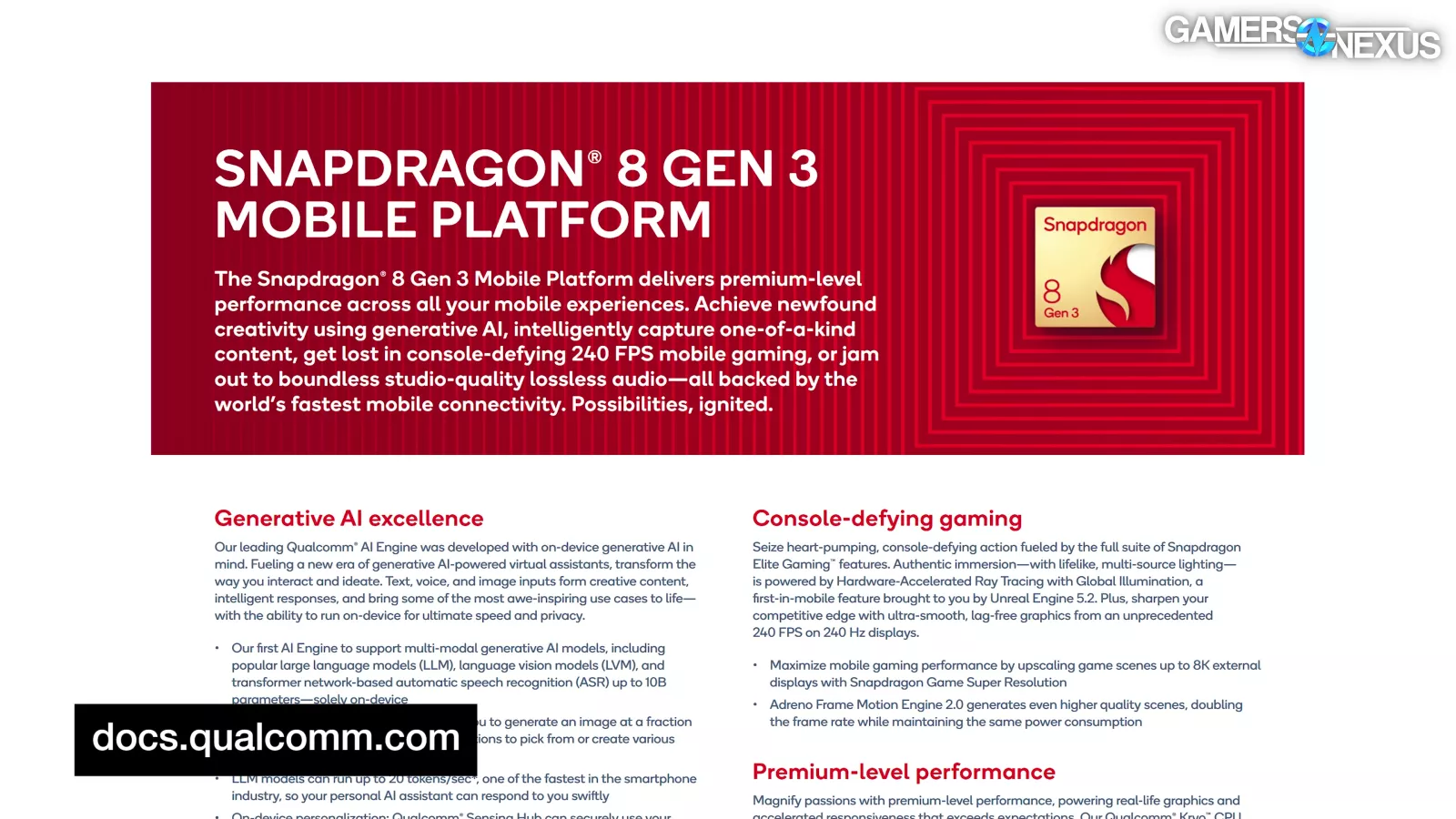
The Frame’s SOC is a Snapdragon 8 Gen 3 8650 on a 4nm process node. An ARM SOC in a headset isn’t new, but SteamOS on ARM is. This includes ARM-native compilations of DXVK and VKD3D, and it’s also the first time SteamOS is meaningfully expanding out of handhelds and into VR.
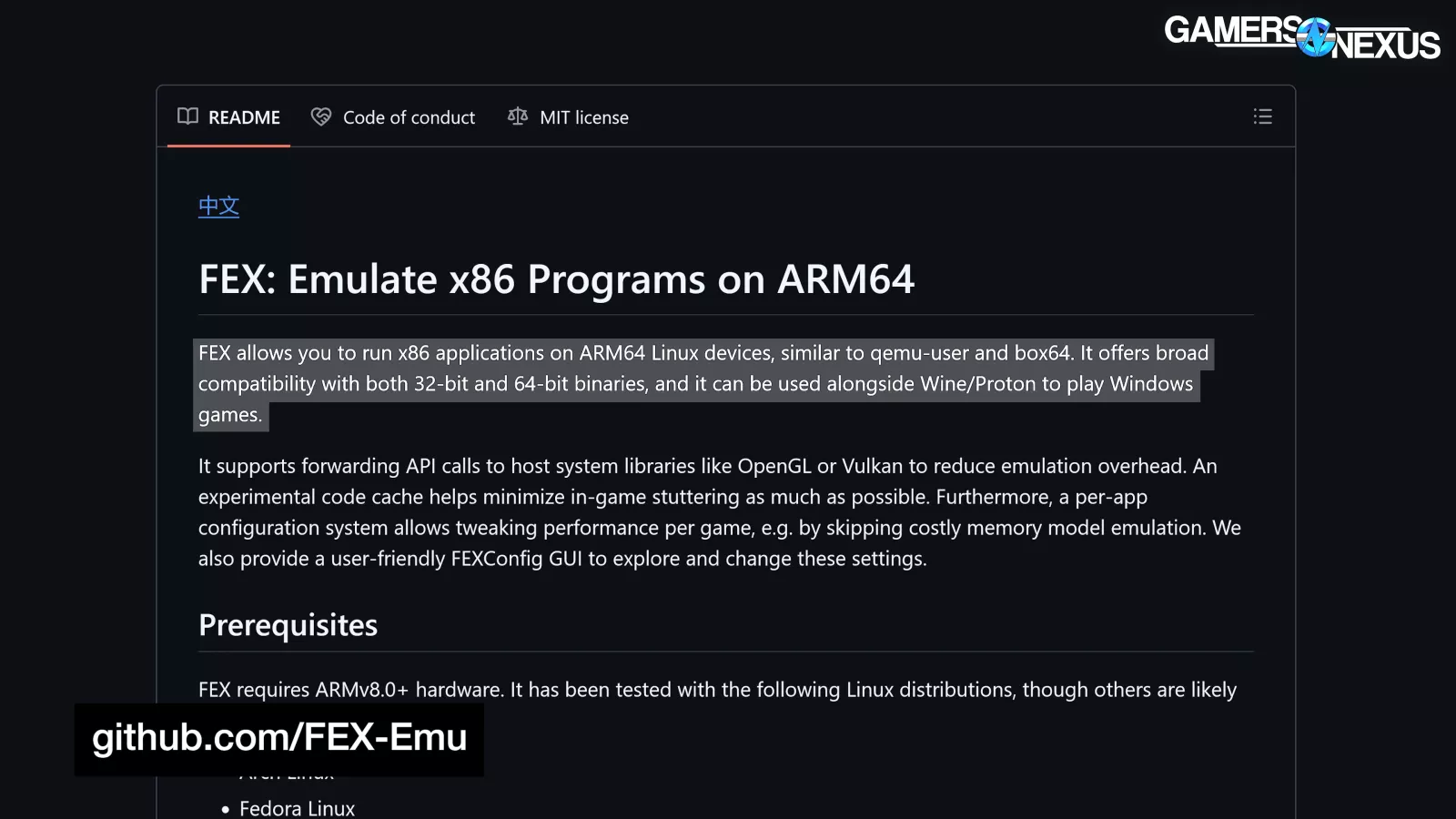
As it did with the Proton translation layer for SteamOS software compatibility, Valve has devoted significant resources to the development of FEX emulation.
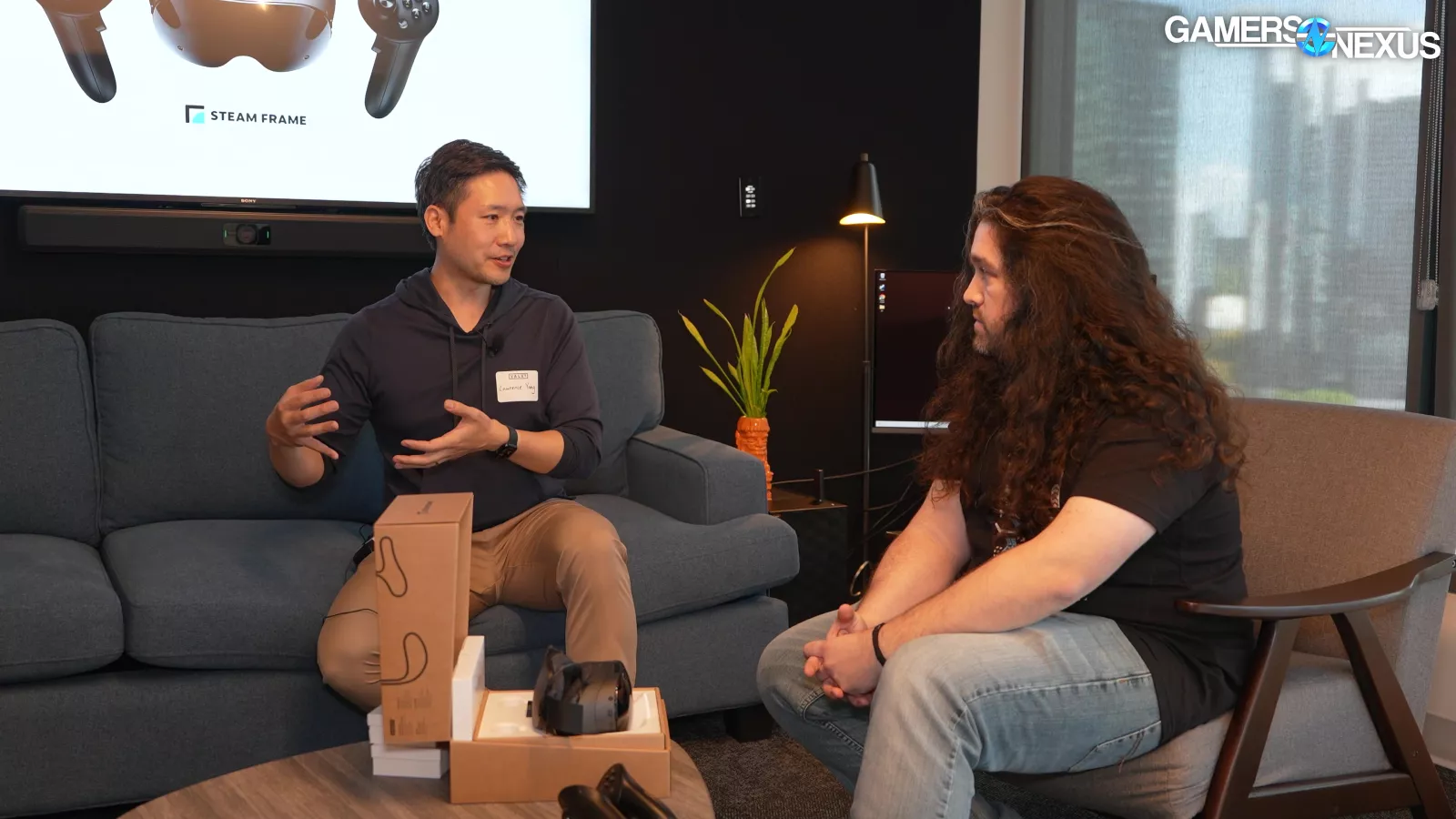
Valve Designer Lawrence Yang: “Similarly to how for Steam Deck we had to make a lot of advances in Proton to make sure that was really solid before Steam Deck could be an actual viable product, for Steam Frame we did a lot of work on FEX, which we see as a… "
Gamers Nexus: “Is it a translation layer?”
Valve Designer Lawrence Yang: "It's actually an emulation layer, so it's emulating the instruction set from x86 to ARM, so it's actually doing both Proton and FEX so that you can play x86 games standalone."
Like the existing Deck Verified program, there’ll be a separate Steam Frame Verified program specifically for running games locally on the Frame.
Valve Designer Lawrence Yang: "In a similar way where when we launched Steam Deck we had a lot of work to do on Proton, and as time went on we patched a lot of the holes, and then it became more of a surprise when a game didn't work through Proton on Steam Deck. We're doing the same process with FEX as well. So like, right now we're pleasantly surprised that so many games are just working, and we know that once we get these into developer hands, we'll be able to learn a lot more and ahead of launch we'll have a sizable library."

Valve also told us that developers will be able to ship VR APKs on Steam, and for games with multiple versions, Steam will automatically choose the appropriate build (but it can be overridden). Valve stated "APKs can also be side-loadable just like any non-Steam applications on Steam Deck. We expect that VR APKs that don't leverage proprietary APIs to just work."

The microSD card slot should theoretically allow seamlessly swapping libraries between other SteamOS devices on a single card, such as the Steam Deck and Steam Machine. Valve confirmed this for the Deck-to-Machine already.
As for use cases, Valve is pushing for the "use your headset as your display" approach, even for non-VR content. Thus far, nobody (including Apple) has been able to fully sell a mainstream audience on this approach.
Valve Designer Lawrence Yang: "So, I would say Steam Frame kind of represents a fundamental shift in the way that we think about VR: rather than being a PCVR accessory for your PCVR titles, we see Steam Frame as just a new way to experience your entire Steam library, whether it's VR or non-VR. And that high level decision kind of filtered down into all of the product level decisions that we made for the product."
Valve seemed primarily focused on streaming from PC-to-headset for the rest, which makes sense since Valve’s biggest advantage over Meta is years’ worth of games that were developed to be run on actual gaming PCs.

Valve Engineer Jeremy Selan: "Every single device comes with a dedicated wireless adapter. This is USB 3, and it's a 6GHz native router, and it talks directly between your PC and this device. [...] So there’s a whole bunch of channels and that allows us high bandwidth, high robustness, and low latency, and it’s a dedicated link just between these 2 devices. Similarly, this headset has two radios and antennas, which means we can guarantee that one of those antennas is locked off to this dedicated connection on 6GHz while WiFi is talking on the 5GHz spectrum simultaneously to your local router."
The dedicated wireless dongle isn't a new idea, but Valve has planned around it from the ground up. It's not strictly required, though; Valve told us that "The Steam Frame headset is Wi-Fi 7 capable, and when paired to your existing Wi-Fi, other streaming features (including Foveated Streaming and simultaneous 5/6Ghz ) are available and work great."

Alongside the dedicated wireless link, the second piece of Valve's pitch for local streaming is "foveated streaming." The naming is inspired from foveated rendering, which is a related concept that uses eye tracking to deprioritize the screen area in your periphery and render it at a lower resolution, allowing increased framerate. High FPS remains critical for VR headsets to avoid motion sickness in users, and so these technologies are used to focus the “density” of image quality on areas the user is looking at.
Eye tracking updates every 8-12ms according to Valve, although the hardware could go faster. This meets Valve's goal for stream quality while reducing power usage.
When we looked at Valve’s debug tool, the company shows user eye position and reflects the area of highest-quality rendering based on that. We tested this for a minute or two at the end of the session and couldn’t immediately notice any lag in the render quality shift, although we haven’t had time to fully analyze it. The software also showed where in the frame lifecycle and rendering pipeline the most time was allocated. It harkens back to some of our talk about simulation time error, aka animation error.
Here’s what Valve said about foveated streaming:
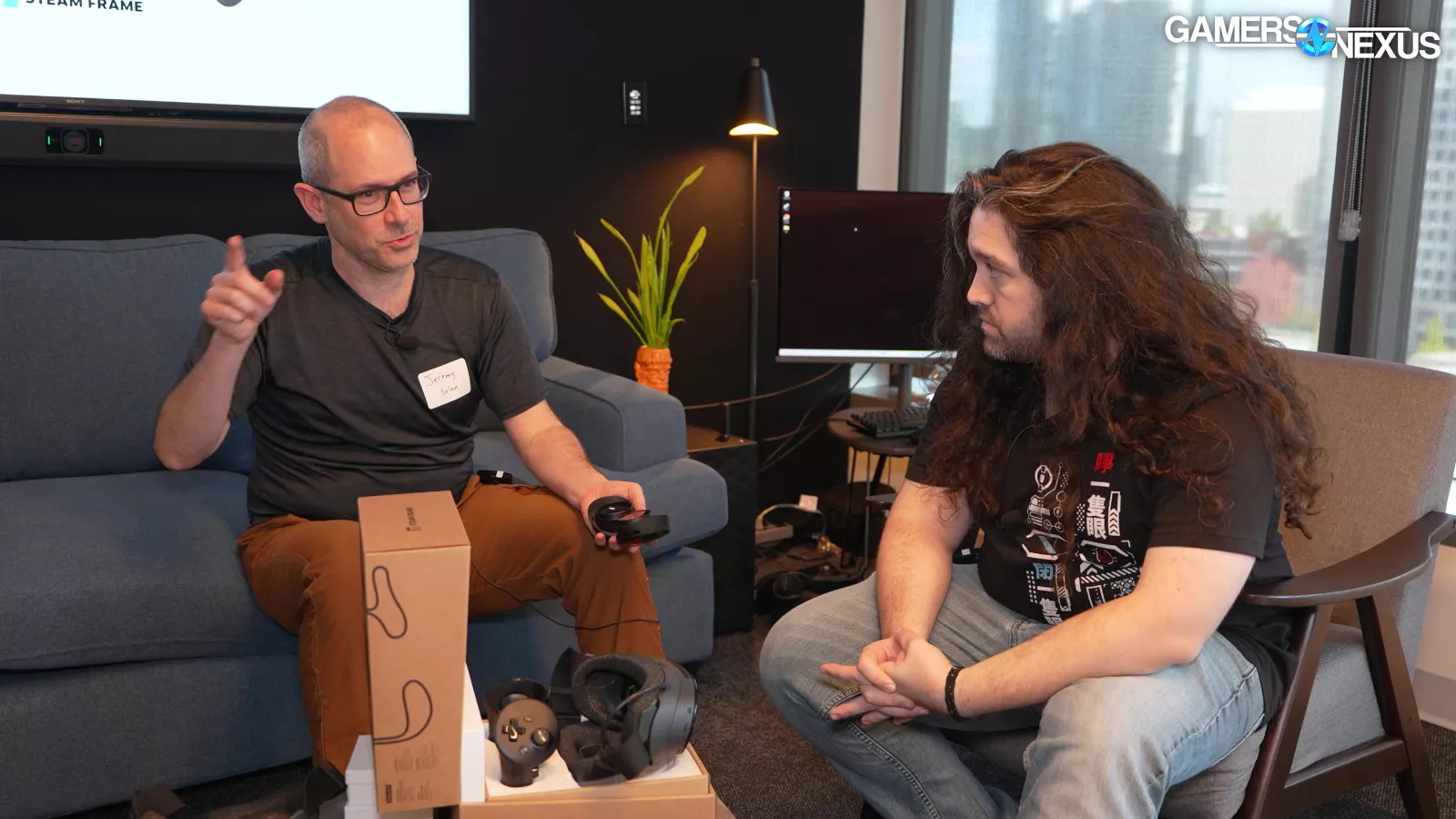
Valve Engineer Jeremy Selan: "So what we're doing is at the streaming layer, we're calling it foveated streaming, where the areas that you're looking, we send essentially the full, high quality content at the highest fidelity we can. And then for everywhere else you're not looking, we're borrowing those bits and also throwing them at that place where you're looking. So for instance if we had, say, one-tenth of the pixel area is where you're looking, which is a very common number, then that's effectively a 10x multiplier in effective bandwidth, quality, as well as reduced latency, because we can steer all of those bits to where you're looking. And that only works because the eye tracking is fast enough that as you look around the scene, we send the bits to where you're going to look before you land there."
If foveated rendering weren't already an established technology, we'd have a hard time believing that foveated streaming could be so reactive, but in the brief testing that we did with it, we couldn’t see any changes or difference in image quality. There are still a ton of variables involved (like the performance of the host PC), but when we asked Valve for a ballpark end-to-end system latency when streaming, we were told 10-20ms was the target, which includes encoding, transmission, and decoding.
Target bandwidth is 250Mbps, regardless of whether the headset is running wireless or wired, so that's the baseline for that loose 10x multiplier in effective quality that Valve is claiming. Everyone seems pretty confused about the Quest 3's max bandwidth, so part of Valve's advantage here is that it's shipping the streaming hardware with the headset, so everyone gets a consistent high-performance experience: for streaming, it doesn't matter what router you have or whether your PC has a wired internet connection. Foveated streaming is a system-level feature, so no additional support is required from developers.
In contrast to previous Valve headsets, the Frame is a standalone battery-powered unit with inside-out tracking: no base stations and no mandatory wires. It ships with a 21.6Wh lithium ion battery.
Valve also informed us that the Steam Frame hardware is not cross-compatible with the Index and Vive at this time.
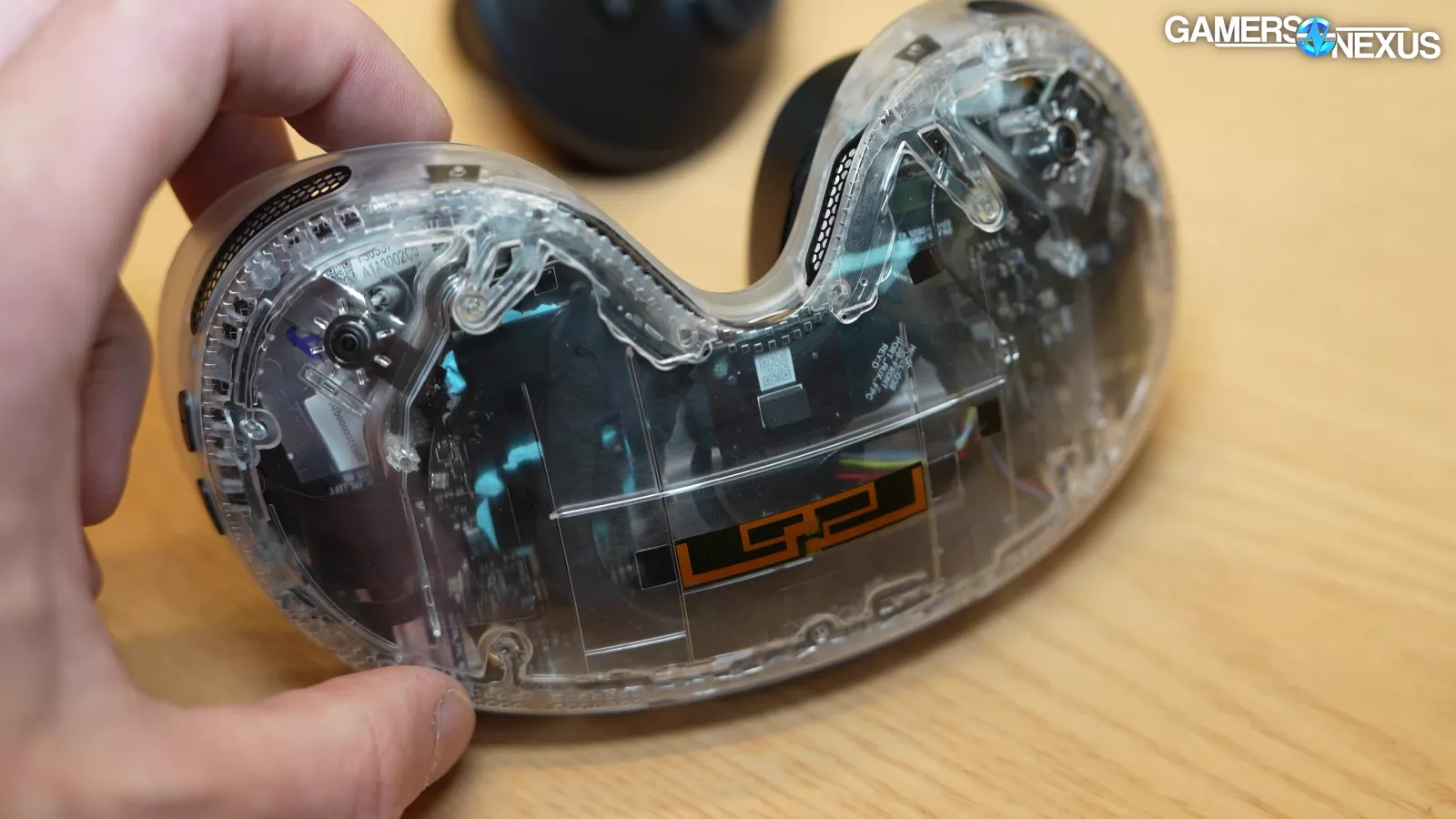
Valve claims that power consumption from nominal to peak loads can range from approximately 7W (when streaming) to more than 20W (when running games on the headset itself). Power is heat, so at 20W, Valve’s thermal solution comes more into play.
The headset is separated into two modular units: the core and the headstrap. The face gasket is attached with magnets, so the grossest part of the headset should be fairly easy to replace, while the core is fastened to the headset with three toolless clips. The core contains the optics, the compute, and cameras, while the headstrap contains the audio and battery.
And because everyone with a 3D printer is looking for a problem to solve, we’re sure people will make quick use of the modularity in this design.
We have a huge amount of detail on the Frame's thermal solution and how it keeps components (and users) cool, but we'll save most of that for an immediate follow-up video to this one.
The short version for today is that there are two heatpipes flanking the silicon, with the PCB area at the backside of the BGA package cleared to allow rear heatpipe contact and conduction through the PCB. Both of these heatpipes route to a finstack at the top of the headset, near the browline, with ventilation pointed up, out, and away from the user.
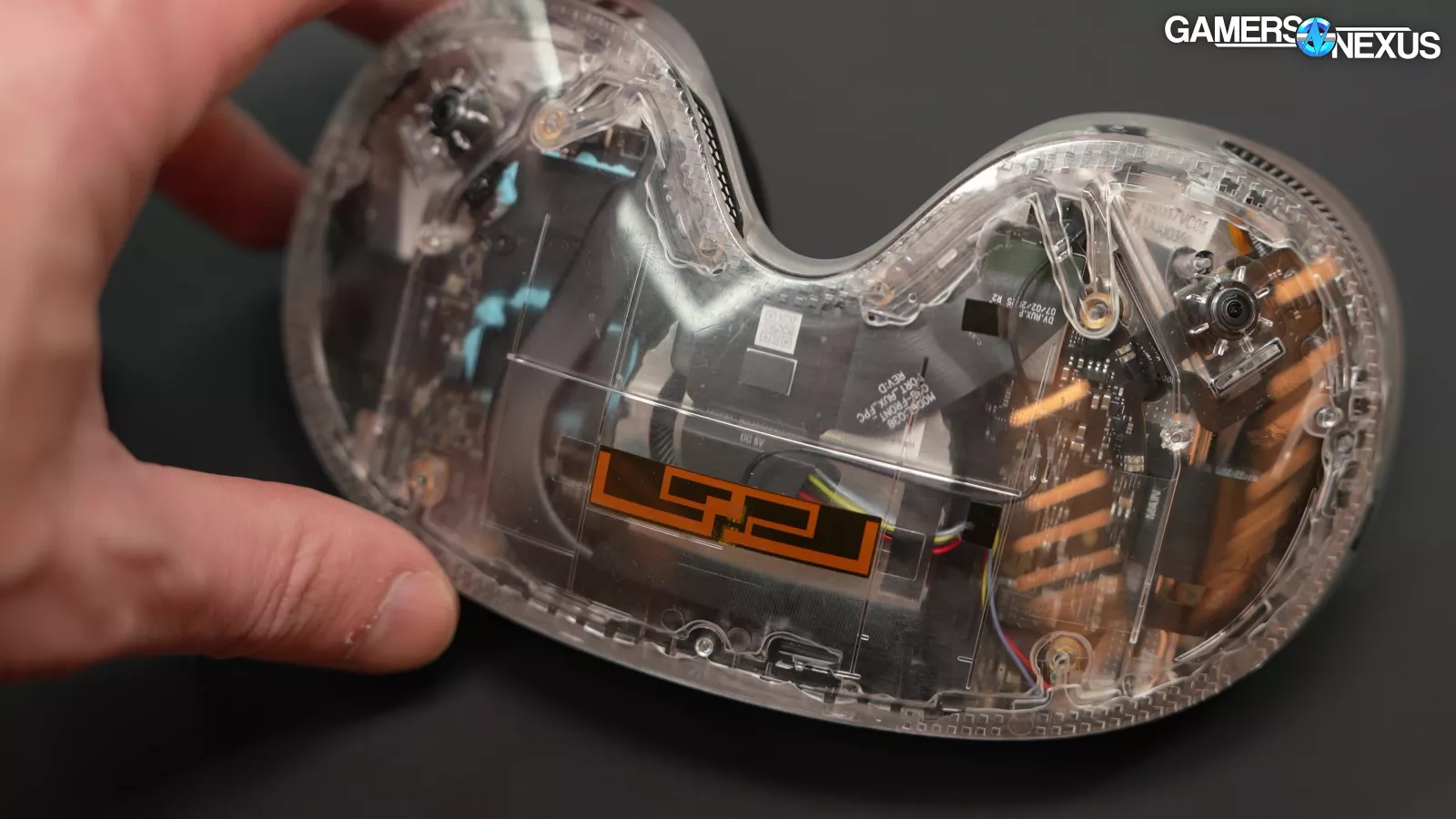
There's a single custom blower fan in the core module that's governed by thermistors across the PCB in addition to chip sensors. The displays are hotspots, but that's not necessarily a problem.
Valve Engineer Jeremy Selan: "The display behaves really well when it gets warm, it's actually a benefit. One of the things you want in VR is fast transition times, because we run at such high framerates—I haven't explicitly said it, but we work on the low end from 72 all the way up to 144Hz, and the best way we're able to get those fast transition times at higher framerates is through the warmth of the device. So you can go too far, of course, like a lot of heat—this is an LCD system, and a lot of heat in an LCD isn't good—but there's this happy medium in between where the device is warmer than ambient and can therefore achieve really fast times."
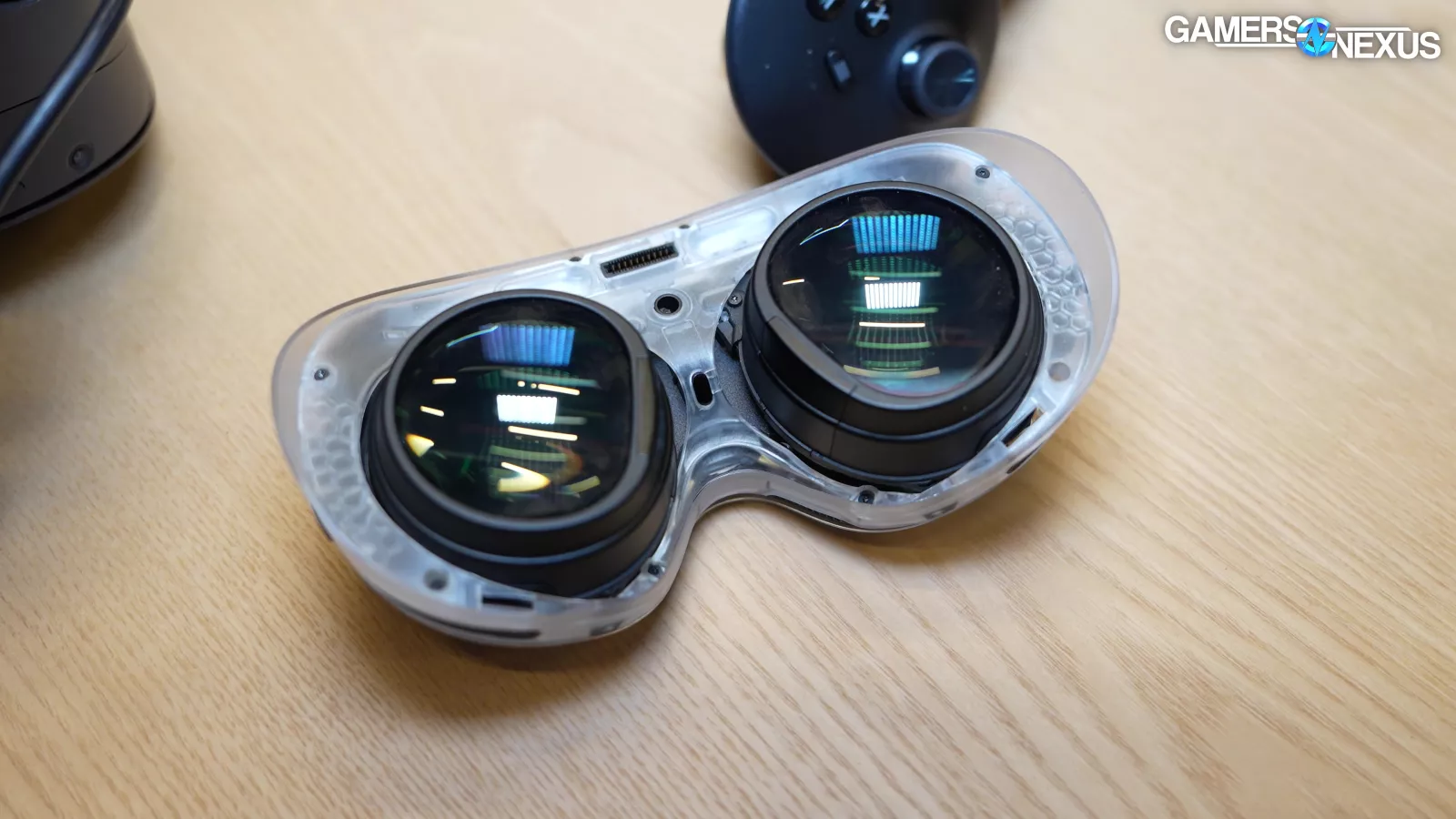
Valve's justification for LCD over OLED came down to "FOV, eyebox, cost, persistence, [and] weight." To avoid blurring, the duty cycle for the LCD panels is a flat 8% at all framerates, meaning that at 120Hz with ~8.3ms frametimes, the illumination period is ~0.67ms per frame.
Sound is provided via four 16mm drivers, two per ear, that have been tuned to cancel out vibrations.

Valve Engineer Joy Lyons: "The thing that's actually really interesting is when you integrate audio into a sensitive piece of equipment like the core module where there's all sorts of tracking that's happening, the vibrations can be a limiting factor in terms of how loud the system can get. And so we designed it with two speakers per side, they're actually oriented in different [...] orientations, so that they can cancel the vibrations at the IMU in the core, while actually still doubling the amount of sound that the user is getting."
As with thermals, we have a separate deep-dive coming up on acoustics. Joy from Valve had a lot of information to share here, so we’re including that with our separate thermal video.

Headphones can be supported by Bluetooth and 3.5mm adapters.
As for the controllers, Valve claims 40 hours of battery life, depending on the AA batteries used.
The controllers look similar to the Quest 3's at a glance, although Valve emphasizes "input parity with traditional game pad," which is part of its push to play regular non-VR games in VR. Basically, you get all the normal controller buttons in the normal places.

Also, the capacitive grip sensing has a limited gradient for the fingers and on/off sensing for the thumb. We haven't yet tested the Index for comparison.
Valve taking a third stab at VR (and a second stab at SteamOS, and Steam Machines, and the Steam Controller, and arguably the Steam Link) feels justified in the wake of the Deck's success. As we understand it, Valve has been working on the Frame since at least the launch of the Index in 2019, according to one of the engineers we spoke to. That's interesting context, since it means Valve had the confidence to start work on another VR headset even before the pandemic VR boom, the launch of Half-Life Alyx.
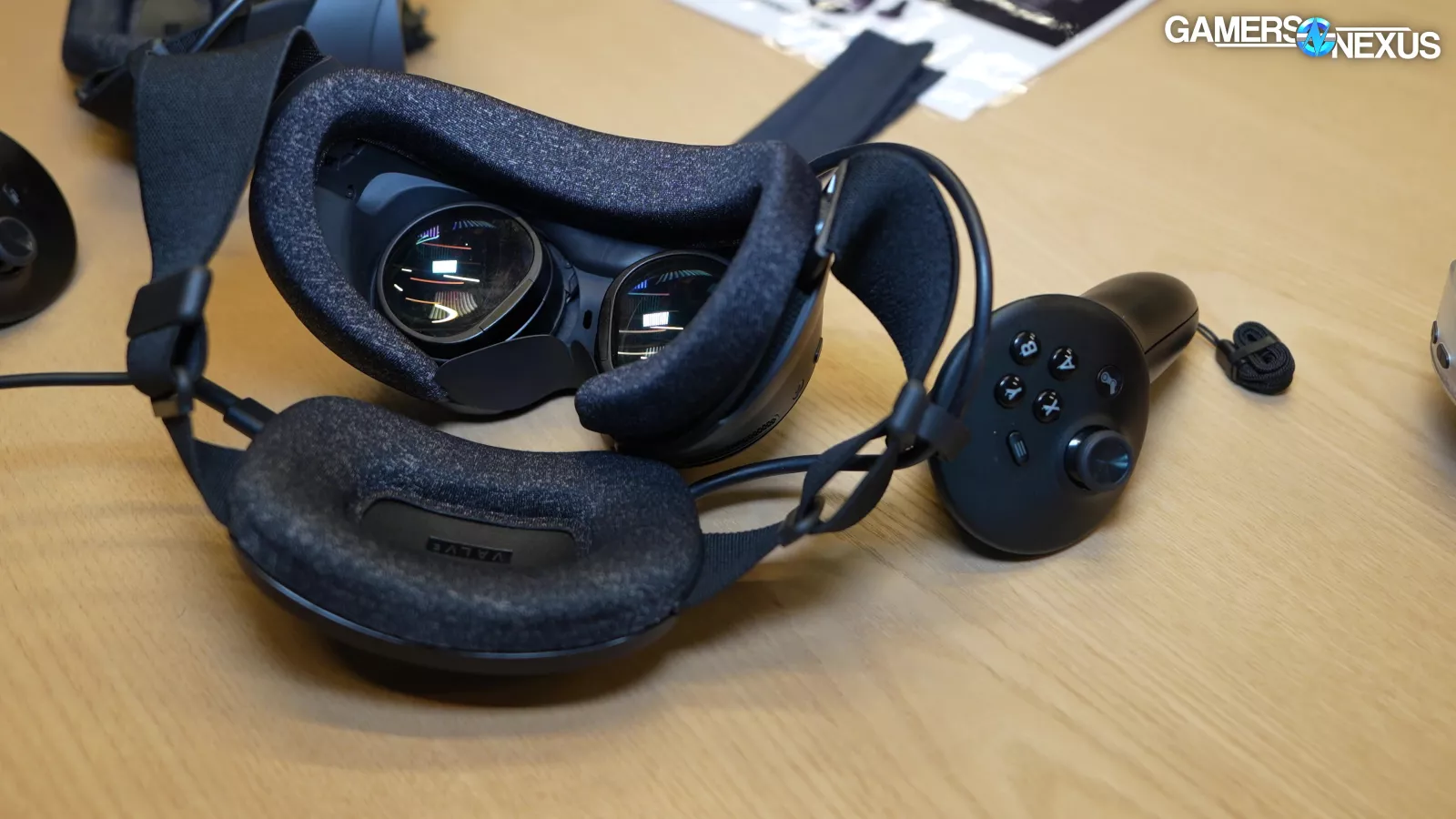
The Frame should be shipping to developers in the immediate future or already.
Steam Controller
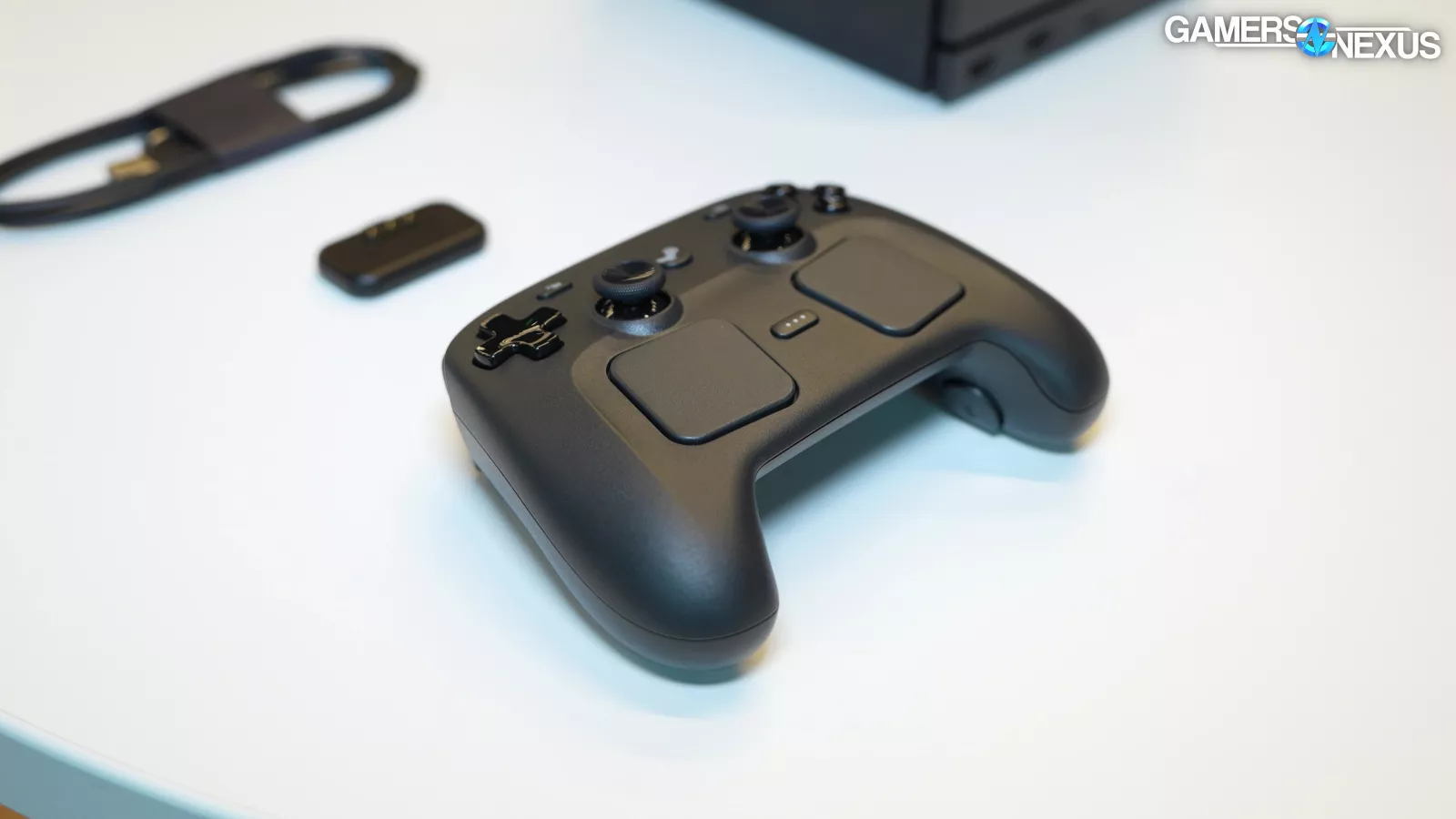
The new Steam Controller, which is not called the Steam Controller 2, follows Valve’s previous Steam Controller that has seemingly been memory holed and overwritten for its name after being dumped en masse for $5.
The controller uses Valve’s dual touchpad input and significantly repositions and reshapes the controller ergonomics versus the original Steam Controller. Valve noted that it benefits from the Deck’s popularity and showed that controller key mappings can transfer directly to the Controller.
Specs Summary
The new Steam Controller can connect to anything running Steam or the Steam Link app and connects via the Controller Puck wireless, Bluetooth, or USB. The controller contains a lithium ion battery that can be recharged through the puck or USB, the thumbsticks are TMR and have capacitive sensing, there's a gyro with grip sensing, and what Valve calls "more advanced and powerful motors for high definition rumble" in the grips. The inputs completely replicate the inputs found on the Steam Deck, minus the touchscreen.
Details
The "Steam Controller Puck" is a dedicated USB dongle that connects to the device running Steam and provides dedicated wireless connections for up to four Steam Controllers per puck. This is both spiritually and literally a successor to the original Steam Controller dongle; Valve told us that the wireless protocol comes directly from the original Controller. Bluetooth is still an option, but it has downsides.
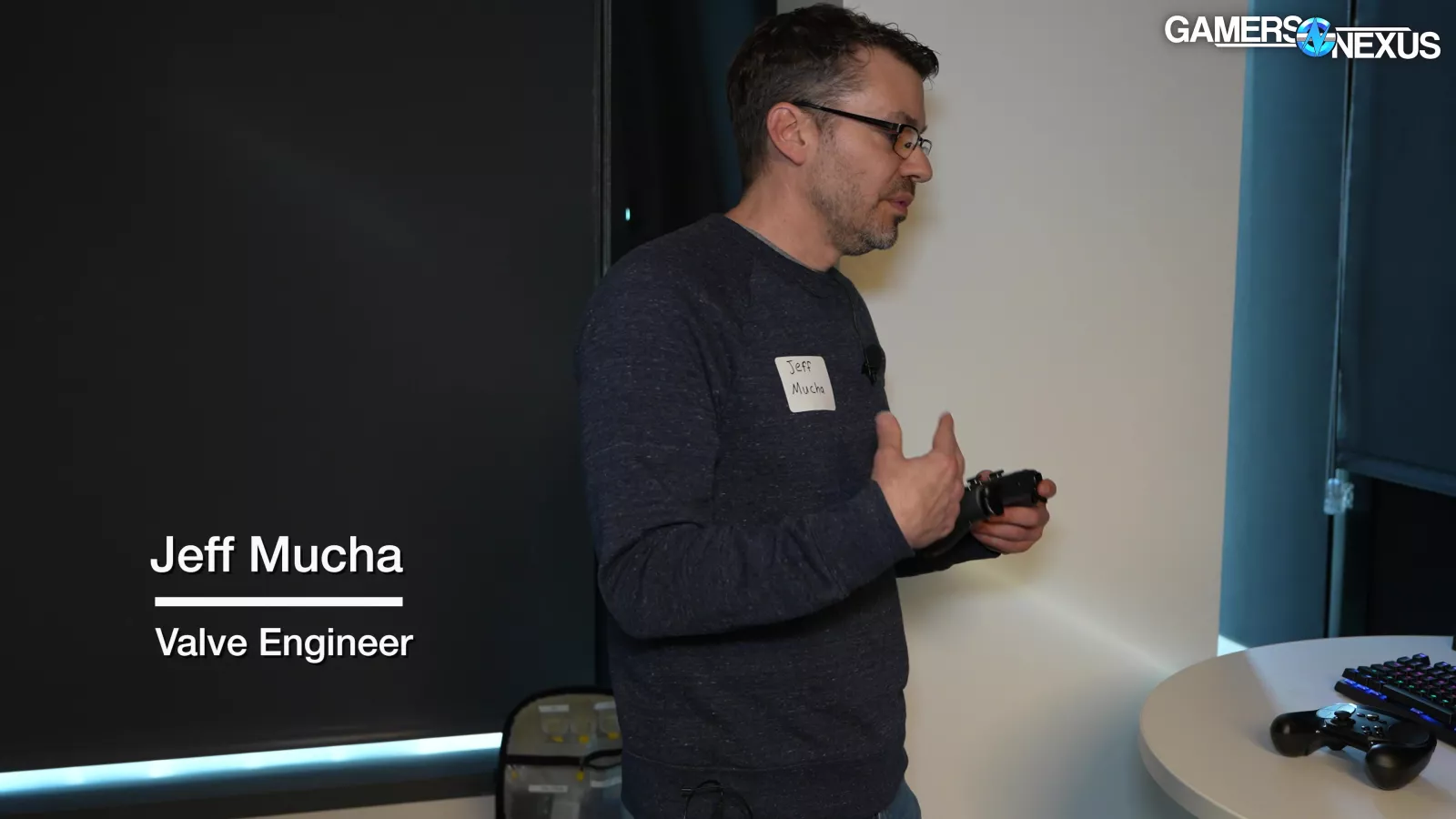
Valve Engineer Jeff Mucha: “So if you add multiple devices they share the bandwidth, and then when that bandwidth runs out you have, you know, issues with lag and dropout.”
Valve Engineer Yazan Aldehayyat: “But also, it's just that different PCs have different capabilities, different RF environments. It's more about the consistency than anything, like a device with Bluetooth will do really well, it's just that the consistency device to device and the consistency of the RF environment really comes into effect."
Maybe it's just us, but one of the most interesting aspects of the controller is the antenna design.

Valve Engineer Jeff Mucha: “One of the things for, like, ESD, when you have to go through compliance on a product, you have to zap it with the ESD gun, make sure that it's going to be good. With our antenna design, we landed on a design that solves the cost problem as well as ESD, because the antenna is basically grounded. So, if you hit it with ESD it doesn't blow out the front end of the chip. So, that was something that we learned on Index, and we brought that in for here.
Gamers Nexus: “So, the cost and also just functional for the…”
Valve Engineer Jeff Mucha: “Cost, functionality, and it actually gives us, you know, we say we have a five meter range by getting the antenna away from everything else. The controller has a lot of stuff all packed in there, so where do you put the antenna where your hands aren't going to be? [...] So the antenna, you can see the thumbsticks are here, the antenna's there, so it's kind of right in the ideal spot where you're not putting your finger up here in normal gameplay."
Valve claimed approximately 8ms of latency with a wireless connection through the Puck, but emphasized that performance shouldn't worsen as more controllers (up to four) are connected to it. The Steam Machine has the same functionality built-in, with a dedicated antenna (separate from the WiFi and Bluetooth antennas) for connecting up to four Steam Controllers.
The Puck also functions as a magnetic charger with pogo pins. Valve says its conservative estimate for battery life is 35 hours. The battery is a lithium ion pack. We asked about user repairability and replaceability of the battery. Valve noted that it's intended to be user serviceable in the sense that you can get to it with a screwdriver.
In addition to the touchpad haptics already found in the Steam Deck, the Controller contains more advanced haptics.
Valve Engineer Yazan Aldehayyat: "One example that helps us, think about like, speakers. So like, some speakers have really wideband performance that they'll play flat for a big frequency range. Some speakers don't, right, they're like a bass that only operates in kind of a very narrow frequency band. And so basically what we have here is something that's got… it's a linear motor, that has a wider bandwidth, so that it can replicate those higher frequencies [...] and waveforms better. So it's a better, higher fidelity speaker in some ways, just in a haptics world."
Valve was clearly proud of its new Tunnel Magnetoresistance (TMR) thumbsticks, which are apparently the hot new successor to Hall effect sticks.

Valve’s Jeff Mucha: "And you can see these thumbsticks, one of the things that, you know, Hall sensor thumbsticks have been a big thing in the industry; TMR is kind of new to the scene. It solves some of the power problems that Hall had, and keeping the sensitivity.
Gamers Nexus: “Are these off the shelf? Are they customized for the sticks that you guys are using?”
Valve’s Jeff Mucha: “We work with external suppliers, and we're not like fully integrating the thumbstick into, like the mechanical housings, but yeah we're using off the shelf suppliers for these."
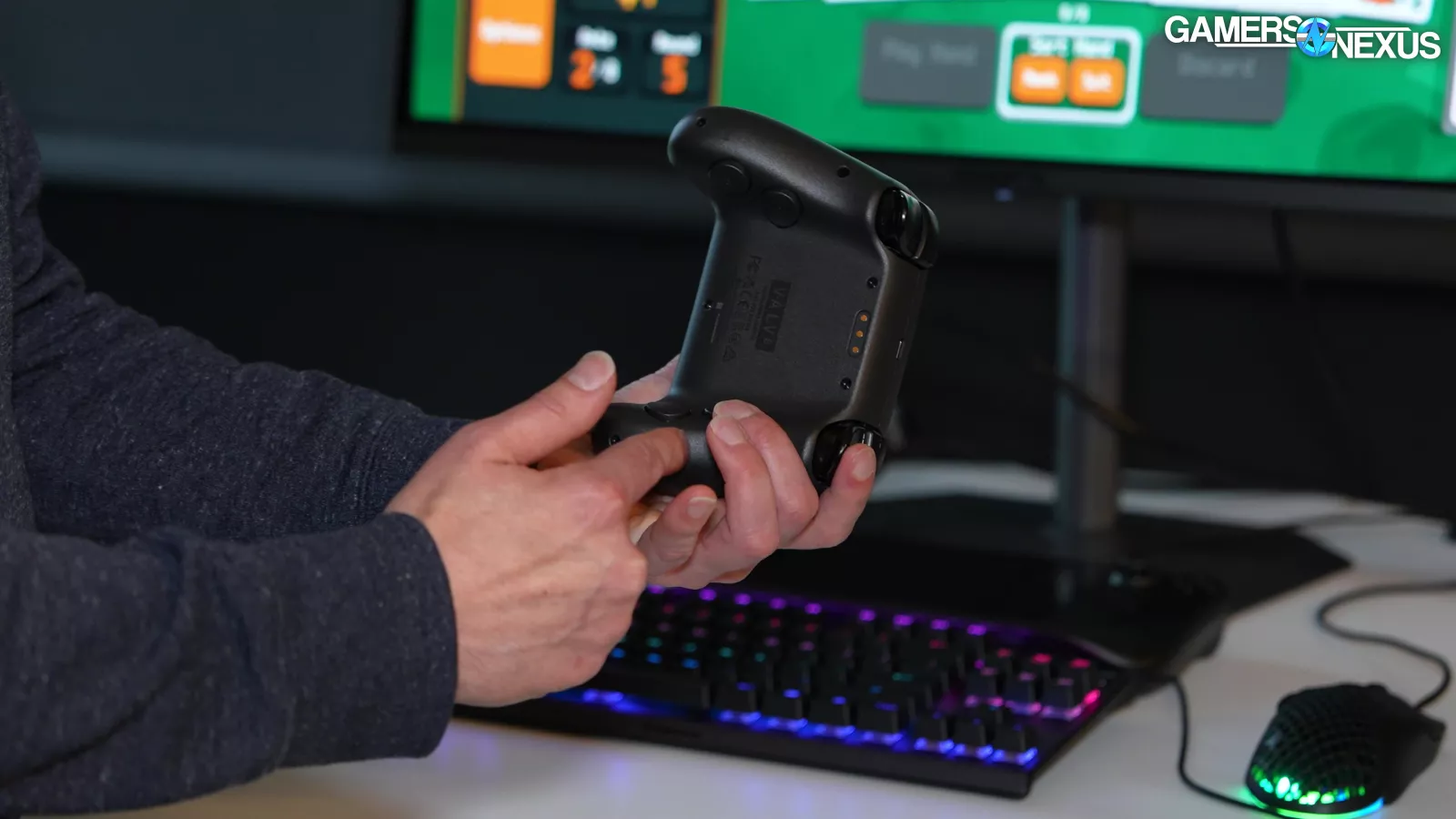
The Controller contains a 6-axis IMU, and capacitive grip sensing that can dynamically turn gyro controls on or off.

The new Steam Controller’s LED markers allow it to be tracked by the Steam Frame when in VR.
Conclusion

We have a lot more coverage to come, which includes a separate Steam Deck video. We will also have a video on the acoustics, power, and thermal engineering behind the Steam Frame.
We’re also really excited to test all of this and are interested in seeing the OS hitting desktops outside of the Steam Machine.
All of this hardware is on track for an early 2026 release date with pricing TBD.
